Food in Luang Prabang - A Guide to the Best Places to Eat
Luang Prabang is full of amazing food. From the delicious street food of the night market to the amazing breakfasts and local restaurants, we have tried it all. Check out our guide to the best food in Luang Prabang.
Luang Prabang, the cultural capital of Laos, is stuffed full of amazing food. From street stalls serving traditional Laotian dishes to fine dining, pizzas and everything in between, whatever your mood, this beautiful city has a dish for you. We have now spent nearly a month exploring all that Luang Prabang has to offer to the culinarily curious; we have eaten everything, from the humblest street food to dining in the most luxurious restaurants. This guide to Luang Prabang will show you the very best food the city has to offer.
As we are long term backpackers we generally seek out a more local, budget friendly, street food style of dining. When travelling the best food is very seldom to be found in air-conditioned, hotel restaurants. Come as we go down the backstreets and go off the beaten path for some hidden culinary gems in Luang Prabang… As well as some more luxurious options… we are human after all!
All over Luang Prabang you’ll see baskets of red chillies drying in the sun!
In this Luang Prabang food article you can find:
Disclosure: This article may contain affiliate links. We will earn a small commission from any purchases made through these links.
Where to Eat Breakfast in Luang Prabang
Luang Prabang is overflowing with fantastic places to grab a morning bite. These are just a few of our favourite places for breakfast:
Luang Prabang Morning Market
(location)
As dawn breaks, the streets surrounding the morning market become thick with the smell of burning charcoal, bubbling soups and grilling fish. Luang Prabang’s Morning Market sells everything from cooked dishes to the very freshest of meats - some still so fresh they’re trying to escape! It’s a whirlwind of activity, smell and colours with busy locals shopping for all they’ll need for the day ahead.
Breakfast is the most important meal of the day and Luang Prabang’s Morning Market is a great place to start the day. There are noodle soup vendors selling delicious bowls of steaming goodness as well as grilled sticky rice on sticks, deep fried bananas and any amount of fresh fruit. We would particularly recommend picking up some of the freshly grilled meats and a ball of sticky rice for a delicious traditional Laotian breakfast that will keep you full for hours.
We would recommend getting to the market early, perhaps right after you’ve seen the Morning Alms Giving Ceremony - you can read more about Luang Prabang’s Morning Alm’s Giving Ceremony here.
After 7 to 8 AM most of the truly local vendors will have sold their wares, packed up their stalls and moved on. There will still be stalls to see and places to eat, but the market will not be at its vibrant best, so get there early!
Street Side Porridge
(location)
One of our favourite breakfasts in the whole of Southeast Asia is rice soup or rice porridge. Vietnamese chao, Thai congee and Cambodian borbor are some of our favourite ways to start the day on this side of the world. We’re happy to report that Laos has its own excellent offering in this genre of breakfast!
Google Maps lists our favourite street side vendor as “No Name Rice Soup”, always a good indicator that this porridge stall will be a truly local affair. A few chairs under a plastic tarpaulin, alongside some charcoal fired cauldrons is all there is to this simple but delicious eatery. Selling soups and rice porridge, there’s a very limited menu but you can’t go wrong. Extremely cheap and completely delicious, we ate our breakfast here several times.
We always ordered the pork rice porridge and can highly recommend the extra marinated egg or for a creamy treat adding a poached egg. When your bowl comes to the table, pimp it as you like with soy, chilli or pepper.
Pasaniyom Traditional Cafe
(location)
Just down the road from Luang Prabang’s Morning Market you’ll find a crowd of people mobbing the entrance to Pansaniyom Traditional Cafe, an institution of the area. The cafe is famous for its excellent rice soups, as well as its delicious traditional Laos coffees, Thai teas and fried Chinese dough sticks.
Our go-to breakfast was again, rice porridge but this time paired with dough sticks and rocket fuelled Laotian coffee. It was a great meal, well worth the short queue and it completely set us up for a day exploring.
Everything we tried from the menu was delicious and reasonably priced, just be warned it is busy and the next door shop (which looks extremely similar) will always try to poach you. That being said, the next door shop is very tasty as well so it’s not the end of the world if you do get poached!
Despite looking similar, no bowl of rice porridge is ever the same!
French Bakery at Le Banneton Cafe
(location)
Sometimes you need a little dose of Western comfort. Sometimes you just don’t feel like starting your day with rice. On days like that we would turn to the patisserie and French bakery at Le Banneton Cafe.
The cafe is open all day serving breakfast, lunch and dinner. The menu covers everything from sweet French pastries to baguettes, sandwiches, salads and burgers. We would particularly recommend treating yourself to one of the breakfast set menus that will come with a tea or coffee, freshly squeezed fruit juices, baguette, eggs, ham or bacon as well as butter and jams.
All of the baked goods we tried were excellent. One of the few good legacies of the French Colonial era is that the Laotians have hung on to their baking expertise. Le Banneton is more expensive than the Laotian breakfast options we’ve listed so far, but it’s still very reasonably priced, especially the set menus.
The cafe also has a small shop selling French wine, cheese, deli meats and tinned goods. As an added bonus the dining room is also fully air-conditioned!
Lunch in Luang Prabang
The local restaurants, stalls and shophouses of Luang Prabang serve up phenomenal lunches for very reasonable prices. You cannot visit the city without trying some of its most famous local eateries and lunch is the perfect time to dip your toes (or tongue really) into the deliciousness that is Laotian cuisine.
Julie’s Village Noodles
(location)
A local legend, this small noodle shop sits in the front garden of a house next door to the Wat Xieng Thong temple. We have been here multiple times on all of our 3 stays in Luang Prabang, it’s just that good!
Julie’s Village Noodles has a limited menu of a few different noodle soups each available in combination with a small selection of meats. Our favourite was always the khao soi. If you’ve just come from Northern Thailand, be aware Laotian khao soi is nothing like the Thai dish of the same name. Khao soi literally just means “Northern Noodle” so it can vary wildly from place to place.
At Julie’s Village Noodles the khao soi is a rich, sweet, peppery, tomato based broth topped with ground pork and layers of silky smooth rice noodles. Alongside these near perfect bowls, comes a punnet of fresh herbs and crunchy green vegetables with a peanut sauce perfect for dipping green beans and leaves of lettuce into!
There’s nothing more comforting than a bowl of Laotian khao soi!
The whole meal is perfectly balanced, filling and a fantastic introduction to the nuance and subtlety of Laotian food. It is also very cheap! The restaurant gets extremely busy and will close as soon as everything has sold out. Don’t count on it being open for a late lunch. Get there early, it’s worth it!
Julie’s Village Noodles sits surrounded by some of Luang Prabang’s most beautiful temples; it would make a great stop during a temple tour of the city. Check out our guide to Luang Prabang’s temples here.
You can pimp your bowl with everything from herbs, lettuce, lime, chilli oil and deep fried garlic!
Roadside Noodle Soup
(location)
If Julie’s Village Noodles has awakened your craving for Laotian noodles, then another humble, yet mighty Laotian noodle joint can be found roadside next to a busy junction to the south of Luang Prabang’s Old Quarter. This nondescript restaurant serves fantastic crispy pork noodles as well as the standard backpacker favourites of fried rice and fried noodles.
We always ordered the crispy pork noodle soup and chose to have it with the delicious, chewy, yellow egg noodles. The broth was peppery and potent with garlic, with the crispy pork providing richness and a delicious crunchy texture from its crackling skin. This restaurant, like so many on this list, is super cheap and consistently great!
The restaurant is just a short walk away from Luang Prabang’s UXO Visitor Centre (read more about visiting UXO Lao here), so if you’re visiting this, or staying at the excellent Casa Nostra Hostel (check it out and book it here) it would be a great lunch spot.
Lao Omelette at Mr Lair’s
(location)
Sometimes you just stumble upon something great without even meaning too. One day we had left lunch a little late and were wandering around Luang Prabang’s Mekong riverside looking for a cheap delicious meal. It was here we stumbled across Mr Lair and his omelette stand. From the road it looks like just a tarpaulin topped stall, but behind the makeshift kitchen Mr Lair has a secret dining room overlooking the Mekong River.
Lao omelette doesn’t sound like the most exciting of dishes, but honestly it was one of our favourite things we ate in the whole of Luang Prabang.
Mr Lair’s omelette was fried until crispy on all sides, folded over and then stuffed like a sandwich, and we mean really stuffed! Beansprouts, sliced pork, spring onions and cabbage were all jammed inside and fried into the omelette. This crispy, cacophony of textures was completed by a small bowl of fiery chillies, crushed peanuts and sweet fish sauce which was served alongside. We would smash up a piece of the omelette, dip into the sauce and devour!
Seriously, these omelettes were sooo good, don’t miss them on your trip to Luang Prabang.
Tim Papaya Salad
(location)
Grilled meat and papaya salad is a delicious staple of Laotian cuisine. A particularly great example of this can be found at Tim’s Papaya Salad Restaurant on a picturesque side street in the heart of the historic Old Quarter.
The restaurant has a small menu of meats, sausages and salads. We can highly recommend their spicy papaya salad served alongside grilled chicken and sticky rice. The salad is unique and very spicy, with hunks of bamboo, thick ribbons of papaya and a rich, spicy, fermented dressing. It was the perfect accompaniment to the juicy grilled chicken, cutting through and providing a citrussy kick! Don’t worry if you can’t handle your spice, you can ask for it without chilli.
There is seating inside the restaurant but for the best table, head across the road and sit under a parasol on the concrete tables outside Wat Nong Sikhounmuang temple.
Banh Mi Stalls in the Old Quarter
Dotted all along the main market road of Luang Prabang’s Old Quarter are small street-side stalls and stands serving the backpacker favourite of Banh Mi. A leftover from the French colonial era, the Laotian’s have taken the humble baguette and have made it all their own. What’s not to love about the “best sandwich in the world”?
You can get endless varieties of this cheap and simple baguette, but we are always drawn to the crispy pork banh mi. You can get meat, egg, vegetarian or even vegan combinations.
You can get these anywhere along the high street for very little cash and they make an excellent meal on the go for those exploring Luang Prabang.
Rice and Curry from 89 Check-In
(location)
If you’re on a backpacking budget and looking for a super cheap, filling and delicious lunch look no further than rice and curry. Available all throughout Asia, rice and curry is a perennial favourite for backpackers in the know. Available in endless varieties and combinations these buffet style curry restaurants truly are one of our favourite ways to eat whilst travelling. You get to try loads of different dishes and get a true taste of the local food without the filter chefs will apply when cooking for foreigners.
Luang Prabang has an excellent rice and curry joint - 89 Check-In. A heaping plate of rice completed with any number of delicious curries on top was a meal we discovered far too late in our latest Luang Prabang adventure. Everything was fantastic but our favourites were the red pork curry completed with bamboo shoots and a creamy, sweet pumpkin curry.
There’s always so much choice at a rice and curry buffet!
This rice and curry stall was extremely cheap and well worth a visit even for those not on a strict backpacking budget.
For a quick digestif after your rice and curry feast, head a few doors down the road to the excellent Coffee Express.
For more information on where to find the best coffee in Luang Prabang, check out our coffee guide here.
The Best Places for Dinner in Luang Prabang
After a day out visiting temples, shopping in the night market and generally just soaking up the beautiful town you will need to hunt down some delicious dinner. Luckily Luang Prabang is a fantastic place for an evenings dinning, with options ranging from cheap and yummy local foods up to high class international fare. We have eaten extensively (what a complicated way to say we are greedy) in Luang Prabang and these are our top choices:
Market Street Food Feasts - Luang Prabang’s Daily Night Market
(location)
Come the evening, Luang Prabang’s Night Market absolutely dominates the historic heart of the city. Down the whole of the Old Quarter’s central road, hundreds of stalls unfurl and set up shop.
The stalls along the central street sell souvenirs, clothes and traditional Laotian handicrafts. If you’re after a street food feast, you will need to go to the southern end of the night market where a large food court sprawls out into the square and down the surrounding alleyways.
After the sun sets, this street food court is where you’ll find the majority of travellers in Luang Prabang. The stalls around the night market square sell everything from Laotian stir-fries to wontons, crepes and Korean fried chicken. It is a meeting of all the best street food that Laos and SE Asia can offer! If you’re backpacking, grab a group from the hostel and assemble yourself a sharing street food feast!
The food court in the square is ringed with vendors and bars with a large seating area in the centre. A stage provides live music and entertainment on weekends. There is a toilet off to the left hand side of the square (2000 kip charge).
Our top recommendation for night market munchings isn’t actually in the main square. Down a nearby alleyway, (find it on a map here), lies a treasure trove of local Laotian street food. Near the top of the alley you’ll find our favourite dessert in Laos, crispy, chewy, ufo shaped coconut pancakes. Super cheap and served in a banana leaf cup, these make for a perfect dessert after you’ve had your fill at the market.
The best tasty treasures lie deeper down the alleyway. The stall we loved the most didn’t have a name but was opposite the hotpot restaurant. A long trestle table is covered in banana leaves and on top of this, is a bouquet of skewers of grilled meats, fish and sausages. It’s a protein paradise! You just select the skewers you want and they toss them back onto the hot coals of a barbeque to caramelise, crisp and warm back up. Nextdoor you can order a spicy fresh papaya salad and sticky rice to go with your meaty (or fishy) feast.
There’s so many meats on offer in the Night Market!
This was one of our favourite meals in the whole of Southeast Asia. We would greedily order a set of grilled chicken wings, a skewer full of juicy pork belly alongside steaming sticky rice and zingy, spicy som tam salad. It was and is the perfect blend of flavours and textures. Grilled, juicy meat, crunchy papaya and nutty sticky rice all came together in our mouths as a symphony of texture and flavour, it was damn near the perfect bite!
If you order this meal, it’s purely a hands on dish, no cutlery, just your fingers and sticky rice to scoop the salad and tear apart the meat. Our pro tip: Bring wet wipes!
Further down the same alley you can find some great curry stalls as well as fruit shakes and salad stands. Every stall will sell water, soft drinks and Beer Laos.
Stir Fries at Ajam Mora
(location)
If you’re looking for a slightly more formal meal but still want to be in the heart of Luang Prabang’s Night Market, head down our favourite alley (see above) and go to Ajam Mora Restaurant.
Ajam Mora serves every kind of stir-fry, spring rolls, noodle soups as well as whole baked fish, curries and vegetables. We can especially recommend their fried rice with pork topped with an extra crispy fried egg. Slightly smokey from the wok with a gooey egg coating every grain of rice, it was exactly as satisfying as a proper fried rice should be.
Ajam Mora is alway busy with a lively crowd of backpackers, locals and other travellers, but the service is quick and efficient so you shouldn’t have to wait long for a seat.
As backpackers you really can’t go wrong with a plate of fried rice!
Fried Rice and Noodles at Atsalin
(location)
Speaking of stir-fries… you can find what may have been our favourite stir-fry restaurant a short walk from Luang Prabang’s Night Market. You will know you’re in the right place when you can see two enormous jet engine sized fans pumping out delicious wok smoke onto the street.
Atsalin Restaurant is a no frills, frenetic hub of stir-fried greatness. All the usual favourites are on the menu and you can’t go wrong no matter what you order. Our standard sharing set was fried rice (deliciously wok smoked) alongside spicy yellow fried noodles and a steaming plate of garlicky, oyster sauce laden morning glory. Cheap, tasty and extremely addictive we have frequently found ourselves back at Atsalin restaurant.
Local Wonton Noodles
(location) - No proper listing but it is around here!
Opposite the wok smoke of Atsalin, we found an amazing wonton and char-siu pork noodle soup joint. Sometimes you just need that comforting bowl of wonton-y goodness. Red pork noodle soups have supported us and comforted us throughout the whole of SE Asia. From the busy streets of Kuala Lumpur to small villages of rural Thailand, Chinese style wonton noodle soup is available everywhere and is a heart-warming, favourite for us long-term backpackers.
Luang Prabang’s offering in the wonton arena has no name on Google Maps, but don’t let that put you off. This fantastic, humble restaurant was always full of locals slurping down on bowls of noodles. Their wonton and char-siu bowl were incredibly generous. Piled high with juicy dumplings and delicious slices of marinated sweet red pork, it felt like a never-ending bowl of goodness. The firm noodles, rich broth and delicious toppings made for an excellent dinner or lunch, just make sure you go hungry!
Elegant Curries at Cafe Toui
(location)
If you’re looking for an authentic, delicious, sit down Laotian meal we cannot recommend Cafe Toui enough. The restaurant has a small, paired back menu of Laotian favourites. A little bit more expensive than some of the other options on this list, Cafe Toui has the advantage of being set in a beautiful building with a small intimate dining room.
The restaurant is perfect for a quieter, cosy (or even romantic) dinner. It is set just off and round the corner from the northern tail end of the busy Night Market.
The food was fantastic. We ordered the creamy pumpkin curry and a ginger spiced stir-fried fish. It was cooked freshly for us and tasted divine. The lightly spiced coconut and pumpkin curry was a brilliant counterpoint to the fresh, ginger-laden fish. The restaurant also offers beers, spirits and a selection of French wines.
The restaurant is open for both lunch and dinner. We had an excellent final lunch here on one of our earlier trips.
Classy Laotian Cuisine at Tamarind
(location)
Tamarind Restaurant is an absolute must for those who really want to explore a variety of Laotian dishes. Tamarind offers a large selection of set menus that let you sample lots of different traditional dishes, all from the comfort of a pretty and elegant dining room overlooking the Nam Khan River.
We really enjoyed our meal there, especially the spicy buffalo sausage and deep fried aubergines. The food was fantastic and presented in a way which would appeal to even the most sceptical of culinary explorers. Tamarind is more expensive than street food from the market but that is to be expected given the menu, dining room and service. It is still very reasonably priced considering the quality and variety of the menu.
Tamarind also offers what might be Luang Prabang’s most popular cooking class. So if you want to really deep dive into Laotian food and learn how to bring some of it home, a meal and a class in Tamarind would be a great way to start.
Wood-Fired Pizza at Popolo - One of the best pizzas in Asia
(location)
Okay, this one may be the upper bounds of a budget friendly backpacking meal, but if you’re looking for one meal to treat yourself to whilst in Luang Prabang, it has to be Popolo.
You can’t miss Popolo’s colourful exterior!
Set in a gorgeous colourful building on a quiet side street, Popolo serves what may be the best pizza we have eaten outside of Italy! The restaurant had come highly recommended to us, its praises being sung from Vang Vieng to Nong Khiaw by fellow travellers. They were not wrong!
Popolo pizzas are simply amazing! Thin, crispy, bases are topped with the most luxurious ingredients both imported and local. Our stand out pizza was the ‘French Kiss’. This may be our favourite pizza ever, we’re not exaggerating! Creamy Camembert is spiked with pickled apples and sweet caramelised onions all coming together into something so delicious it should probably be illegal!
The ‘French Kiss’ and the ‘Popolare’ pizza are both delicious!
Another standout dish is the burrata starter. A generous ball of local buffalo milk burrata is topped with sliced spring onions, cherry tomatoes and an aniseed laced holy-basil pesto. As you cut into the burrata it literally liquefied into a luxurious cream.
Popolo has a full menu of pizza’s, pastas and gorgeous looking salads. We always admired other peoples plates of pasta and bowls of salad but couldn’t resist ordering pizza’s for ourselves! If you indulge in their pasta let us know in the comments how it is!
As we have said, Popolo is definitely a ‘treat yourself’ meal for those on a long term travel or backpacking budget. However, it really isn’t an overly expensive meal and whilst you can always eat cheaply in Laos, it really is worth treating yourself sometimes. Pizzas range from 145,000 to 250,000 kip so far cheaper than you would find back home! Don’t deny yourself the pleasure just to save yourself a pound.
Other Restaurants - Fine Dining in Luang Prabang
If you are aware of the food scene in Luang Prabang you’ll notice that this list is missing some very famous options. Manda De Laos, Gaspard and L’Elephant are all amazing places to eat, but this list is more about the places you might not have heard of.
For those not on a backpacking budget or if you want to really push the boat out with a special meal, make sure you read our guide to “Luxurious Living in Luang Prabang”:
Whatever cuisine you’re looking for, Luang Prabang can provide. There are so many more places to eat than we could ever mention. This list doesn’t include the fantastic Indian or Sri Lankan restaurants or even the iconic French fare available in the city. Our only advice for eating in Luang Prabang is to go hungry and eat as much as you can in as many places as possible!
Thanks for reading,
John & Ellie x
#adventuresofjellie
Rice cakes are a popular Laotian snack!
You’ll never know what you’ll find on the streets of Luang Prabang!
If you’ve enjoyed reading this article, why not save the pin below?
All Our Other Luang Prabang Travel Guides
If you’re found this blog helpful, entertaining or you just fancy supporting us, please click the button below!
The Complete Luang Prabang Travel Guide
Our ultimate travel guide to Luang Prabang. After spending over a month in the beautiful Northern Laos city of Luang Prabang we share the best things to do and see. From where to stay (backpacker or luxury budgets), to guides to the most unmissable sights, our guide covers everything.
Sitting amongst the green mountains of northern Laos, the UNESCO World Heritage city of Luang Prabang is full of history, colour and culture. Surrounded by the Mekong and Nam Khan Rivers, the colourful streets of the Old Quarter are a charming blend of traditional Laotian architecture mixed with colonial French. The historic streets are studded with ornate temples, traditional wooden shophouses, restaurants and cafes. Sitting in the centre, the tree covered Phousi Hill rises up, crowned with golden spires reflecting the Laotian sun.
Luang Prabang is beautiful. We wish we could think of a better, less cliche way to describe the city, but there really is no other word. Just saying the name of the city brings a smile to your face, the ‘ang’s’ of ‘Lu’ and ‘Prab’ just roll off your tongue! It’s a small city that oozes calmness and tranquillity.
Most travellers spend only a night or two in the town as part of a larger Laos / Northern Thailand trip, but we feel it deserves so much more than that! We’ve spent nearly a month exploring Luang Prabang, and this is our complete travel guide on what to do, where to stay and what to expect on any trip here.
The best view of Luang Prabang is from the top of Mount Phousi!
In this Luang Prabang Travel Guide
Click to skip to the following:
Disclosure: This article may contain affiliate links. We will earn a small commission from any purchases made through these links.
A Short History of Luang Prabang
Modern day Luang Prabang is a cocktail of traditional Lao buildings and colonial French influences. The history of the city has shaped it into what it is today.
The city of Luang Prabang can trace its history back over 1500 years to the 6th century when it was called Muang Swa and was the capital of the Mon city state of the same name. The history of human habitation on the site goes back much further still with archaeological evidence showing settlements much, much earlier.
The city changed its name to Luang Prabang in the 1530’s. Cambodia gifted the golden Phra Bang Buddha image (statue) to the King of Laos. The statue was a legendary Buddhist artefact, allegedly originally coming from Sri Lanka and helping spread Buddhism to the Khmer royals of Cambodia. In honour of the statue and recognition of the city state's flourishing wealth, the King renamed the city to Luang (Royal or Great) Prabang (image of the Buddha). The city was filled with royal temples, architecture and beautiful buildings.
Luang Prabang’s Royal Palace can still be visited today. Read on to find out all about it!
Luang Prabang has had a convoluted and tumultuous history. It has been sacked by bandits, invaded by the French, the Thai and the Japanese. The city used to be the capital of Laos and was the seat of the country’s kings. The Royal Palace is still standing today (more on this later). For a large portion of its history Laos was a vassal state of Siam (now Thailand), the Prabang Buddha was stolen and returned twice from the city during this time. The Buddha became seen as a symbol of the right to rule Luang Prabang, its two returns to Laos were celebrated and memorialised, with temples hosting the statue on its way home.
The capital was eventually moved to Vientiane in the centre of the country. The King's role was slowly diminished and power syphoned away to the colonial French. The French also added their flair to new buildings, adding another layer to the city’s architectural style.
The Old French Bridge - spot the monks crossing the bridge!
World War Two saw the city invaded by the Thai, the Japanese and then finally reoccupied by the French. The French were eventually driven out following the fall of French Indochina in 1953 and over the next few decades, fighting through the “Secret War”, the modern rulers, the Lao People's Revolutionary Party (LPRP for short), came to power.
Luang Prabang is a layer cake of all these histories and peoples. Despite its history of invasion, looting and subjugation the city’s architecture is spectacularly well preserved, earning it UNESCO World Heritage Status.
Where is Luang Prabang?
The UNESCO World Heritage city of Luang Prabang is located in Northern Laos in the province of the same name. The town lies northeast of Laos’ capital Vientiane around a 6 hour drive (approx 310 km / 192 miles) away.
Luang Prabang can also be spelt Louang Phrabang.
The centre of Luang Prabang sits on a rounded peninsula, surrounded on both sides by the Nam Khan River to the east and the mighty Mekong River on its western edge. The northern point of the peninsula is where the confluence of the two rivers meet, with the Nam Khan River flowing into the larger Mekong. In the centre of the island peninsula, the hill of Mount Phou Si rises up.
The peaceful Nam Khan River
And the busy Mekong!
The town sits in a valley, ringed on all sides by tall limestone mountains. Opposite the town, on the other side of the Mekong River, is the district of Chomphet and two of Luang Prabang’s most mythical mountains, the small peaks of Phou Thao and Phou Nang. There is a fascinating legend behind the origins of these two peaks which involves a Giant, a King and a feast of 12 luckless ladies. If you’d like to read this crazy story, check out our guide to Chomphet and our quest to find a hidden jungle shrine.
Despite being the ancient capital, Luang Prabang still retains a small town feel, with traditional shop fronts, quiet streets and bustling markets.
The majority of accommodation in Luang Prabang can be found in the Old Quarter surrounding the base of Mount Phou Si and running alongside the Mekong and Nam Khan riverfronts. Read on to find out where we’d recommend staying!
When is the Best Time to Visit Luang Prabang?
Luang Prabang has a tropical climate and sees temperatures in the high 20s / early 30s (celcius) throughout the whole year. The hottest months are April and May and the coolest months are December and January.
The ‘dry season’ runs from November to April where you can expect hot sunny days and minimal rainfall. These months are the peak times for tourism in the town, so expect to pay a little more for accommodation and book early as it can get very busy!
During the ‘dry season’ bamboo bridges are built across the Nam Khan River!
The ‘wet season’ runs from May to early October. During these months, expect very hot and humid weather along with the occasional torrential downpour. The wet season is considered to be Luang Prabang’s ‘low season’ with fewer tourists and cheaper accommodation.
We have visited Luang Prabang three times now. Twice during the dry season and once at the very end of the wet season. During all our visits we’ve been extremely lucky with the weather with hot, sunny days and the only occasional downpour.
If you do visit during the wet season, the rivers will be a lot higher and the current stronger. During this time you will be able to take boat trips along the Mekong, but some water based activities such as kayaking / floating riverside accommodation will not operate. The waterfalls of Kuang Si and Tat Sae will be in full impressive force during this time!
What to pack for a trip to Luang Prabang
Whenever you plan to visit, make sure you pack:
Good shoes for walking
Appropriate temple wear - something to cover your shoulders and knees
Suncream
Mosquito repellent
A wet coat
Festivals in Luang Prabang
April - Laos New Year - Songkhran
Celebrated in mid-April, Laotian New Year (Pi Mai Lao) also known as Songkhran, sees Luang Prabang turn into one large water fight as locals and tourists splash each other with water to wash away the past.
September - Boat Racing Festival - Boun Suang Heua
The date for Luang Prabang’s annual boat racing festival varies depending on the year, but the festival is usually held sometime in September. During the festival, locals race against each other in enormous wooden longtail boats up and down the Nam Khan river.
If you’re visiting outside of the boat festival and get lucky, you may still get to see the locals practice their racing. We were having a sunset beer and were treated to a racing display from a small boat of locals chanting and rowing in unison!
October - Festival of Light
Held at the end of Buddhist Lent, the Festival of Light is a spectacular celebration of fire and light, with the temples and monasteries all adorned in star shaped lanterns and candles.
During the festival, huge dragon boats are lit by candles and are sent floating down the Mekong to pay homage to the Naga and water spirits.
If you’re in Luang Prabang before the start of the festival, just pass by any temple and you’ll usually see locals and monks making up paper and bamboo lanterns as well as huge dragon shaped boats.
If you’re planning to visit during a festival, make sure you book your accommodation well in advance as it’s likely to sell out very quickly!
How to Get to Luang Prabang
Luang Prabang is extremely well connected. There are train, bus and flight links to other Laotian towns and cities as well internationally to Thailand, Vietnam and China.
Getting a flight to Luang Prabang
Luang Prabang’s International Airport lies 5km north of the city.
Flights depart and arrive in Luang Prabang from Vientiane in Laos, Bangkok and Chiang Mai in Thailand, Hanoi in Vietnam as well as several cities in China.
The airport is very small with a few duty-free shops and food stalls. When you arrive you can obtain a visa on arrival (you can pay in USD or Thai baht).
Once through border control there are ATMs to withdraw cash and many different SIM card stalls - see our introduction to Laos page for visa, ATM and SIM information.
Outside the terminal there will be plenty of tuk tuks and minivans waiting to take you to the city. Tuk tuk drivers will charge 40,000 kip per person and minivans will charge 80,000 kip per person.
Getting to Luang Prabang by high-speed train - Laos / China Railway
Arrowing north from the Laotian capital of Vientiane to northern Laos and the border of China, the newly opened Laos / China rail is a super modern, super speedy and much smoother transport alternative to Laos’ bumpy roads.
High speed trains depart Vientiane daily, passing through Vang Vieng and arriving in Luang Prabang in only 2 hours! If you were to drive between the two cities, it would be a 6.5 hour bumpy ride.
You can only purchase tickets up to 3 days in advance, therefore we’d recommend booking tickets via 12Go. You can book further in advance this way and 12Go will book your tickets as soon as they are released - book tickets here.
When you arrive at Luang Prabang train station, head out the station and down the steps to find minivans waiting to take you into the city. A ticket to the city (including luggage) will cost you 80,000 kip. Just buy a ticket and let the driver know where you’re staying.
Bangkok to Luang Prabang on a budget.
If you’re on a backpacking budget and want to keep costs low, then you can actually travel all the way from Bangkok to Luang Prabang by train!
We did exactly this via the 133 express train that left Bangkok’s Bang Sue Railway Station in the evening, travelled overnight across the border and arrived in Vientiane the next morning. From Vientiane we took a taxi to the high speed train railway station north of the city, boarded an early afternoon train and arrived in Luang Prabang in time for a sunset beer on the Mekong! It was super easy and much cheaper than flying. Plus the views from the high speed train were spectacular!
To read more about travelling between Thailand and Laos by train, check out our guide here which gives you all the information about the overnight train, what to expect at the border and how to book tickets for both the Thai and Laotian trains.
Travelling by Slow Boat on the Mekong River - Huay Xai to Luang Prabang
The slow boats of Laos are a bucket list item for many travellers. Plying their way up and down the Mekong River, slow boats connect Luang Prabang with Huay Xai on the Thailand / Laos border.
The journey is incredible, you just sit back and watch the world go by as you pass by buffaloes, fishermen and small children playing in the river. It’s one of those journeys where it really does feel like you’ve travelled back in time and are getting a glimpse of the ‘real’ Laos.
The colourful slowboats of Laos!
There are two ways to travel. The more luxurious, sitting on a private boat with a small group of travellers with an on board bar / food provided, or the cheaper, more fun way with the locals. The local boat is very much a local experience, with travellers, backpackers, locals and market produce all crammed onto the boat.
Whichever type of slow boat you decide on, the trip from Huay Xai to Luang Prabang will take you 2 days to complete, with an overnight stopover at the small riverside town of Pakbeng. Boats run in both directions everyday. If you’re coming from Thailand, the nearest city to Huay Xai is Chiang Rai. You can book your slow boat tickets here.
To help decide which boat to take (we are lucky enough to have experienced both) read our guide to the slowboats of Laos as well as what there is to do in the small town of Pakbeng below.
Arriving in Luang Prabang by bus
As the main traveller hub in the north of Laos, Luang Prabang is extremely well connected by bus.
For the north of the country, there are buses that can connect you to Nong Khiaw, Luang Namtha and Phonsavan. To the south, there are bus routes connecting Luang Prabang with Vang Vieng and Vientiane.
If you are travelling from Vietnam on a very strict budget you can even get a bus all the way from Hanoi!
Tickets can sell out extremely quickly, so make sure you book in advance.
The roads in Laos are littered with deep potholes. If you’re travelling by bus, expect a very bumpy ride! We would also issue another warning; even if you have booked a ticket, it doesn’t always guarantee a comfy seat. Laotian bus drivers will stuff the bus with as many passengers as they can fit on, regardless of how comfy that will be for said passengers. It is not uncommon for extra seats to be added in the aisles and for a 2 seater bench to be for 3 or more people. The extra ‘seats’ they bring out are definitely not the comfy sort and will almost certainly be a bright yellow beer Laos crate covered with a cushion!
We’ve had many bus journeys being jolted and bumped around, where we've tessellated ourselves into a very cramped minivan, with more people sitting in each row than seats.
Also, all luggage (apart from very small rucksacks / handbags) are stored on top of the minivan and covered with a tarpaulin. If you’re travelling in wet weather, there’s a very strong chance your main bag will get wet - so make sure you put the rain cover on!
If you’re a passenger princess who wants a smooth ride, a comfy seat and shudders at travelling like the locals do, then don’t travel by bus. Instead hop on the more expensive high speed rail or fly!
You have been warned.
There are too many bus routes to mention them all one by one, check out 12Go for all of your options:
Where to Stay in Luang Prabang?
Luang Prabang is a relatively small city and wherever you end up staying it won’t be more than a 30 minute walk to get to the Old Quarter. Whatever your budget or style of accommodation there’s plenty to choose from. Over our different visits to the city, we’ve stayed in everything from budget friendly to mid-range and super luxury. Here’s our recommendation on where to stay.
Budget Accommodation - Guesthouses and Hostels
If you’re looking for cheap, budget friendly, comfy accommodation we cannot recommend a stay at Casa Nostra or Casa de Jardin enough.
Casa de Jardin in all its glory!
Both hostels are run by the same family and both are fantastic! In Casa Nostra we splashed out and stayed in their very comfy ‘private king room’ that came with an en-suite bathroom, air-conditioning and even a sofa. In Casa de Jardin, we stayed in a very comfy private room with a shared bathroom. The family who run both the hostels are some of the friendliest we’ve encountered on our travels. They also offer guests free breakfast in the morning and family dinners 3 times a week.
There are also dorms for those on a strict backpacking budget.
In both hostels we were able to hire scooters, do our laundry, arrange excursions and book onward bus tickets.
Book your stay in Casa Nostra here or Casa De Jardin here.
Where to Stay - Mid-range Hotel
For a mid-range stay, we loved our stay in Villa Oasis. The hotel offers comfy rooms with en-suite bathrooms, a swimming pool and a restaurant overlooking a lily pond. It was a beautiful stay, right in the heart of the city.
Book your stay in Villa Oasis here.
Super Luxury, High End Accommodation in Luang Prabang
If you’re after a luxurious stay in Luang Prabang, then Satri House Hotel would be a perfect match! We obviously didn’t use our backpacking budget to stay here, but were lucky enough to be treated to a wonderful break here by John’s parents. The hotel offers 2 pools, a great breakfast and beautiful rooms that feel as though you’ve stepped into a Laotian version of Downton Abbey.
Book your stay in Satri House Hotel here.
The hotel is also opposite the famous Manda De Laos restaurant for those looking to indulge further. To read more about our stay in Satri House, check out our guide to luxury living in Luang Prabang here.
All Luang Prabang Accommodation
To book your stay in Luang Prabang, use the map below to search around for all the accommodation on offer. Just insert your travel dates and see all your choices.
What to do in Luang Prabang
Luang Prabang is full of amazing palaces, hidden alleyways, beautiful temples and fantastic waterfalls to explore. Below are just a few of the amazing things you can get up to during your stay in Luang Prabang:
Explore the Old Quarter
The star of the show when it comes to Luang Prabang is its historic Old Quarter. Awarded UNESCO World Heritage Status the streets are a wonderful cocktail of traditional Laotian, French, Burmese and Chinese architecture.
Traditional slope roofed shophouses rub shoulders with colonnaded colonial architectural gems. It’s an incredible blend of very different styles but somehow they all work together as a harmonious whole.
One of the great treats of Luang Prabang is simply to walk and explore the stunning streets and amazing alleyways of the city.
The Old Quarter is full of restaurants, coffee shops, bars and craft boutiques. You can easily spend hours just wandering around the pretty lanes.
The historic district is also home to the majority of Luang Prabang’s most popular attractions.
Where is the Old Quarter?
The Old Quarter of Luang Prabang stretches out between the Mekong and Nam Khan Rivers. On a map you can roughly say it starts from around Wat Mahathat all the way to where the Nam Khan curves around the headland and joins the Mekong.
The streets of Luang Prabang’s Old Quarter are a beautiful mix of traditional Laotian and French colonial architecture!
Temples of Luang Prabang
Luang Prabang is the cultural and religious centre for Laos. Its very name is derived from the holy ‘Phra Bang’ Buddha statue. The city is steeped in holy history and religious buildings. Despite its tumultuous record Luang Prabang has preserved a plethora of incredible temples from across its storied past.
If you’re only in Luang Prabang for a short amount of time, we’d recommend making sure you visit the following temples:
Wat Xiengthong
(location)
Perhaps the most famous and certainly one of the most stunning of Luang Prabang’s temples, Wat Xiengthong is more than just a building of worship. The temple houses the Royal Carriage House, beautiful grounds and utterly incredible monastic buildings.
The Royal Carriage House is especially impressive, its vast gold and red front gleams under the Laotian sun. Inside the carriage is simply enormous. A huge wooden behemoth used in state funerals.
The temple buildings are richly decorated both on the inside and the out, make sure you don’t miss walking around the back of the main temples to see the shining embossed trees and story mosaics that have been set into the walls of the buildings.
Wat Xiengthong is open everyday from 8 AM until 6 PM. Tickets cost 30,000 kip to enter.
Wat May Souvannapoumaram
(location)
Just next door to the National Museum, Wat May Souvannapoumaram is the largest single temple in Luang Prabang. It’s vast 4 tiered red roof stretches up to the sky. Inside its enormous prayer hall a gigantic golden Buddha sits amongst a crowd of smaller Buddha statues.
Outside the golden wall of the temple really is something special. The shining surface is completely filled with stories and histories carved into the golden surface.
Wat May Souvannapoumaram is open everyday from 8 AM until 5 PM. Tickets cost 10,000 kip to enter.
Wat Wisunarat
(location)
Wat Wisunarat (also known as Wat Visoun) is the oldest of Luang Prabang’s many, many temples. The plain exterior of the main temple building belies the exquisite interior. Carvings, golden statues and a collection of religious artefacts crowd together in a kaleidoscope of Buddhist beauty. Above all of this, the red, black and gold painted roof covers everything with every beam and tile inscribed and decorated.
Outside in the peaceful temple grounds is the austere white and stone stupa of That Makmo otherwise known as the ‘Watermelon Stupa’. When you visit you’ll see why!
Wat Wisunarat is open everyday from 8 AM until 5 PM. Tickets cost 20,000 kip to enter.
The ‘Watermelon’ stupa of Wat Wisunarat
Other Luang Prabang Temples to Visit
The temples listed above are just the ones we feel you cannot miss on a short trip to Luang Prabang. However, there are plenty more to see in the city. In fact, wherever you are, we’d say you’ll never be more than 5 minutes walk to another beautiful temple.
You could easily spend a full day just exploring the temples and still not see half of them. If you have the time, we’d recommend donning your best temple wear and following our map below to look at some of Luang Prabang’s highlights as well as some lesser known temples.
Temple Wear
If you’re planning to visit these temples, please be respectful and follow their strict dress codes. You can only enter if your shoulders and knees are covered. Crop tops and leggings are strictly forbidden.
You will need to remove your shoes before entering the temples.
The temples of Luang Prabang are all unique and are all stunning. Here’s a gallery showcasing some of our favourite shots.


























The Morning Alms Giving Ceremony of Luang Prabang
Every morning as dawn breaks, hundreds of saffron robed monks emerge from the temples and monasteries of Luang Prabang to partake in the daily alms giving ceremony (named Sai Bat in Laos). This ancient ritual is a core part of Luang Prabang daily life.
The monks and novices come out from their temples and wind round the city. Locals, businesses (and now tourists) donate rice, food and other necessities into the monks' alms bowls.
The monasteries of Luang Prabang depend on this daily donation to feed, house and educate the many monks in their care. In Laos one of the most accessible forms of education is to send your child to be a monk in a monastery.
Nowadays it is very popular for tours to include alms giving as part of their itineraries. We have taken part in the ceremony as part of a guided tour and we’re going to be totally honest: As non-religious foreigners we felt slightly strange sitting on traditional Laotian stools, scarves wrapped around our shoulders handing out rice to the monks. We felt a little awkward and like we were in some way contributing to the cheapening of an ancient religious custom. This is probably us being awkward Brits and overthinking everything, but it just was not for us. We’re not judging anyone doing this, we just felt very out of place.
If you wish to participate it is very popular to do so. There are signs on most of the streets that the monks will walk down. The signs detail the price you should pay for the offerings and etiquette towards the monks. Please dress respectfully and whatever you do, don’t just treat it as a model-walk photo shoot!
The alms giving ceremony is beautiful. The sight of the orange robed monks walking past white walled temples, with locals donating sticky rice to the alms bowls is iconic. It is one of the defining images of Luang Prabang and Laos as a whole. We are in no way saying that you shouldn’t go and watch it or take part, but if you’re anything like us we felt a little bit awkward, like we were playing at somebody else's faith.
You do not have to “take part” in the ceremony, you can, of-course, just watch. If you do watch, please do not crowd the monks or impede their progress around the city. Be respectful, keep your distance and remember when taking photographs that these are, a lot of the time, just somebody's children off to get an education. We’re sure, wherever you’re from, you wouldn’t feel right if every time the school bus emptied out, there was a horde of shutterbugs snapping away at the kids.
Saffron robed monks are an everyday sight on the streets of Luang Prabang - just remember to be respectful.
Climb Mount Phou Si
Wherever you are in Luang Prabang, you can’t miss Phousi Hill. Sitting in the centre of the peninsula, this tree covered hill rises up above the rooftops and market stalls of the Old Quarter. At the top of the rocky, limestone outcrop sits the white and gold stupa of Wat That Chomsi. From the top of the hill you get an incredible, 360, panoramic view over the whole of Luang Prabang, the Nam Khan and Mekong Rivers and all the way out to the blue and green jaggedly tall limestone mountains surrounding the city.
The golden spires of Wat That Chomsi.
Mount Phousi is often referred to as ‘sacred hill’. There are a number of different myths and legends around the creation of Phousi Hill, with the most popular folk story being that the hill was transported from Sri Lanka by King Hanuman. Today Mount Phou Si is an extremely important religious site for Laotians and Buddhist devotees.
There are two temples that sit on Mount Phousi, Wat That Chomsi and Wat Tham Phousi. Wat That Comsi at the top of the hill was first built in 1804 by King Anourat. Inside the small stupa, there is a shrine and lots of golden Buddha statues. The temple is extremely sacred, with devotees laying flowers and offerings inside the stupa. The other temple, Wat Tham Phousi can be found halfway up the eastern side of the hill. This small cave temple is home to seated and standing Buddha statues and a shrine. Close to Wat Tham Phousi, there is also a “Buddha’s Footprint”.
To reach the top of Mount Phousi, you’ll first need to climb just over 300 steps. The hike up is very easy and shouldn’t take you more than 20 minutes to reach the summit.
The stone path leading to the top of Mount Phousi!
You can access the top from both sides of the hill, but the easier and more popular route is from the night market entrance on Sisavangvong Road. The quieter and slightly more challenging route is from an entrance on the Nam Khan river side of the mountain. This path takes you past the ‘Buddha’s footprint’, past Wat Tham Phousi as well as other several shrines and outlooks. If you have the time, we’d recommend heading up the Nam Khan river side first and coming back down via the Mekong side.
The best time to climb Mount Phou Si is just before sunset so you can watch the sun go down over the Mekong and the whole of Luang Prabang. The walk up at this time is beautiful, especially on a sunny day when the golden rays cast a warm glow over the moss covered steps and deep green fauna.
To find out where there are some other great sunset spots in Luang Prabang including a secret sunset spot on Phousi Hill, check out our article below.
Opening times
Phousi Hill is open everyday from 6 AM until 7 PM.
Entry fee
Tickets to climb Phousi Hill cost 30,000 kip per person.
Phousi Hill is a sacred Buddhist site, so if you’re planning to climb the hill, please dress appropriately! As tempting as a sunset beer may be, do not bring alcohol up Phousi Hill!
From the top you can get a 360 degree view over the whole of Luang Prabang!
The National Museum
The National Museum is a fascinating collection of Royal artefacts and historical pieces all housed in the former Royal Palace of Luang Pabang. Built in 1904 to house King Sisavang Vong and his family, the Royal Palace was converted into a museum following the end of the monarchy in 1975.
Inside the museum are paintings, faithful reconstructions of the Royal rooms and the ornate, incredible throne room. The throne rooms walls are a sparkling tapestry of figures and scenes all picked out in inlaid glass.
Our favourite room of the palace was the ‘presents’ room, which was full of glass cabinets showing all the different presents that countries and diplomats had given to the Royal Family. There was the ‘Key to Tokyo’ from Japan and even a model of the Apollo Lunar Module gifted by the USA.
To the rear of the palace is a garage full of classic cars including some American Lincoln Continentals and a classic French Citroen. Outside your can still see the mouldering remains of the royal petrol pumps!
There is a strict no photography policy inside the museum building. You cannot even bring your camera in. There are lockers available nearby to store any valuables whilst you visit.
The Royal Ballet Theatre
In the evenings, the Royal Ballet performs nightly shows in a building in the museum grounds. For details of show times and ticket prices check out their website here. Contrary to its name, it is not a ballet in the Western sense but traditional Laotian dancing.
Haw Phra Bang Temple
Sitting in the palace grounds, Haw Phra Bang Temple is not only gorgeous but also very significant to the city of Luang Prabang. The temple is home to the ‘Phra Bang’ statue that gives the city its name. Make sure you’ve read our mini history to Luang Prabang for more information about this.
The temple itself is simply sublime. A magnificent, ornately carved, golden and white building with gracefully tiered curving roofs rising in three Naga topped layers. The tip of the roof is crowned in ornamental golden spires. You cannot enter the temple, but can go up to the open doors and see the Phra Bang statue and the dizzyingly intricate artwork inside.
Opening Times
The National Museum is open everyday from 8 AM to 11.30 AM and from 1.30 PM until 4 PM.
Entry Fee
Entrance tickets for the National Museum cost 60,000 kip per person.
There is a strict dress code to enter the National Museum, shoulders and knees need to be covered. No shorts, crop tops, leggings etc. Just be respectful and use common sense.
Traditional Arts and Ethnology Centre
(location)
The Traditional Arts and Ethnology Centre (TAEC) is a small museum set on a hill just behind Luang Prabang’s Night Market food court. We’ve been lucky to visit the museum twice now and have thoroughly enjoyed it on both occasions.
The museum focuses on the different ethnic groups that make up the country of Laos and showcases their different traditions and cultures. There are colourful displays showcasing the traditional clothing, musical instruments and household tools. It’s a fascinating look into the different cultures that make up this beautiful country. There are also rotating exhibits so you never know what you might find - We stumbled into a fascinating exhibit on high end fashion brands stealing traditional designs!
The museum is compact and you’ll probably spend less than an hour there, but it’s well worth a visit.
The museum also offers craft workshops and there’s a great gift shop at the back of the museum stuffed full of local handicrafts.
Opening Times
The Traditional Arts and Ethnology Centre is open everyday from 8 AM until 5 PM.
The museum is closed on Mondays.
From November 2024 the museum will be open 7 days a week.
Entry Fee
Tickets to TAEC cost 35,000 kip per person.
UXO Lao Visitor Centre
(location)
The one bit of advice you’ll see in all the guidebooks for travellers heading to Laos is: ‘don’t stray from the path’. This seems a bit extreme, but when you learn that despite never formally being at war, the country of Laos is the most heavily bombed country on earth and that 10% of the dropped bombs did not detonate - you’ll suddenly realise why you want to keep to the well marked footpaths.
During the Vietnam War between 1964 and 1973, the US dropped over 2.5 million tonnes of ordnance over Laos, which equals to a plane load of bombs being dropped every 8 minutes over a period of 9 years.
Unfortunately a lot of the bombs dropped didn’t explode on impact and remain embedded in the earth. Today, the unexploded ordnance continues to cause injuries and death to the people of Laos.
UXO Lao is a small organisation that has been tasked with clearing the land of the unexploded ordnance, a humongous task given the sheer number of UXO’s still in Laos.
The UXO Lao Visitor Centre allows travellers a chance to learn about the dangers of UXO in Laos, as well as the education efforts on the ongoing dangers and how UXO Lao are clearing this dangerous legacy.
The visitor centre is very small and it won’t take you long to see all the exhibits (in fact, depending on where you’re staying, it’ll probably take you longer to get there), but it gives you a small glimpse into the absolute mammoth task UXO Lao are undertaking.
The UXO Visitor Centre toes the line perfectly of being super informative, educational and shocking without being overly graphic.
Just some of the bombs UXO Lao have cleared.
Opening Times
The UXO Lao Visitor Centre is open everyday from 8 AM to 12 PM and from 1 PM to 4 PM.
Entry Fee
The UXO visitor centre is free to enter but they do ask for a small donation.
Heuan Chan Heritage House
(location)
Located just off the main strip and hidden down a small alleyway is the Heuan Chan Heritage House. This small museum is set in a 19th century, wooden stilt house and showcases what traditional Laotian life would have looked like.
Heuan in Laotian means ‘house’ and Chan was the name of the family who owned the stilt house.
Underneath the wooden stilts is a small exhibit showing how bamboo is weaved to make fishing nets, baskets and sticky rice holders. Inside, the rooms are stuffed full of traditional wooden furniture, Laotian dresses from 100 years ago, a kitchen full of clay pots and even a small shrine. There is a cafe on site if you get peckish, clothes for hire to dress up in and lots of different craft workshops to try your hand at.
The heritage house was another one of Luang Prabang’s little surprises and if you have the time, we’d definitely recommend a visit.
Opening times
The Heuan Chan Heritage House is open everyday from 9 AM to 5 PM.
Entry fees
Tickets for the heritage house cost 30,000 kip.
Markets of Luang Prabang
Luang Prabang is rightly famous for its markets. The sprawling night market is a traveller favourite for delicious, cheap street food, but there are so many more markets to discover! These are some of our favourite street markets to shop, eat and generally just nose around!
Luang Prabang’s Morning Market
(location)
Luang Prabang’s Morning Market is a crowded and bustling affair. Raised tables are joined with produce spilling out on floor mats. Live animals are tethered next to greenery and bubbling vats of soup waft their scent down the crowded alleyways.
Whatever you’re desired protein, you’ll definitely be able to find it for sale at the Morning Market!
It’s a true South East Asian market with all the good and all the shocking-ness that entails. When we visited we certainly didn’t expect to see 12 live frogs all tied together in a ribbeting bouquet!
The market opens in the early hours of the morning and runs until just after breakfast time. The majority of the local stalls will pack up earlier than those serving the tourists. Our advice is to get there at the crack of dawn to have the full experience.
Luang Prabang’s Night Market
(location)
As the sun starts to set, all along the main strip of Luang Prabang’s Old Quarter, red and blue gazebos spring up as market vendors set up for Luang Prabang’s daily Night Market.
Luang Prabang’s Night Market stretches all along the main street!
Stretching the length of Sisavangvong Road, this bustling market is a great way to spend an evening shopping. With over 250 stallholders setting up shop, there’s plenty on offer. With stalls selling everything from silk scarfs to paper umbrellas, elephant pants to bracelets.
At the southern end of the Night Market there is a huge food court selling everything from noodle soups to curry, roti to sushi. On weekends they have live music on the food court’s stage. Our favourite spot to grab food though was down the narrow street opposite the food court. This little alleyway is packed with market stalls selling grilled meats, curries and salads.
You can read more about the best places to eat in Luang Prabang here.
The Night Market is open from 5 PM and closes at 11 PM.
The Night Market is a great place to shop for souvernirs!
Phosy Market
(location)
If you want to get away from the Old Quarter and shop with the locals, then we’d recommend heading to Phosy Market. This sprawling market is where Luang Prabang locals stock up on everything from meat to fish, sports wear to handbags. It’s a fascinating warren of market stalls, packed to the rafters with dried meat, buffalo skin, fresh fruit and even live animals.
For those who’ve followed our travels here and on our Instagram then you’ll know that we’re a sucker for a market. One of our favourite things to do is to dive straight in and get lost in the cramped alleyways.
Markets are a great place to pick up some local munch and Phosy Market was no different. We picked up an excellent picnic of deep-fried sliced bananas, some grilled Laotian sausages and the Lao take on a Cornish Pasty (savoury pastries like empanadas for all our non-UK readers) which were stuffed with vegetables in a sweet spiced mix.
Phosy Market was a world away from the clean walls and sanitised streets of the Old Quarter. It was a proper working market where local people would go to stock up on essentials.
Kuang Si Waterfalls
(location)
Perhaps Luang Prabang’s most famous tourist attraction, the towering, turquoise Kuang Si Waterfalls are a ‘must’ on any trip to Luang Prabang. We’ve been lucky enough to have visited the falls 3 times and they are still as breathtaking now as when we first saw them.
A multi layer set of waterfalls and small pools stretch up into the dense jungle before the trees part and, in front of you, sits a huge curtain of raging water - the Kuang Si Falls.
In the dry season the water is bright turquoise, whilst in the wet season the water cascades down in a roaring torrent of white and brown.
You can find out everything you need to know about visiting these beautiful waterfalls in our complete guide to Kuang Si Waterfalls.
At the entrance to the falls, there’s a small bear sanctuary home to a collection of rescued Moon Bears. These very cute black bears seem to spend most of their time lazing around in the sun.
Entry to the ‘Save the Bear’ sanctuary’ is included in the ticket price to Kuang Si, but extra donations are welcome. There is also a small shop selling t-shirts and other souvenirs to help support the charity.
To learn more about the bear sanctuary, check out our Kuang Si Falls blog we have linked above.
The Pak Ou Caves
(location)
North of Luang Prabang, around 25 km upstream via the Mekong River, sit the Pak Ou Caves. Known as the ‘Thousand Buddha Cave’ the Pak Ou Caves are two cave temples carved into the vertical limestone cliffs which are full to the brim with thousands of statues of the Buddha. It is rumoured that there are over 4000 statues hidden within the caves.
It is believed the caves were first founded in the 8th century and served as a shrine for locals to pay homage to the River Gods. When Laos converted to Buddhism, under the rule of King Souringna Vongsa at the beginning of the 16th century, the Pak Ou Caves became an important pilgrimage site. Devotees, including the royal family, would head to the cave on Laos New Years Day in order to leave their own statues in the caves.
As you reach the first cave you’ll be greeted by thousands of Buddha statues, staring down in row upon row. The statues are in a variety of different poses; sitting, standing or meditating. To the right of the entrance there is a shrine, full with more statues draped in saffron and golden robes.
The upper cave is reached by a steep staircase carved into the jungle. As you climb up, you’ll get incredible views through the dense foliage out onto the Mekong River, the town of Pak Ou and the steep, near vertical, limestone mountains.
The upper cave is a lot bigger and a lot darker. Inside, you’ll need to turn on a torch to view the thousands of hidden statues. The statues are made from a variety of materials and are all in a state of decay; their once glinting gold, now fading to the darkness of the cave.
There’s something mysterious and magical about the Pak Ou Caves. A deep dark cavern that's full of spirituality. As you look deeper into the cave (especially in the second cave), you’ll start to see glints of red and gold shining back at you from every crevice. Wherever you look, there’s a pair of enlightened eyes looking back at you.
Pak Ou Caves - How to Get There?
You can reach the Pak Ou Caves via boat, tuk tuk, scooter or by guided tour from Luang Prabang.
The prettiest and most relaxing way to reach the caves is to take a boat upstream. There is a boat that departs the main boat pier in Luang Prabang everyday at 8.30 AM. To buy tickets just head to the ticket office located just opposite Saffron Coffee here. Once on board, the boat will float slowly up stream past riverside farmers, fishermen and wallowing buffalo. The boat will make a quick stop at Ban Xang Hai, a small village specialising in the distilling of Lao-Lao rice whiskey before heading north to the caves themselves. The boat trip to and from Luang Prabang (including the stops at the caves and whiskey village) will take around 4 hours. Tickets cost 150,000 kip per person for the boat to and from the caves. You will need to pay 20,000 kip on top of this for entry to the caves.
If you’re after a morning pick-me-up before setting off on the boat, Saffron Coffee serves up some excellent caffeinated beverages. You can read more about some of our other favourite coffee shops in our guide to the best coffee of Luang Prabang.
For those who’d prefer a private boat tour, just head down the river and chat to the local boat drivers to negotiate a price.
If you’re planning to drive yourself by scooter, drive north up to the small town of Pak Ou. Once you arrive you’ll need to pay 50,000 kip to get a boat across the river. This price will include both the journey to the cave and back again. Be warned though, the road to Pak Ou is very rough, full of potholes and busy with lorries, so only plan to drive there if you’re confident on a bike.
Opening Times
The Pak Ou Caves are open everyday from 8am until 5pm.
During the Laos New Year in April, Laotian families come to the caves to pay their respects and wash their own Buddha statues.
Entry Fees
Tickets to enter the Pak Ou Caves cost 20,000 kip per person.
As the Pak Ou Caves are a Buddhist shrine and temple, please be respectful and wear temple appropriate clothes.
If you’re short on time and would like to combine a trip to Kuang Si Falls with Pak Ou Caves, why not check out a guided tour with Get Your Guide. Take a look at the tours on offer here.
Tat Sae Waterfalls
(location)
A lesser known set of falls, the Tat Sae Waterfalls are located about a 30 minute drive away from the centre of Luang Prabang. The Tat Sae Waterfalls are a set of multi-layered falls that tumble over limestone to create waterfalls and pools that flow directly into the Nam Khan River.
To reach the waterfalls, you’ll need to catch a boat from a small village on the opposite bank of the river to the Tat Sae Waterfalls (location) and travel upstream for about 10 minutes.
The Tat Sae Waterfalls are shallower in height than the Kuang Si Falls, but despite this, they still had an unyielding power, as the torrent of super fast water flowed down. The falls may not be as high as Kuang Si but they are much, much wider. When we visited in the wet season they stretched out as far as the eye could see in pools, shelves, mini falls and rivulets.
It looked as though in the past (possibly when the water levels were lower) that you could climb over the falls and reach different pools to swim in. When we visited the whole site was in a state of disrepair.
In the past you could climb a lot higher at the Tat Sae Waterfalls!
There were only two bridges we could cross, and the pathway that seemed to follow the waterfalls up to the top was closed due to the steps being broken.
The whole area seemed to be in a state of decay, with what looked like old restaurants sitting completely destroyed, picnic benches half broken and stairs leading to no-where. It looks as though they were possibly in the middle of renovating the falls, and possibly due to the pandemic, things ground to a halt. We hope that this will change in the future.
Despite the lack of infrastructure and only a few pools to look at, the power of the water was incredible. It was still a fantastic sight and we’re glad we visited.
Before you head off to the Tat Sae Waterfalls make sure you check Google Reviews. During the dry season, the waterfalls tend to completely dry out and, as a result, there isn’t much to see! If you visit when there’s no water, the locals are known to still charge you the privilege of a mini boat trip to see the non-existent waterfalls. Our advice would be to read the reviews or check with your accommodation before heading there.
We visited during October at the very end of the wet season and the falls were very much in full flow!
Tat Sae Waterfalls - How to Get There?
The easiest and cheapest way to reach the Tat Sae Waterfalls is by hiring a scooter. If you’re driving a motorbike, the road to theTat Sae Waterfall is in slightly better condition than the road to the Kuang Si Waterfalls. The only bit where it becomes a bit bumpy is the last 1.5km from where you turn off the main road and head down into the village. Parking for the falls is in the local temple grounds (location) costing 5000 kip.
On your way back we’d recommend stopping at Phaphone Coffee (location) for a quick caffeine fix. The iced americanos we had from here were delicious and the perfect pick me up for the bumpy trip back to the city!
If you’re not a confident scooter rider, then you can easily arrange a tuk tuk to take you to the falls. Just ask your accommodation if they know someone who could take you or find a driver in town.
Opening Times
The Tat Sae Waterfalls are open everyday from 8am to 5.30pm.
As we’ve mentioned above, check the latest Google Reviews if you’re planning to visit during the dry season.
Ticket Prices
When we visited there was no ticket entry to see the waterfalls themselves, all we needed to do was to pay the boat driver to take us there and back. This may change in the future when they have renovated the site. Let us know in the comments if they do.
The price for the boat to take us to the waterfalls, wait for us and then take us back again was 25,000 kip per person.
Boat Cruises on the Mekong River
From sunrise to sunset, tourist boats flow up and down the Mekong River, offering everything from sunset to dinner or even theatre cruises. From the Luang Prabang, you can take a boat trip north to reach the Pak Ou Caves or Ban Xang Hai the whiskey village, or you can head south and float all the way down to Kuang Si Falls.
Our favourite time of day to float on the Mekong was at sunset. Sitting in the middle of the river, bobbing gently downstream whilst watching a fiery display is the perfect way to round off a day of exploring in Luang Prabang.
We have enjoyed a sunset boat cruise with Sa Sa cruises twice now and can highly recommend them.
To read more about our sunset Mekong experience, check out our guide here.
To arrange a boat cruise on the Mekong, just head to the Luang Prabang boat pier or head to one of the boat tour offices lining the river. No matter what you want, whether it's a dinner, sunset or even sunrise tour, there will be a boat for you. Just make sure you compare prices and negotiate appropriately.
Exploring Chomphet - ‘Off the Beaten Path’ Luang Prabang
Just over the Mekong, on the opposite riverbank, is the district of Chomphet. Full of beautiful temples, small villages and even a hidden jungle shrine, this small district feels a world away from the colonial streets of Luang Prabang.
To read all about our afternoon exploring Chomphet and how to find the hidden jungle shrine, read our guide here:
Guided Tours of Luang Prabang
We understand not everyone has enough time on their hands to explore the city leisurely by themselves. If you only have a small amount of time in Laos, it’s understandable that you’ll want to cram in as much as possible.
If you’d like to combine a couple of the attractions and sites we’ve mentioned here, why not book a guided tour with Get Your Guide. We’ve taken tours with them in the past and it’s been a great way to maximise what you can do in a small amount of time. Check out all their Luang Prabang tours here.
Other Things to do in Luang Prabang
There’s so much to do in Luang Prabang it would be impossible to list everything in this guide.
If you’re interested in local handicrafts why not combine a visit to the Phosy Market with a stop at the Ock Pop Tok Living Craft Centre (location) where you can watch or participate in weaving and embroidery workshops. They also have a shop selling local crafts as well as a beautiful riverside cafe serving Laotian / Western fusion dishes. There is also an outlet of Ock Pop Tok in Luang Prabang city centre.
If the Ock Pop Tok Centre has ignited your crafting passion, head to the other side of the Nam Khan River to find some other workshops for you to try your hand at. Just head over the Old French Bridge or take the Bamboo Bridge in the dry season.
The Old French Bridge is a popular crossing point over the Nam Khan River for scooter drivers and pedestrians!
If you want to make your own jewellery head to the Garden of Eden (location) to take part in a jewellery making class. Or if wood carving is more your thing, why not take a wood carving class at Lon Wood Workshop (location) located next door.
Just up the road, further along the Mekong River, you’ll reach the handicraft village of Ban Xang Khong. Here you can see handmade paper being stretched and dried in the sun and wooden looms rattling as colourful threads are embroidered into traditional Laotian fabrics. This handicraft village may have started as a traditional crafting hub but, nowadays it is very obviously laid on for the tourists. The outlets here do provide income to locals and preserve traditional handicrafts, but understand you are visiting a tourist “handicraft village” - gift shops and all!
Just some of the traditional Laotian handicrafts you can see at Ban Xang Khong Village located just outside of Luang Prabang.
For those looking to stretch there legs, just outside the city is the Nahm Dong Park (location). This huge park is full of hiking trails, zip lines and waterfalls. When we visited Luang Prabang our accommodation recommended not heading there by scooter as the road is very treacherous especially during or just after the wet season.
Where to Eat in Luang Prabang?
Luang Prabang has no shortage of street side stalls, fine-dining restaurants, boutique bakeries and craft coffee shops. Whether you’re craving Laotian or French, Indian or Italian, there’s plenty of places to dine.
To read about some of our favourite Luang Prabang eats, check out our article below:
Nightlife in Luang Prabang - The Best Places to Drink
With beautiful riverside bars and a plethora of places for a drink, Luang Prabang is a great place to enjoy a cheeky beer or cocktail as the sun goes down. Whether you are into the super cheap local Beer Laos or are looking for a more refined tipple Luang Prabang will have a bar for you. Here are some of our favourites from our many visits to the city:
Riverside Bars and Restaurants
Our favourite place for a cheeky sunset beverage was sitting in any of the bars or restaurants that line the Mekong River. Looking out over the busy Mekong River and the setting sun, they provided the perfect front row seats to watch the evening boat traffic flow beneath the golden rays of the setting sun.
Check out our guide here for our bar recommendations for where to see the best sunset on the river!
Ice cold beer and an incredible view - name a better place for a sunset beer!
Just over the road from the river is another great bar, the RnB Bar (location). Despite its name it didn’t actually play any RnB when we visited, in fact it seemed to be mostly an Oasis based soundtrack. This bar is super comfy, with good beer and friendly staff. We didn’t eat a full meal here but really enjoyed their deep fried sliced aubergines. The crispy battered slices were a perfect accompaniment to an ice-cold Beer Laos. The RnB Bar has seating indoors, so if it’s a rainy evening on the river, we would definitely recommend heading here.
Bars in the Old Quarter
At the northern end of the Night Market, on the main strip, is a small street packed full of restaurants and bars. They all serve similar food and drink menus and all have some form of happy hour deal. Some of our favourite bars to sit in were Tangor (location) and the Maolin Tavern (location). Both the bars are a little more expensive than others in town but, given the location, (right on the main strip and just off the Night Market) and compared to what we are used to back in the UK, you really can’t go wrong! If it’s raining, both bars listed have indoor seating.
The other side of Phousi Hill is another favourite bar of ours, the Redbull Sports Bar (location). A popular hangout for backpackers and locals, this bar was popular until closing. With good music, food and drink deals and a pool table, it seemed to be the new hangout for travellers now that the backpacker haunt of the Utopia Bar is sadly closed.
Luang Prabang’s Famous Bowling Alley
Once the bars close in Luang Prabang (around midnight), there’s only one place to head to and that is Luang Prabang’s famous bowling alley. A firm favourite amongst backpackers and hostel crowds, grab a group together and head there for cheap beer, bowling and archery (a daring choice of entertainment for intoxicated backpackers but hey, who are we to judge!)
Getting Around Luang Prabang
Luang Prabang is an easily walkable city. The streets are very quiet and there’s very little traffic to contend with. A lot of the streets of the Old Quarter are ‘one-way’ so unlike other parts of SE Asia (we’re looking at you Hanoi) it’s very easy to cross the road.
If you do need motorised transport there are plenty of tuk tuk taxis to take you to wherever you need to go. If you’re planning to take a tuk tuk somewhere, just flag one down, let them know where you want to go and negotiate a price! We paid anywhere between 30,000 to 50,000 kip per journey, but we’re sure we could have negotiated lower if we tried.
The colourful tuk tuks of Luang Prabang can be hailed all over the city!
If you’re planning to rent a motorbike, scooter or even an electric moped, the rental prices seem to be standard across the city at 150,000 kip per day.
For those who are keen cyclists, the majority of guesthouses and hotels will have bicycles either for free or for you to rent for the day.
Where to go After Luang Prabang?
Depending on how long you have and what you want to get up to, you can go in lots of different directions from Luang Prabang.
Luang Prabang serves as the northern hub for travel and tourism in Laos and from the city you can get pretty much anywhere else in this landlocked country.
If you’re into hiking and want to find an area of Laos that’s still relatively untouched by mass tourism then we can’t recommend a trip to Nong Khiaw (read our guide here) enough. Multiple buses run everyday from Luang Prabang and the journey takes between 3 and 4 hours.
Luang Prabang - Nong Khiaw Buses
If you’re looking for jungle hikes and the stunning Nam Ha National BioDiversity Conservation Area head north to Luang Namtha.
Luang Prabang - Luang Namtha Buses
For those into their history or who just love a bit of an ancient mystery (we really didn’t mean to rhyme there) you can move east to the Phonsavan and the enigmatic ‘Plain of Jars’.
Luang Prabang - Phonsavan Buses
For the next major stop on the “banana pancake trail” head south to the backpacker hub of Vang Vieng. Full of viewpoints, bars and lots of fellow travellers, this small city is the adventure capital of Laos.
As we’ve mentioned earlier Luang Prabang is on the Laos-China high speed railway line so you can zoom to Vang Vieng or all the way to the capital, Vientiane in just a matter of hours.
If you don’t mind a very long journey you can even catch buses further south to the city of Pakse.
For those with the money and who are in a hurry, you can catch internal flights south.
Internationally you can catch the slow boat to Chiang Rai in Thailand or use the rail network to get to all the way down to Bangkok (read about our experience here). There are also buses to Hanoi in Vietnam.
If you are travelling to Vietnam, make sure you check out our guides!
Final Thoughts
Luang Prabang is just one of those cities that instantly becomes a full blown love affair. Its quiet picturesque streets, laid-back vibes, bustling night market and intricate temples will just pull you in deeper and deeper and the longer you spend in the city, the more you’ll want to stay.
It’s a city that’s perfect for travellers. One where there's everything you could want from fantastic restaurants, cute coffee shops and lively bars, but also one where you can just wander around with no real purpose and still have a great time exploring.
As you explore the small alleyways and streets around the Old Quarter, you’ll stumble upon a Luang Prabang that almost feels unchanged by time. You’ll pass by monks sweeping temple courtyards, locals harvesting fruit and gaggles of chickens pecking at the dusty ground. Luang Prabang has all the mod-cons of a modern city, but has somehow blended tradition and modernity in its beautiful architecture, temples and markets.
Luang Prabang really is an incredible mix of tradition and modernity!
Luang Prabang is not like any other South East Asia city. Its closest cousin would probably be the temple city of Chiang Mai in Northern Thailand but even this is a poor comparison. There are no shopping malls in Luang Prabang, no 7-11’s, Luang Prabang is stripped back, raw but somehow cosy and comforting. Luang Prabang is a tiny city compared to it’s Thai neighbours and this makes it feel welcoming, walkable, friendly and safe.
Luang Prabang will always feature on any trip to Laos, but most travellers will head there for only a few days. Our recommendation is to double the time you have planned in the city, if not triple. It’s a city that deserves to be slow-travelled, a city to sit back, relax and soak in the easy-going laid back vibes.
Thanks for reading,
John & Ellie x
#adventuresofjellie
More of our Luang Prabang Photos

















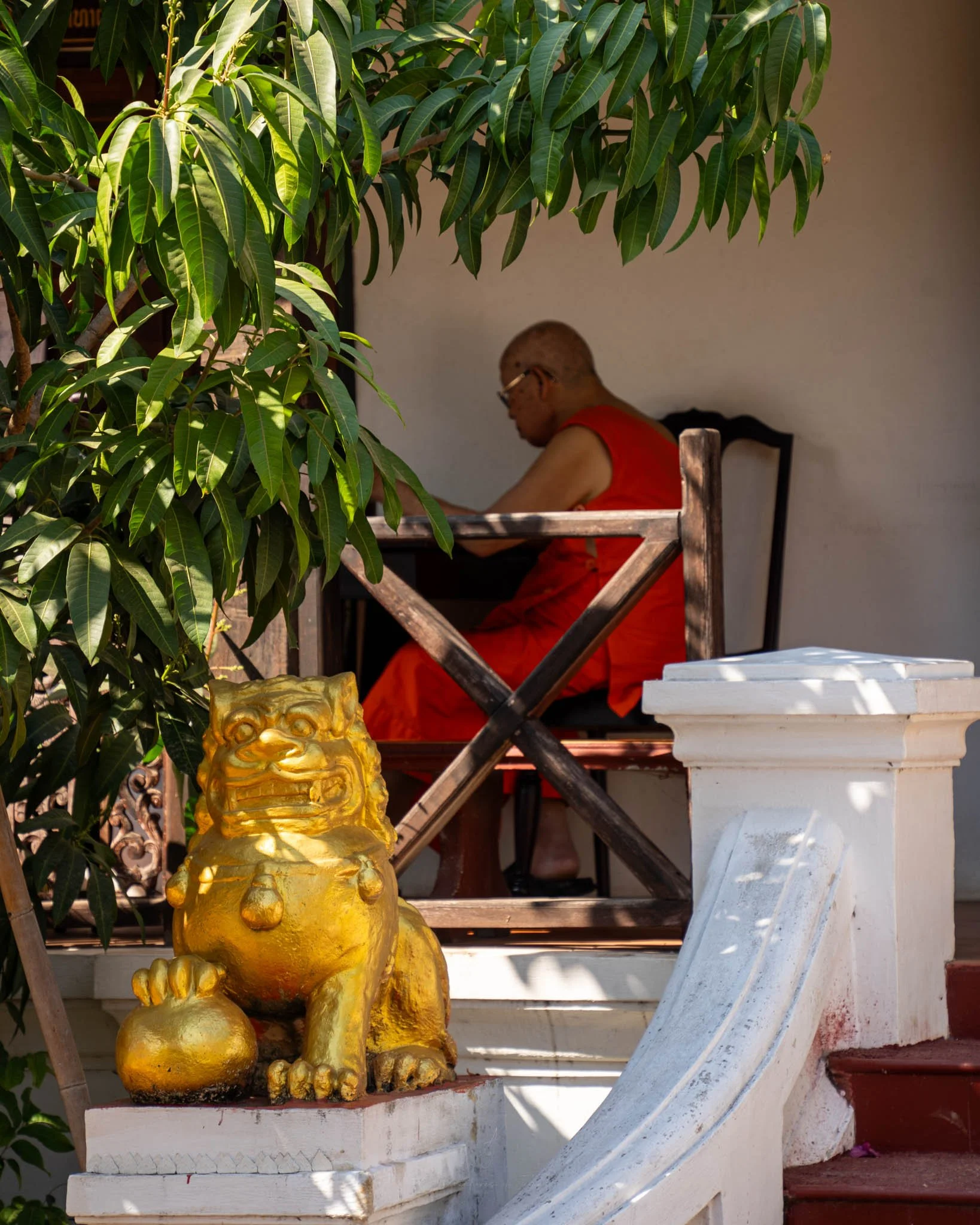






















All our Other Luang Prabang Articles:
If you’ve enjoyed reading this article, why not save the pin below?
If you’re found this blog helpful, entertaining or you just fancy supporting us, please click the button below!
Laotian BBQ - Eating Like A Local In Laos
Come with us as we take you out on a delicious evening dining on a Laotian barbecue feast. We grill, boil, simmer and saute our way through a tasty traditional barbecue in the Northern Laotian town of Nong Khiaw. If you’re curious or epi-curious don’t miss out on this brilliant barbecue!
Barbecues, every country has their version. From the slow smoked briskets of the American South to the delicate, precise yakitori of Japan, everyone on earth loves some grilled meats.
Laos is no different. A Laotian Barbecue is an absolute essential dining experience when visiting this beautiful country. Available everywhere from the fanciest high-end restaurants to the humblest street side vendor, Laotian Barbecue is a fantastic, communal meal that’s perfect for sharing.
Disclosure: This article may contain affiliate links. We will earn a small commission from any purchases made through these links.
What is a Laotian Barbecue?
Laotian Barbecue or Seen Dat (also sometimes known as Daht Seen) typically takes the form of a domed, perforated metal pan sitting over glowing hot charcoal. Resting on a clay pot, the metal griddle has a “moat” around the outside that catches all of the juices as the meat grills on the domed shaped top. This delicious jus combines in the moat with stock and vegetables to become the soup and base of the meal.
The metal grill pan is common throughout South East Asia. You can find similar (but never the same) barbecue toppers in Thailand and Cambodia. What sets these different countries' barbecues apart is always what is added to the pan. Different sauces, different cuts of meat and different soup stocks combine to make for very different barbecue experiences.
A traditional Laos BBQ grill - you can see how all the flavours just drip down the side and into the soup!
In Laos, the basic set up is simple; the pot of charcoal is rested on, or sometimes inside of, the centre of the table, then the griddle is placed on top. The moat is filled with stock and the fun begins!
You add meat, vegetables, seafood or pretty much anything edible to the grill or the soup, then cook and enjoy at your own leisure. The soup boils and the dome top fries and grills. There are no rules as to what goes where, you can boil the meat and grill the veg if you like, there’s no barbeque police to arrest you!
Each person will have their own bowl. In this they can combine their cooked meat, veg and noodles with the broth and a sweet, sharp, tangy and yet somehow savoury tamarind dipping sauce.
If you’re a vegetarian you can almost always request a vegetarian barbecue. The stock will be vegetarian and they will bring you extra vegetables, tofu and greens to saute, grill and boil. Just check with the restaurant when ordering.
What is a Laotian Barbecue like?
We have enjoyed many a fantastic barbecue in Laos, but will guide you through an especially great night we had in one of our favourite places on earth, Nong Khiaw - you can read all about this magical place here.
We had spotted a restaurant just off the town’s main street (you can find the restaurant here) offering a Laotian Barbecue for just 100,000 kip per person. This would come with meat, seafood, vegetables, noodles and a tamarind dipping sauce. Feeling this was an absolute steal, we couldn’t resist and dove in.
What followed was one of the most memorable meals we’ve eaten in Nong Khiaw (and we’ve eaten a lot)!
We were ushered to a table with a circular hole in the centre and our barbeque was assembled in front of our eyes. Glowing red charcoal filled the clay pots and our metal barbecue topper crowned the hot coals. Extra ventilation was cleverly supplied by a ring of old Beer Laos bottle tops separating the clay pot and the metal grill.
Then out came our delicious feast. The tiny table was filled with plastic baskets full of vegetables and plates of thinly sliced meat, chicken, beef, pork and what we think was buffalo was joined by ribbons of squid and whole prawns. The stock was presented in a plastic juice jug and we were ready to dine!
Our full Laotian BBQ spread - looks good doesn't it!
The first thing you learn with a Laotian barbecue is patience. You have to wait for the grill to heat up and you have to wait to cook your meats. Oil is supplied on the barbecue by a lump of pork fat, placed on the very top of the metal grill. The fat is scored to let all of its juices flow and you oil the grill by grabbing the pork fat with your tongs and spreading it all around like you’re applying piggy suncream to the metallic grill. Once lubed up, it’s time to barbeque.
We added slices of pork, beef, buffalo and chicken to the domed grill. Their juices running, mixing and mingling into the stock below, making it richer and richer with every piece added. To the stock itself we added sliced onions, carrots and courgettes. We would also quickly blanch morning glory shoots, coriander and spring onions before ladling the now rich broth into our bowls.
Small strands of glass noodles added body to the soup and when the meat was ready, we dipped it into the sharp, tamarind heavy sauce before devouring the whole lot.
Between meaty feasts we would switch it up and have seafood courses. Our prawns changing colour right in front of our eyes as they cooked on the hot metal. The squid (we never knew if we were cooking it correctly) would curl up away from the heat before quickly being pulled off of the grill, dunked into the tamarind sauce and eaten with the sweet, juicy prawns. All the while, the soup stock was getting richer, deeper and more complex.
Our sliced meat ready for the BBQ!
There’s very little on earth that is as tasty as barbecued meat. It’s got it all. The anticipation; the smells wafting through the air as it cooks, the amazing, caramelised, slightly smoky, char of the meat and the unmistakable, un-reproducable juicy deliciousness of the cooked meat.
We ate the meal piece by piece, taking our time grilling, charring, flipping and boiling each piece of our meal. It’s a lovely way to eat, it really makes an evening out of a meal. You cannot rush, you cannot overcrowd the barbecue grill and every so often, you’ll need to top up the stock or refresh the charcoal. It’s also just tremendous fun. Deciding to see if you can charcoal grill lettuce, whilst your partner attempts to stop their prawn falling off the top of the dome like it’s some kind of ‘King of the Hill’ game is just plain fun. There aren’t many meals where you should play with your food, but Laos Barbecue is one of them.
Laotian Barbecue really lends itself to conversation, you eat at your own leisure, you cook your own meal and can take it as fast or as slow as you want. If you get lost in a meandering conversation and forget about your piece of buffalo on the barbecue, it just gets a little more of that great char! It’s a meal to savour, one where the longer you take, the longer that stock bubbles and intensifies, the better the meal.
We ate our Laotian Barbecue as a couple, but this style of barbecue makes for a fantastic feast with friends. We cannot recommend seeking out a Laotian Barbecue on your Laos travels, trust us you won’t regret it!
Thanks for reading,
John & Ellie x
#adventuresofjellie
If you’ve enjoyed reading this article, why not save the pin below?
If you’re found this blog helpful, entertaining or you just fancy supporting us, please click the button below!
Thailand to Laos - The Bangkok to Vientiane Express Train
Come with us as we travel between Bangkok Thailand and Luang Prabang Laos. We catch the budget friendly, overnight express train from Bangkok to Vientiane before transferring to the Laos China high speed railway to Luang Prabang. Read our guide to find out which ticket to buy, ticket prices, train facilities and what to expect at the Nong Khai border.
The newly opened Bangkok to Vientiane express train line gives backpackers a brand new way of quickly and cheaply hopping between Thailand and Laos. An 11 hour train ride speeds you from Thailand’s bustling capital of Bangkok, heading north, crossing the mighty Mekong River before arriving in the sleepy Laotian capital of Vientiane.
As backpackers, we used this new train line as part of a budget friendly travel day that took us all the way from Bangkok to the cultural hub of Luang Prabang in northern Laos. This is our guide to catching train 133 and our experiences overnighting on this new, convenient and cheap travel solution linking Thailand and Laos.
In this train travel guide:
How long is the train journey between Bangkok and Vientiane?
How much are tickets and how do I reserve a place on the Thailand to Laos rapid train?
The Thailand / Laos border what to expect when crossing by train
The train ride from Thailand to Laos - what to expect, facilities and tips from our experience
Onward travel, the full journey - Bangkok to Luang Prabang, Vang Vieng or even China!
Other transport between Thailand and Laos - planes, slowboats and border crossings
Disclosure: This article may contain affiliate links. We will earn a small commission from any purchases made through these links.
How long is the train journey between Bangkok and Vientiane?
The journey between Bangkok and Vientiane is scheduled to take 11 hours and 40 minutes. This includes time at the border crossing at Nong Khai train station.
The train stops frequently at stations along the route. In Bangkok you can board at either Krung Thep Aphiwat Central Terminal (Bang Sue Grand Station) or at Don Mueang Railway Station.
Bang Sue station is ideal for those already in Bangkok as it is well connected by the MRT (Blue Line) and buses. Don Mueang is a little further out but the ideal choice if you’ve just landed at Don Mueang airport.
The Thailand / Vientiane express line also stops at Ayutthaya, another option if you’re planning to visit the ancient city.
Bangkok's Bang Sue Station has plenty of seating and food on offer. Even if you are early it is not a bad place to wait!
When does the train depart - what are the Thailand/Laos train times?
The Bangkok to Vientiane, Thailand to Laos express train runs once per day.
The train (number 133) departs Bangkok (Bang Sue Station) at 21.25 in the evening and arrives at Vientiane (Khamsavath Station) at 9.05 the next morning. The train travels overnight with an early morning stop at Nong Khai Station at 7.55. This is the station where you will get stamped out of Thailand (see below for more information on the border crossing).
If you’re planning to cross the Thailand / Laos border by foot at Nong Khai via the Thai / Laos Friendship Bridge, there are multiple trains departing Bangkok to Nong Khai daily.
Train 133 is currently the only train that will take you all away across the border to Vientiane without changing.
If you are not taking train 133 then you could travel to Nong Khai where you can make your way across the border independently. You will leave Thailand from Nong Khai and come out on the Laos side at the Thanaleng Border Crossing. To book Bangkok to Nong Khai train tickets, click here.
How much are tickets and how do I reserve a seat on the Thailand to Laos rapid train?
Ticket prices vary by class. The base prices are as follows:
2nd class sleeper air-conditioned - 874 THB
2nd class seat air-conditioned - 574 THB
3rd class seat fan only - 281 THB
You cannot currently book any 1st class seats on this train line. Let us know in the comments if you find out this has changed in the future
Guess which bunk princess got....
We bought tickets in person in advance from Bang Sue train station. We opted for two 2nd class sleepers in an air conditioned carriage. The tickets vary slightly in price depending on whether you want a lower berth with a window or an upper berth without one. Our tickets cost 874 THB for the lower bunk and 784 for the upper bunk.
You can go cheaper than this by booking a seat in either 2nd or 3rd class, but be aware that this is a long journey and 3rd class is fan only.
As the train departs only once a day, tickets can sell out quickly, so plan ahead. We’d recommend booking well in advance to prevent disappointment and disruption to your itinerary. You can book tickets online with 12Go below
There is a slight increase for booking tickets online, but maybe worth it to have the support and reassurance pre-booking offers.
The Bangkok to Vientiane express train will stop at Nong Khai train station for 40 minutes to allow everyone onboard to get their passports stamped out of Thailand.
It was a very simple and efficient process. We got off the train, leaving our luggage behind and queued up on the platform. We got our passports stamped and the train pulled forward to meet us on the other side of the immigration checkpoint. Once everyone had gone through the checkpoint, the train crossed the Mekong River, over the Thailand / Laos Friendship Border Bridge and we were in Laos!
Laotian visa on arrival
You officially get stamped into Laos at the train's final destination of Vientiane (Khamsavath Station). At the station you can buy a visa on arrival.
A visa on arrival for Laos will cost you $40 USD or 1700 THB (it is slightly more expensive to pay in baht). If you choose to pay in USD make sure the notes are pristine as they will not accept any old, faded, folded or ripped notes. You will need a passport photo for the visa as well.
If you did not bring cash it's not the end of the world, you can get cash out from a foreign exchange booth at the station - just ask a guard as it's technically across the border. If you do not have a passport photo, they will just charge you a little bit more on top of the visa cost.
Laotian eVisa
The newly instated Laotian eVisa is now accepted at the Khamsavath Railway Station border point. When we travelled it was not accepted and this caught a few people out, but now the border point is able to accept the eVisa. Keep an eye on the government website to check your crossing point accepts your visa!
The train ride from Thailand to Laos - what to expect, facilities and tips from our experience
We were super impressed by how comfortable, clean and convenient the train ride was. As we’ve said, we bought 2nd class tickets in an air-conditioned sleeper coach. The coach was divided into little “compartments” of 4 beds, 2 lower and 2 upper berths. The beds were comfy and came with a clean pillow, sheets and a nice blanket. It was a world away from some of our cheaper train journeys we’ve taken, we’re looking at you India!
The beds came with a power socket and a light, as well as a very well designed privacy curtain. There were tables in each bed zone, a solid metal ladder leading to the upper bunks and even a fold out chair if you wanted to sit in the aisle and look out of the window.
Clean, simple and comfy - just what you need on an overnight train.
Another thing we were particularly impressed by was the luggage storage solution. As long term backpackers, it's always a stressful gamble jumping on a long distance train. Our backpacks, although not huge, are unwieldy and heavy and it is sometimes a struggle finding somewhere convenient to store them. On the Thailand to Laos express train there was a huge luggage shelf in each of the compartments which made storing our backpacks super easy.
The toilets on the train were Western style and were cleaned multiple times during our long journey. There was a small washroom area with mirrors, sinks and soap.
Tips for a smooth train journey:
To make yourself even comfier on your train ride to Laos we would recommend the following:
Pack a long sleeve shirt, jumper or light jacket. The air-conditioning is strong and cannot be adjusted so make sure you don’t get too chilly in the night.
Bring snacks! In the morning you can buy tea and coffee from a seller but this was the only option for food and drink when you’re on the train, so make sure you’ve got something in case you get a case of the midnight munchies!
If you’re sensitive to light, consider an eye mask as the train lights were not turned off during the night. The privacy curtain was okay at blocking the light but if you’re sensitive it was nowhere near dark in the beds.
Remember it's a border crossing and you will need your passports handy! This may seem obvious but you don’t want to be digging through your bags as the train pulls into Nong Khai in the early morning
Even after 11 hours on a train, she is still smiling!
Vientiane to Bangkok
If you’re looking to travel in the opposite direction - from Laos to Thailand, you can catch the same express train heading back. It will be train number 134 which departs Vientiane Khamsavath Railway Station at 18:25 and arrives at Bangkok’s Krung Thep Aphiwat Central Terminal at 07:30.
Once you’ve arrived in Vientiane you have pretty much the whole of Laos on offer. You can arrange transport from the Laotian capital to anywhere in the country. Buses and minivans run north to south, east to west. You can easily book them in advance online here.
However, if you’re looking to travel north to Vang Vieng, Luang Prabang or even all the way into China, there is the new, high-speed Laos China railway.
We used the high speed railway to zoom us north to Luang Prabang and it only took us just over two hours. For context the same journey would have taken us over 7 hours by bus!
Using a combination of the Thailand to Laos train and the high-speed railway allowed us to go all the way from Bangkok to Luang Prabang on a backpacker budget within 24 hours. We went from our apartment in Bangkok’s bustling Bang Pho, to sipping a sunset beer Laos on the river of Luang Prabang the next afternoon!
After a long travel day, a Beer Lao was well earned.
Laos China High Speed Railway
If you’re planning on travelling onward to Vang Vieng or Luang Prabang via the high speed railway, make sure you book tickets for the 13.30 train departure from Vientiane. This will give you plenty of time to collect your tickets, get to the railway station and head through the security at Vientiane Railway Station.
Trains arriving from Thailand arrive at Vientiane’s Khamsavath Railway Station to the south of Vientiane city (located here). Whereas the high speed trains depart from Vientiane Train Station to the north of the city (located here)
Train tickets on the Laos China railway sell out extremely quickly and can only be bought 3 days in advance. You can book tickets further in advance via 12Go who will purchase the tickets for you when they become available. Similarly you can use Laostrainticket. Both 12Go and Laostraintickets will attempt to be 1st in line when the tickets are released, but neither can guarantee a spot. they will refund you if the ticket is not available.
If you have a Thai, Laotian or Chinese phone number you can book tickets directly with the LCR App.
Once the tickets have been bought you will need to collect the tickets before you travel. Depending on which agent you choose / train departure time, you can collect them from the train station itself or you may need to collect them from a shop in the city. We had to collect our tickets from Brother Cafe, around a 10 minute drive away from the station itself.
At the train station, despite its size (it’s enormous, it looks more like an airport than a train station) we were not allowed into the station until an hour and half before departure. We had just over an hour to wait around outside. Outside the station there is a covered seating area, ATMs, toilets as well as some stalls to buy food and drinks just outside the car park.
Once the station opens, you have to go through security (very strict, don't even bring a penknife or multi-tool) and head inside.
The train ride itself was incredible. We sped through long tunnels, past towering limestone karsts covered in thick mist and wallowing buffaloes bathing in mud. We crossed over huge rivers and glided across green rice paddies, it was an amazing journey! The high speed rail really lived up to its name and pulled us into Luang Prabang station just after 15.30.
When you arrive at Luang Prabang, head outside the station down the steps to find plenty of minivans waiting to take you into Luang Prabang. Just tell the ticket sellers where your accommodation is and buy a ticket. Tickets cost 40,000 LAK each.
The Laos high speed railway station is massive....and mostly empty.
Other transport between Thailand and Laos - planes, slowboats and border crossings
There are many ways of travelling between Thailand and its landlocked neighbour Laos. If you are looking for alternatives to the railway there are plenty of options regardless of where you want to enter Laos:
Thailand to Laos by air
For those who are cash rich and time poor, or just want to make the most of a shorter trip you can fly directly between the two countries, usually coming to land either at the country's capital of Vientiane or the UNESCO world heritage city of Luang Prabang in the north.
The flight between Bangkok and Vientiane takes 1 hour 10 minutes.
The flight between Bangkok and Luang Prabang takes 1 hour 40 minutes.
To look at flight options and to book tickets check out the widget below - make sure to check flights from both Suvarnabhumi Airport- BKK and Don Mueang - DMK
Thailand to Laos by river - taking the famous slow boats of Laos
A popular backpacking choice for those already in Thailand are the slowboats. Leaving from Chiang Rai in northern Thailand, you will cross the border into Laos at Huay Xai.
At Huay Xai you will board your slow boat to begin 2 days of floating down the Mekong River before arriving at the UNESCO heritage city of Luang Prabang.
We’ve taken the slowboat previously on our travels and absolutely loved it. Check out our article on taking the slow boat and our guide to Pakbeng, the overnight stop you’ll make on your way down the river:
Crossing into Laos over land borders
Laos is surrounded on all sides by Thailand, Cambodia, Vietnam and China. You can get between any of these countries with relative ease from any of the major cities or transport hubs. You can book minivans and coaches that will take you across the borders from all major Laotian cities.
Check out 12Go to book your tickets in advance.
For backpackers organising everything themselves, the most popular land borders to cross into Laos from Thailand, Cambodia and Vietnam are:
Thailand to Laos land borders:
Huay Xai Border Crossing (location) from Northern Thailand (Chiang Rai / Chiang Mai / Golden Triangle) for links to the slow boats to Luang Prabang, Luang Namtha and Nong Khiaw.
Thanaleng Border Crossing (location) from North Eastern Thailand (Nong Khai / Udon Thani) for links to Vientiane, Vang Vieng and Luang Prabang.
Vang Tao Border Crossing (location) from Eastern Thailand (Udon Ratchathani / Isan / Surin) for links to Pakse, Don Det and the 4000 Islands.
Cambodia to Laos land borders:
Nong Nok Khiene Border Crossing (location) from Northern Cambodia (Krong Stung Treng / Krong Banlung) for links to Pakse, Don Det and the 4000 Islands.
Vietnam to Laos land borders:
Phou Keua Border Crossing (location) from Central Vietnam (Quy Nhon / Da Lat / Nha Trang) for links to Pakse, Don Det and the 4000 Islands.
Nam Phao Border Crossing (location) from Central / Northern Vietnam (Vinh / Phong Nha) for links to Vientiane and Vang Vieng.
Na Meo Border Crossing (location) from Northern Vietnam (Hanoi / Ninh Binh / Ha Long Bay) for links to Phonsavan, Luang Prabang and Nong Khiaw.
To book your accommodation in Laos, check out the Booking.com for all your choices.
Thanks for reading,
John & Ellie x
#adventuresofjellie
If you’ve enjoyed reading this article, why not save the pin below?
Laotian Luxury in Luang Prabang
Sometime you need a bit of luxury in your life. Luckily the UNESCO World Heritage city of Luang Prabang has plenty to offer for those seeking something sumptuous. Follow us as we depart from our regular budget backpacking and indulge in the high end staying at a fantastic hotel and eating at the bougiest of bistros.
Disclosure: This article may contain affiliate links. We will earn a small commission from any purchases made through these links.
Sometimes you get lucky, sometimes you want to splurge, sometimes you just want a little luxury in your life! We are not usually ones for the finer things, we specialise in long term backpacking travel, cheaper accommodation and street food, so a stay at an incredible luxurious hotel is not very “on brand” for us! On brand or not, after a year of hostels and guesthouses a bit of much needed indulgence was very welcome.
Luang Prabang is an unbelievably beautiful UNESCO World Heritage City in the heart of northern Laos. This wonderfully preserved city is full of cafe’s restaurants, historic buildings, temples and museums . It was for these reasons we decided it was a good place to meet up with my parents after a year away and, thanks to them, we found ourselves in the lap of luxury. Luang Prabang is a great place for a getaway.
Staying In Luxury - Satri House Luang Prabang
The stunning Satri House is about as far away from budget hostels as you could hope to get. Converted from a French colonial villa it is secluded, elegant and serene. It is also, paradoxically, near to all the attractions in the historic town as well.
Luang Prabang is one of Laos larger cities and sprawls out from the historic heart; a tiny, Manhattan-like peninsula that juts out between the Mekong and Nam Khan rivers. Satri house lies at the southern end of the old town, within walking distance from all the Old Quarter sights.
The hotel itself is incredibly luxurious without being ostentatious with elegant pools, a spa, manicured Laotian style gardens and an excellent restaurant serving high end local and international food.
The rooms are massive, with four poster beds and are full of bespoke furniture, antiques and charming accents. The bathrooms are unsurprisingly opulent with full baths and walk-in showers.
The hotel could organise anything you needed; from a driver to an exclusive private breakfast at the stunning Kuang Si waterfalls the friendly concierge was happy to help.
The staff overall were borderline psychic, always there when you needed but never hovering or intruding. Our rooms would be made up or turned down without us ever noticing the staff come or go, the only sign would be a clean room, the blinds being drawn and a selection of Laotian sweets being left on the dresser! The staff are also very helpful and accommodating; When we mentioned one evening that we were a little peckish, they brought out trays of delicious Laotion small plates to the hotel bar for us!
Satri house was a world away from what we were used to on our great adventure but was an incredible get away. It was perfect for the parents, who definitely require a little more comfort when traveling around the world. Satri house is not a backpacking budget option in any shape or form, but , if you have the money, it is the definition of luxury and one of the relatively few truly high end hotels in Luang Prabang.
To book a stay please click here.
Other Luxurious Luang Prabang Hotels:
There are of-course other luxury accommodation options than Satri House in Luang Prabang. Another similar level of luxury can be found at the Maison Dalabua, the Angsana Maison or the Villa Maly Hotel. At the very top of the price range there is the Avani + Luang Prabang . For those looking for a more out of town “resort” style hotel check out the Pullman.
We haven't stayed at any of these but they are all beautiful, centrally located high end hotels with pools. For a full list of higher end hotels check out the map below:
Just select your dates and filter by star rating and/or budget.
Luxury Dining in Luang Prabang
Manda De Laos
Set over a UNESCO preserved Laotian lily pond (that is a fun sentence to say out loud), Manda De Loas serves fine dining takes on authentic Laotian cuisine. Offering tasting menus as well as a la carte , Manda De Laos is the poshest, and most famous restaurant in Luang Prabang. It is the partner restaurant to the Maison Dalabua Hotel and we would definitely recommend booking in advance.
Gaspard
Owned by the same family group as Manda De Laos, Gaspard is a gorgeous french restaurant set in a preserved wooden house and garden in the old heart of Luang Prabang. We had our first meal out with the parents here and can highly recommend the food! There is also a fully stocked bar serving fine wines and spirits.
L’Elephant
Another delicious French restaurant, L’Elephant is right in the heart of the old town. Despite its traditional French menu and elegant setting the food remains very reasonably priced.
Popolo
It was strange to find what may be the best pizza we have ever eaten in Laos but that is the wonder of travel! Popolo was a fantastic Italian restaurant that utilized the local buffalo mozzarella to amazing effect. We had our first wine in months here, served in a carafe and it was a wonderful evening. We would especially recommend the “French Kiss” pizza and the Burrata starter.
Leaving Luang Prabang
Most travellers come to or leave Luang Prabang by one of four methods:
By Train:
Laos new high speed train network arrows through the country. From Luang Namptha in the north the line flows south through Luang Prabang and the popular Vang Vieng before eventually terminating at the Laotian capital of Vientiane. It is comfortable and quick and you can book tickets here. The station is set a little out of Luang Prabang so you will need a ticket that includes a transfer to the station (the ones in the link usually have this included).
By Bus / Minivan:
Very affordable and convenient, the bus networks connect to pretty much everywhere in Laos. They are not the most comfortable mode of transport as the roads are quite often bad but they are the most common and cheap way to get around the country. To book bus tickets click here. When booking buses check if they pick up from the town itself or from one of the bus stops outside of Luang Prabang. If the bus/minivan starts from outside the main city you will have to arrange transport to the bus station.
By Plane:
Luang Prabang Airport connects the city with the outside world with regular flights to Thailand, Vietnam and Malaysia as well as other international hubs. Check out the flights here.
By Boat:
The most famous way into or out of Luang Prabang is by boat. The slow boats run up and down the Mekong all the way from the Thai border at Huay Xai two days away. We have done the ferry journey in both luxury and budget styles and can highly recommend it. The boats (luxury or not) stop for a night at the half way point of Pakbeng. Check out our article on staying in this tiny town here.
There is something truly magical about floating down the Mekong watching the people and life play out on the water's edge. If you are in Luang Prabang or Northern Thailand you really shouldn’t miss this experience.
Experiences in Luang Prabang
There is so much to see and do in Luang Prabang. The Old Quarter has a wealth of ancient temples, craft centres and museums all of which are easily explorable by foot. It is a fantastic city just to let go and let your feet take you. The old streets and buildings are wonderful just to walk around and soak up the atmosphere.
In regards to specific destinations, you should definitely not miss an expedition to the nearby, world famous, Kuang Si Falls or the short uphill climb to the temple on Phousi Hill.
Luang Prabang is famous for the daily ritual of the alms giving ceremony where at dawn the streets are lined with saffron and maroon clad monks receiving donations of sticky rice and other food. It’s an experience not to be missed whilst in the city.
The UXO museum is also a necessary, if uncomfortable, lesson in Laos sad recent past. No trip to Luang Prabang would be complete without at least a small trip along the Mekong river, for those not interested in the two day upriver exit, there are lots of sunset cruises or day trips available as well. There are too many other museums, temples and open houses to list here, just get out and explore!
If you are looking for some curated tours, more in depth history or just want to combine a few sites into a day out, check out Get Your Guide who offer many tours and activities in the area:
Comfort and Luxury in Luang Prabang - Conclusion
Luang Prabang is a great place to spoil yourself. There are plenty of comforts to indulge in as well as beautiful places to stay and fantastic food to eat. The Old Quarter is absolutely beautiful and full of crafts, museums and temples to explore on foot. It was a great choice for a holiday for my parents and allowed them to experience a little of the adventure of Laos whilst still having all the comfort and luxury of a properly indulgent holiday. Laotian luxury is also relatively good value; the food, accommodation and service we received at Satri House would have cost double what it did if it was in any neighbouring country. We are not usually overly bougie travellers (although we will indulge from time to time), but we adored our luxurious interlude in Luang Prabang.
Normal programming will resume shortly.
Thanks for reading,
John and Ellie x
#adventuresofjellie
If you’re found this blog helpful, entertaining or you just fancy supporting us, please click the button below!
If you’ve enjoyed reading this article, why not save the pin below?
Nong Khiaw - The Complete Guide
Nong Khiaw in northern Laos is a backpacker haven full of beautiful hiking trails, amazing viewpoints and great kayaking on the Nam Ou river. Read our complete guide to this incredible town. Find out: What to do, where to eat and where to have some fun drinks!
Nong Khiaw is special, in our adventures we have been lucky enough to go to so many wonderful places, from off the beaten path to tourist hubs, we’ve had some fantastic experiences, however Nong Khiaw was easily one of the best. Nestled within tall limestone mountains, with the Nam Ou river snaking through the centre of town, Nong Khiaw is a beautiful backpacker haven in the north of Laos. This small town boasts great restaurants, bars, accommodation choices and jaw dropping scenery and activities. In this blog we’re going to run you through our recommendations for what to do, what to eat and where to drink in this incredible Laotian mountain town.
Contents:
Nong Khiaw town viewed from the Pha Noi viewpoint, it’s a lovely little town!
Disclosure: This article contains affiliate links. We will earn a small commission from any purchases made through these links.
How to get to and from Nong Khiaw?
Being a backpacker hub, Nong Khiaw is pretty well connected. With buses running regularly to towns and cities all around. The cities of Luang Prabang and Oudomxay (also known as Muang Xai or Oudomxai) are only about three hours away by bus.
For better or worse (we think for the better) Nong Khiaw is not on the new high speed railway line, so if you are travelling by train from Vientiane or Vang Vieng, you will need to travel to either Luang Prabang or Oudomxay and book onward travel by bus or taxi.
We travelled to Nong Khiaw from Luang Namtha in the north. We hope your journey is easier than ours, as ours was a bumpy seven hour ride punctuated by having to change the two front tyres on the minibus.
It could have been worse though, the people in front of us were all sitting on beer crates rather than seats… it's the gamble you take when travelling in Laos!
Tip: Get to the bus station early with a ticket already purchased to make sure you get an actual seat on the bus!
Tickets for the minibuses can usually be booked in advance through your accommodation or online. For online booking, we’d recommend using 12Go.
We booked our tickets both to and from Nong Khiaw via our accommodation. One ticket from Luang Namtha to Nong Khiaw cost 230,000 kip each (£11.39 or $13.70) this included a tuk tuk taxi from our accommodation in the centre of Luang Namtha to the bus station. One ticket from Nong Khiaw to Luang Prabang cost 100,000 kip each (£4.95 or $5.95) this also included a tuk tuk taxi from our accommodation in Nong Khiaw to the bus station.
Tip: In lots of the places in Laos, you will find the bus station isn’t anywhere near the centre of town. In Nong Khiaw this isn’t too bad as the distance is still walkable. When we arrived, it took us about 15 minutes to walk into town with our backpacks. In both Luang Namtha and Luang Prabang, the bus stations are well outside the main towns and accommodation areas, therefore you will need to factor in the price of a tuk tuk to your total ticket price. This is often quite high as the tuk tuk drivers know that you don’t really have a choice. Our tip would be to unite with your fellow bus travellers and increase your negotiation power as a group.
When Should You Visit Nong Khiaw?
We visited Nong Khiaw in late January and it was perfect. Hot, clear, sunny days but with much cooler nights. When we visited there was an unusual cold snap at night and temperatures did drop to around 6 degrees celsius, but by this point we would usually be huddled cosily in a bar, so we didn’t mind.
The best time to visit would be between October to early March as the weather is warm and dry, which is perfect for hiking.
Check before you go about the “smokey season”. Smokey season generally runs from March to April, where farmers burn their fields and the air is full of smoke. We have heard it's quite unpleasant and visibility drops considerably which is not what you want when exploring mountainous hiking trails. The views just wouldn’t be the same.
April to June sees a climb in temperature and humidity, in the run up to the monsoon season from July onwards.
How Long Should I Stay in Nong Khiaw?
How long is a piece of string? How long you stay in Nong Khiaw depends on how many activities you want to do whilst there. Being only 4 hours away from Luang Prabang, you can get to and from Nong Khiaw easily, so you could come just for a couple of days and do a viewpoint and a kayaking trip.
If you have some more time to spare, you can spend a lot longer here. We spent around a fortnight in Nong Khiaw and there were others around us that stayed even longer. This may be a little long for some, but if you wanted to do all the viewpoints, the caves and a few multi day trips as well as boating to other villages, then you would need over a week.
If you just want to do day activities and your not worried about tiring yourself out you could probably fit a good whack into three or four days (not including coming or going).
Honestly, this was one of our favourite places, and if your lucky with the weather and find a good group of friends, then its worth slowing down and savouring the place!
Accommodation - Where to Stay in Nong Khiaw?
Nong Khiaw has a plethora of accommodation to choose from, stretching along both banks of the Nam Ou river, there are lots of guesthouses, homestay’s, hostels and hotels. Before we came to Nong Khiaw we were slightly concerned about finding accommodation as both booking.com and Agoda were not showing that many choices. This worry was completely unfounded. As soon as we entered the town, there were so many options to choose from. Whatever your budget, there will be something for you.
We spent a long time in Nong Khiaw and there were definitely busy days, and so much so that our guesthouse did turn away some walk-in travellers, but there was never a time where the whole town was booked out.
The garden of Meexai guesthouse
We stayed at the Meexai guesthouse (book your stay here) on the southern side of the river. This no frills guesthouse with a private bathroom and a little terrace outside our room was perfect for us. One night's stay at this guest house cost us 200,000 kip (£9.91 or $11.91).
Breakfast was available to buy from the guesthouse, as well as a selection of soft drinks and beer. The guesthouse can also help to arrange activities in and around Nong Khiaw and also onward travel.
Activities and Attractions - Things to Do in Nong Khiaw
Nong Khiaw is an outdoor lover’s dream. Surrounded by tall, limestone mountains and with the Nam Ou river flowing through the middle, this small town in northern Laos is perfect for anyone who is eager to stretch their legs and enjoy the incredible Laotian landscapes. With hiking, kayaking, cycling and caving all available, Nong Khiaw is an amazing place to get out and about in the fresh air.
The Viewpoints
You’ve probably seen the pictures on Instagram, we certainly posted enough of them, so let’s face it, the viewpoints are probably the reason why you came to Nong Khiaw. The town is encircled by towering peaks, with each one giving a fantastic view over the surrounding countryside. There are four main viewpoints that can be climbed from the town of Nong Khiaw. Each varies in length, height and difficulty. Here is our guide to the viewpoints of Nong Khiaw.
Som Nang Viewpoint - Map Link
This viewpoint is the shortest and easiest of the viewpoints on offer in Nong Khiaw. This is also the most easily accessible viewpoint from the town, with its entrance located near the southern end of the bridge. After purchasing tickets, one ticket costs 20,000 kip (£0.96 or $1.18), the walk starts with a steep hike up a natural staircase cut into the earth. As you walk up you’ll be treated to a sneak peak of what's to come with a small viewpoint and benches looking out over the Nong Khiaw bridge.
As you continue upwards, the halfway point is marked by swings, hammocks and picnic benches. After this, the route winds up the mountainside until it reaches the main viewing platforms. These are easily the best maintained and most developed of Nong Khiaw’s viewpoints (presumably as they are the easiest to get to) and consequently the most popular. A large area is cut into the side of the mountain with multiple platforms and benches. There is a small shop and toilets available.
This viewpoint gives brilliant views over the town of Nong Khiaw and down the river valley. As the trek only takes about half an hour to get to the top, this is a brilliant spot to watch the sun set.
For those feeling brave, there is another path behind the shop that leads to another slightly higher viewing platform. This one is much less maintained and sways a little when you walk on it! But if the platforms below are busy, this one is usually quieter. There are also rocks you can climb onto to the right if you’re feeling like a daring selfie! But please be careful.
Entry cost: 20,000 kip per ticket (£0.96 or $1.18)
Difficulty: An easy uphill walk. Walking sticks are provided at the bottom but not really necessary. The steps are steep in places but as the overall walk is so short this shouldn’t be an issue.
How long does the walk take: 20 to 40 minutes each way depending on your speed and if you go all the way up to the hut.
Tips: Set off about an hour before the sun starts to set as it will get busier and busier. It really is the perfect place to watch the sun set, but this isn’t exactly a secret so it gets quite busy.
Remember to pack a sunset beer, if you’re lucky you can buy one from the shop but the range was more limited/more expensive than the town below!
If you are heading up for sunset, make sure you bring a torch or have your phone charged for light on the way down. It’s an easy hike in the twilight but you will still want to watch your footing.
Nang None Viewpoint Trail, also known as the Sleeping Lady Viewpoint - Map Link
Set a short fifteen minute walk outside of the main town on the northern side of the river, the entrance to the Sleeping Lady viewpoint is located just past the Hive Bar (read more about this bar below).
There is a small ticket booth and a register to sign to access the trail. Tickets were 15,000 kip each (£0.72 or $0.89).
Believe it or not, this is the path!
After the entrance, there is a small stone staircase, before you’re immediately thrown into bouldering mode as you navigate yourself up, over and around large rocks and tree roots. There are ropes to help you up some of these segments, but beware you’re often sharing these ropes with large angry ants.
On the subject of being careful, always check before grabbing a tree on this route as some of the trees are covered in extremely large spikes. There are also other hazards but we will come to those in due course. About a quarter of the way up the trail, the path splits in two, with the right hand fork leading you to viewpoint number one and the left continuing upwards to viewpoint two. We’d recommend heading off right at this point and going to viewpoint one before continuing on to the final, much higher, viewpoint two.
Viewpoint one is fantastic with three wooden platforms set across the rocks and a great view over the town of Nong Khiaw. This is a great place to have a drink of water and catch your breath. However, if you look up, a long way up, you will realise you still have quite a way to go!
Leaving viewpoint one behind you, you’ll come back to the fork in the road and continue on up. The trail climbs very steeply over a long time (around an hour for us) until the trail flattens out, and the trees are replaced by thick stands of bamboo. The way then winds around the mountain, via a small stone path, between rocks, clinging to the cliff edge. Before long, all sides drop away and you’re rewarded with the peak.
There are two platforms to the viewpoint, one is under renovation but still a great place to sit down and catch your breath after a hard climb (this is the one with the roof). The second viewpoint is up a rickety wooden staircase, leading to a small platform and a Laotian flag crowning the summit. The views from this viewpoint make the walk worthwhile! You can see across both sides of the town, over the bend in the river, and the massive peaks that lie beyond. It's a hard climb, but thoroughly worth it!
On a personal note, and remember this is anecdotal so we can’t guarantee that this happens to everyone… Remember to check your walking sticks! We had both picked up fallen bamboo to use as hiking poles. But, unbeknownst to Ellie, her hiking pole was also resident to a certain hairy tarantula. We don’t know at what point our eight legged friend joined us on the trail, or if he had been living there all along but a short way down from the viewpoint he decided to come and say hello. Some flailing and yelling later, and Mr Spider was persuaded to leave Ellie’s person and we learnt a valuable lesson of checking our equipment.
The above was John’s version of events. What really happened was this… as I walked down the steep hill, something big, black and hairy caught my eye. Emerging out of the top of my bamboo pole was not one, but eight thick legs. About the size of my hand in width, this big spider slid down my pole and landed on my left forearm. Unfortunately for him, I am not keen on spiders, especially not big tarantulas and so Mr Spider ended up flying through the air and landed on the step in front of me. After yelling at my wonderful fiancé (who was 15 metres down the steps in front of me and totally oblivious to my struggles), I eventually hopped over Mr Hairy Feet and proceeded to run, Spirited Away style down the steps and away from my new tarantula friend. I may or may not have been screaming at the time!
Tarantulas aside, this is a phenomenal trail. It is a hard climb full of varied terrain but with great pay offs at both viewpoints.
Entry cost: One ticket cost 15,000 kip (£0.72 or $.0.89).
Difficulty: Medium, some small amount of rock scrambling at the start and a lengthy hour and half of steep climbing to the top viewpoint. Totally doable, even if the most exercise you’ve done for the past few months is picking up a bottle of beer!
How long does the walk take: Around an hour and a half to get to the top viewpoint including stopping at the first viewpoint and plenty of breaks for water, photos and snacks! We did the whole trek up and down in just under three hours. This included a lot of time chilling out at the top and a little time recovering from tarantula triggered terror.
After trails and tarantulas we made it down!
Tips: Bring lots of water with you, both viewpoints are worth a visit. If you’re climbing the mountain after it's been very dry, the path is covered in fine dust and grit which can be quite slidey underfoot. Wear proper shoes and pick up a bamboo pole from around the path, just make sure there aren’t any unwanted passengers!
This path would not have been pleasant if it was wet under foot or after rain. Where there are steps it's just cut into the soil of the mountain, and most of the footpath is on rocks or dirt so it would be very treacherous when wet.
Keep an eye on the time as parts of this path would have been a nightmare to come down in the dark.
Nong Khiaw Viewpoint and Trail - Pha Daeng Peak - Map Link
Always stick to the path in Laos!
From the Nong Khiaw Bridge, if you look up to the Som Nang Viewpoint, you may notice far, far above this, is a fluttering Laotian flag. This flag marks the summit of Pha Daeng Peak and the top of the Nong Khiaw Viewpoint and Trail. The entrance to the trail is just past Home Coffee on the south side of the river. Tickets for this trail cost 20,000 kip each (£0.96 or $1.18). The ticket booth is marked with bright blue signage reminding you to stick to the path with the ever present large cluster bomb serving as the ticket counter.
The trail starts up from the town between local houses, before steeply ascending into the hillside jungle. The landscape changes as you ascend, starting out in farmers fields in the beating sunshine, before getting more forested and shady before eventually thinning out into bamboo as you near the summit. There are parts of this climb where you will need to scramble across or through boulders, but there are always ropes and clear markings where to go.
When you reach the summit you are treated to an incredible view over the valley. If you look down (a long way down) you can see the Som Nang viewpoint below. This harder and longer climb is definitely rewarded by the loftier vantage point you get. On a clear day, the views go on for absolute miles, stretching away in both directions of the mountain lined Nam Ou river.
Following the Nam Ou river upstream, the mountains fall away and the river banks are covered in paddy fields.
When we visited, the pavilion at the top was under construction, but there were plenty of places to sit down, take a load off and take in the magnificent surroundings. Also for the more daring, there were an abundance of great selfie spots to clamber on to.
Entry cost: One ticket cost 20,000 kip (£0.96 or $1.18)
Difficulty: Medium. The walk is steep in places, but not overly long or extreme in any way. Along the trail there are benches, swings and places to rest, and in the areas where there is a need to scramble, there are always ropes to help you.
How long does the walk take: The walk took us about an hour and half to climb to the top. This included a lot of stops for photos. The way down was much shorter, taking only about 45 minutes.
Tips: Similar to the other viewpoints, beware of the weather. You wouldn’t want to do this viewpoint after heavy rain.
When at the top, be very careful as the viewpoint platform is still under construction and, as with much of Laos, there are very few safety features e.g. rails etc.
We’ve said it before, and we’ll say it again, bring lots of water!
Pha Noi and Pha Kao Trail and Viewpoint - Map Link
(approximate location of entrance to ticket office as no Google listing)
Okay this is it, this is the big one. The Pha Noi and Pha Kao Trail and Viewpoint was the hardest and longest hike we did in Nong Khiaw. Don’t believe the Google reviews saying they go up there in an hour. As far as we could tell, this would only be possible with rocket powered shoes or by sprinting up a mountain!
The entrance to the trail is off of the right hand side of the main road, on the southern side of the bridge. A large sign shepherds you in, as you head down between the houses. Tickets are brought from an old lady in a small wooden hut, these again cost 20,000 kip per ticket (£0.96 or $1.18).
Once tickets are brought, you head off across a bamboo bridge, through a small farm and into a beautiful forest. The trail starts off deceptively flat, as you follow the path through the woodland. This did not last.
The path quickly becomes steeper with steps cut into the mud or precarious staircases made out of branches and sticks. Not long into the forest you will come to a fork in the road with a sign.
The sign says 200m to Pha Noi Viewpoint to your left, and to the right 2km to the Pha Kao Viewpoint. We can only assume these figures refer to the elevation you needed to gain, as we certainly felt that they were nothing to do with the distance you needed to walk.
We decided to take the shorter route before tackling the longer climb, so we set off to the left. The trail was definitely longer than 200m and wound sharply up through the wooded mountain side. The path snaked up and over ladders, through crevices and around cliff edges before eventually opening out into a spectacular view. From the viewpoint you could see right over Nong Khiaw town, the bend of the Nam Ou river and the surrounding mountains.
There are two platforms at this viewpoint, one has a series of sun loungers (lets spare a thought for those who had to haul these up here) and the other is a rickety, bamboo floored hut that juts out over the cliff edge. The view from here was worth the ticket price alone, but looking backwards and up the mountain, we could see our final destination was a long way off. Photos snapped, it was time to retrace our steps back to the fork in the path and then, the long right hand road to Pha Kao and the top of the mountain.
The right hand path continues through the forest, climbing in a seemingly never ending staircase. The foliage changes as you climb up and up, going from vibrant greens and broad leafed plants in the sun, to darker browns and mushroom clad trees.
The trail continues to climb upwards, underneath the shadow of the massive stone cliffs, with the path switch backing up the mountain. The path was a mixture of loose stone, leaf matter and fine dust. In some places it got extremely slidey, at one point Ellie said we might be able to ski back down!
After many, many false peaks, the trees thinned out and we finally reached the top of the mountain. This last ten minutes was definitely the prettiest so far, with the path carved directly into the very edge of the mountain as it spiralled its way to the peak. The views were amazing. On one side of you, the jagged rocks leading up to the summit, and on the other a sheer drop flowing away into a vista of distant mountains, valleys and the snaking Nam Ou river. We weren’t sure that the peak could get better than this, but boy were we wrong!
After what had seemed like a never ending climb and with shaking legs, we came to the simple bamboo and corrugated iron hut that marked the peak and the end of the Pha Kao Trail.
Directly in front of us was Nong Khiaw town and Nang None mountain, but the scale was unbelievable. The town was tiny from up here. Houses smaller than ants, the bridge like a little twig across the river, and around it spread out in all directions, the mountainous countryside of Laos. It was jaw dropping! This had been the longest hike we had done, but by far had the greatest pay off.
Entry cost: One ticket cost 20,000 kip (£0.96 or $1.18)
Difficulty: Medium to Hard. The trail is long and permanently climbs upwards to over 1000 metres. The path does vary in quality, the route to viewpoint one is very well maintained, whereas the trail to viewpoint two is much more “au natural”.
How long does the walk take: Around half an hour to get to viewpoint one, Pha Noi and then another two hours to get to the top of Pha Kao (viewpoint two). Slightly faster on the way down, but not as quick as you may think as the path is extremely slippery in places and you need to watch your feet.
Tips: Set off early to avoid the worst of the sun, but bear in mind it is between a four to five and half hour round trip and you really don’t want to come down after dark.
Picking up a walking stick is a very good idea. John’s pride stopped him using one at the start, but he quickly realised how much energy they save on long climbs. As we’ve said before a lot of the path is loose grit and gravel and so can be very slippery under foot. There are lots of good fallen branches or old bamboo along the path that can be used as a walking stick.
Pack lots of water and food, we forgot the second part and only had a small bag of fried banana chips to sustain us on our trip.
As with all these treks, beware of the weather and always stick to the footpath.
Which viewpoint is the best to do?
If you’re short on time:
A lot of people will only have a few days in Nong Khiaw, and as such need to cram a lot into a short amount of time.
If you only get the chance to do one viewpoint, we would recommend the Som Nang viewpoint. This is the lowest, shortest and easiest of the viewpoints so could easily be done just before sunset after a full day exploring elsewhere. Seriously, if you're only in Nong Khiaw for one evening, you could easily do this viewpoint.
If time is on your side:
If you’re up for more of a challenge and do have a full day to spare, then definitely do hike the Pha Noi and Pha Kao trail and viewpoint. This climb really did test us, and did take us most of the day to complete, but the view from the top was incredible and as cheesy as it is to say, really did feel as though we were standing on top of the world!
In our view you can’t really go wrong with any of these hikes, all of them were challenging in their own way, and incredibly rewarding. We don’t regret any single one of them, so if you have time, do them all!
Final Tip: As we mentioned above please, please do not go off the marked trails in Laos. Due to the Secret War in the 1970s, there are still millions and millions of unexploded bombs littering the countryside.
Be very careful after heavy rains and always stick to marked paths!
For more information about the repercussions of the bombing campaigns, we would recommend visiting the following Centres in Laos:
COPE Visitor Centre in Vientiene - http://copelaos.org/
The UXO Lao Visitor Centre in Luang Prabang - https://www.uxolao.org/
The Caves
Nong Khiaw is surrounded by limestone mountains, and these provide the perfect environment for the slow formation of caves. Nong Khiaw has three major accessible cave complexes, within walking distance of the town. We checked out all three, and here’s what we found.
Phathok Caves - Map Link
If you leave Nong Khiaw along the southern road and travel for 2.5km you will come across the Phathok Caves. We wandered down on a sunny morning to have a look at the three cave system. The approach is worth the walk here alone. A large bamboo bridge winds out over a stream. You buy your tickets from a stilted house then set out across the bamboo walkway above the paddy fields. The tickets cost 20,000 kip each (£0.96 or $1.18) and you will almost certainly have a group of youths offering to give you a guided tour for a little more (we declined).
Across the rice paddy a roped off area shows the outline of a huge bomb creator, another reminder of the Secret War. The crater is so large that a healthy sized tree is now growing within its bounds. Around this crater, is a steep set of concrete stairs that climb into the rock face. The first cave lies at the top of these stairs. This cave has received some funding for preservation as a relic of the Secret War. Signs show you where the command centres, communication equipment and meeting halls were, or used to be, underneath the cave's high ceiling.
Towards the back of the cave was the shelter which was used during bombing raids, this was frankly terrifying as it was nothing more than a pit so deep you could barely see the bottom. The only access seemingly being by a rope hanging down into the darkness. You can't (thankfully) access this part so we headed back to the cave entrance.
Throughout this article there will be a lot of references to the Secret War. The war ran from around 1959 to 1975, and can alternatively be called the Laotian Civil War. It is referred to as the ‘Secret War’ as during the course of the war, the USA lent its support to the Royalists and conducted the largest bombing campaign in history (by volume). However, due to the ongoing Vietnam War, none of this was made public in the West. This is a very simplified (and possibly ignorant) summary but Google can provide a more in depth look at this fascinating but distressing conflict, the remnants of which still plague Laos today.
The last of the light as you enter the cave!
The second cave is a short walk around the base of the rock formation below the first. This tiny cave is a claustrophobic’s nightmare. There is no lighting so you have to bring a torch and squeeze between the gaps in boulders, seriously do not attempt this cave without good portable lighting. Your phone will be ok…ish, but we would definitely recommend torches. If you did opt for a guide they should provide you with a head torch. This cave was a communication centre and post office during the Secret War, it is much less renovated compared to the first cave and is essentially a tiny set of tunnels, wide enough for one person to squeeze through that wind deep into the mountainside.
The third cave is a little harder to find, you have to continue along the small path on the forested side of the paddy fields. The path twists in and around the bottom of the rock formation with stiles and barbed wire fences to navigate over. The barbed wire does have ‘passing points’ where a bit of bamboo covers the wire but the way can be off putting if you are not sure you're going in the right direction! The third cave is set a good distance further along the path, the caves opening is large and contains a Buddhist shrine in its cavernous opening. Behind the shrine is another set of tunnels opening into larger caves within.
The Phathok Caves were well worth the short walk from town but we have to say we actually preferred the outside scenery to the caves themselves. The green of flooded rice paddies set against the grey of the surrounding mountains, with the farmers planting a fresh crop, was beautiful and provided a strange contrast to the dark caves and their sad history.
Phar Noi History Caves - Map Link
The Phar Noi History Caves are almost inside town itself. Follow the signs from the main road (southern side of the bridge) and go through the construction site or new hostel depending on when you read this! At the far end of the field, there is a small bamboo bridge and hut. This is the ticket booth. Tickets were 20,000 kip each (£0.96 or $1.18), if you’ve got this far in the article, you must have noticed that this seems to be the standard entrance fee for everything. Once over the bridge, you follow the path up the hillside and through a small jungly wood before you reach the first cave.
The first cave features a tall ceiling, draped in stalactites and a circular opening to the sky. At certain times of the day, the sun will line up and cast a perfect beam of light down into the cave. Unfortunately, we had no idea when this would be, so we just enjoyed the cave as it was.
The second cave was a short walk from the first and could easily be missed. Look for a large rock between two trees, and you will see a small opening at the bottom. Crouch down and head through. Just inside is a bamboo ladder leading down into a large cave. Similar to the Phathok Caves you will need a torch in here, do not try an explore here without one!
“My preciousss….”
At the bottom of the ladder and on the left are remnants of war time cookery supplies. On the right, is a massive hole in the cave floor.
If you look directly above the hole, you can see war time graffiti. Including pictures of the American bombers that the cave dwellers were seeking shelter from.
We really enjoyed the history caves. They are set basically within the town, that they’re definitely worth checking out and giving an hour of your time to.
Pha Kuang Cave - Map Link
If you follow the road north out of town, either by foot (30 to 40 minutes) or by scooter (10 minutes) is the Pha Kuang Cave. We can’t give an entirely fair review of this cave as we didn’t explore the cave fully, but more on that later. As you reach the cave, you buy your tickets from the house opposite. This is also where you park your bike if you’re coming by scooter, or where you moor your kayak if you came by river. Tickets cost 10,000 kip each (£0.48 or $0.59).
A short but sharp walk from the road, up into the hillside lies the cave mouth. This cave is enormous, with a cathedral-like roof overhead and light spilling in from an enormous arched opening in the rock. There is a Buddhist shrine immediately as you enter and a collection of war remnants including cookware, bombs and shrapnel down near the arched window. The cave is really impressive and we spent a good twenty minutes inside taking photos, posing and otherwise making fools of ourselves.
Right at the back of this large cave, is a tiny opening in the wall. This marks the start of the cave system that reaches back into the mountain. This is where we have to admit we didn’t explore the cave properly. Here’s our slightly pathetic excuses as to why.
As you walk round Nong Khiaw, especially on the northern road, you may encounter the wandering mud people. These brave souls are marked from head to foot in the mud and fine dust of Pha Kuang Cave.
The cave has squeeze and crawl spaces where the only way forward is by hands and knees or belly, or while attempting to clutch a torch in your mouth. We didn’t fancy this, and chickened out with just our lovely pictures from the cave entrance. For those more hardy than us, there is a map outside the cave displaying the route and squeeze spaces, with the smallest part of the tunnel being only 0.3m heigh!
Kayaking on the Nam Ou River
The Nam Ou river flows through the heart of Nong Khiaw. The town is bifurcated and joined by the river and the bridge across it. Flowing from east to west, the river links the town to many local attractions as well as towns and cities further afield. From Nong Khiaw you can rent a kayak and enjoy the river, paddling to the Pha Kuang Cave, or north upstream to the villages along the river side.
We had a great evening in the kayaks, where we and some new friends enjoyed watching the sun go down, from the centre of the Nam Ou River. Looking west from the Nong Khiaw Bridge, the sun sets directly over the river, so watching the sun down from the kayaks, with a bottle of beer aboard was a memorable way to start an evening!
We rented a kayak, oars and lifejackets (for two people) for 60,000 kip (£2.82 or $3.84) but had to leave a 100,000 kip deposit.
Exploring the Local Villages Surrounding Nong Khiaw
On the southern side of the bridge and striking out north, is a dusty road. This road follows the river upstream and goes through the small villages of Ban Had Sao, Sop Vanh and beyond. To give our legs a break from the mountain hiking, we decided we would explore this route by foot.
As soon as we left the town of Nong Khiaw, you realised what a bubble it was. Nong Khiaw is beautiful and fun, but not the average Laotian town. Walking along this northern road, gave a brief window into the rural mountain lives of the locals. Rice paddies stretched in stepped plateaus on one side, whilst water buffalo wallowed in the mud.
As we reached the first village of Ban Had Sao, children escaped from their lessons and came to say hello. This swiftly became a demand for sweets and money, at which point their teacher dragged them back inside. If you strike inland from Ban Had Sao there is a waterfall that's apparently worth seeing, however as we were visiting in the dry season, we were told the waterfall was pretty much non-existent and so we continued north.
Passing isolated farms, more cheeky children and an elderly gentleman carrying what appeared to be an entire haystack on his back, the road continued on to Sop Vanh. The village of Sop Vanh was very quiet, with a couple of shops and an ornate Buddhist temple. As with all roads in Nong Khiaw region, there’s not really a circular route to do, so we chose the temple as our end point and turned around to head back to Nong Khiaw.
To Sop Vanh and back was around a 12km walk, and it took us 2 ½ to 3 hours to walk. It was a great day out, and it was nice to explore the more human geography of Laos after a few days of viewpoints.
Renting a Scooter
Renting a scooter is easy and cheap in Nong Khiaw. There are many shops on both sides of the river that will lend you a scooter. You will need to leave your passport and agree to a very punitive rental agreement (do not break the bike!). Rentals can be for the whole day, or if you ask nicely for half a day.
We rented from the Three Sisters shop (Map Link - approximate location as no Google Map listing ) for 70,000 kip for half a day rental including two helmets (£3.36 or $4.13). We did have to top up petrol once, but only by 50,000 kip (£2.40 or $2.95).
From Nong Khiaw, if you want to stick on the tarmac roads, you can effectively go one of two directions. We enjoyed exploring both ways. The west takes you up the valley and through increasingly populous towns with the road taking you past some beautiful rice paddies. The eastern route winds through the hills, passing two of the caves (see above), through small villages and to a small waterfall (Map Link) that you can paddle/swim in.
Hiring a scooter was a great way to see a little further afield, and a more rural, non-touristy Laos. As we passed through the villages, children waved (amongst other gestures), whilst dogs, chickens and other livestock provided a constant obstacle course on the road. With the wind in our helmets, and the countryside rolling by, we couldn’t help but think that this was a great way to spend the day!
Tips: Bear in mind there is no real circular route so you will always end up coming back the way you came!
The roads in Laos are not the smooth perfect tarmac of the Swiss Alps, they are full of potholes, charging children and clueless chickens. Be very careful and don’t pretend you’re at the MotoGP.
If you have to get petrol just remember you don’t serve yourself, just pull up, open up your petrol tank and tell the attendant how much money you want to spend on your refill. Alternatively many shops sell bottles of petrol usually in old coke or liquor bottles, again pay what you need and the shop owner will help you fill up.
Secret Sunset Spot - Map Link
If you’re staying at the Meexai Guesthouse this spot is easy to find, simply exit the garden and turn right. If you’re not staying at Meexai, find the road that leads to the Ban Lao Bungalows and follow it all the way down to the river. Here you’ll find a small fire pit and a log bench situated perfectly for sunset. We watched the sun go down from here a couple of times and it's a magical little spot.
Other Things To Do In Nong Khiaw
We spent a lot longer in Nong Khiaw than most other travellers do, but even so, there were still lots of things that we didn’t get to do.
Here’s a brief list of other things you can do in the area:
100 Waterfalls Trip
This is one of the more famous things to do in Nong Khiaw, and there are signs in front of every tour agency advertising this. It looks amazing, but when we were there it was in a dry spell, in the dry season and waterfalls were in short supply!
There are many tour operators up and down the main road of Nong Khiaw
Camping/Overnight Treks
There are lots of opportunities to do multi day treks in the surrounding countryside. These will often include camping, home stays in local villages and more in depth trekking. As part of some of these treks, you can find yourself camping at the top of the viewpoints e.g. Pha Kao. Next time we visit Nong Khiaw, we are definitely going to do this as we can’t think of a more magical place to wake up and see the sunrise!
Muang Ngoy
Another on our list for “definitely” next time is the small town of Muang Ngoy. Set north upstream from Nong Khiaw (there is daily boat service there), this laidback little town boasts phenomenal views and trekking opportunities. There are a few guesthouses and restaurants here as well, and next time we come to Laos, we’ll definitely stay for a day or so as it looks amazing.
Kayaking to Luang Prabang
We were so tempted by this, from Nong Khiaw you can book a three day, two night kayaking adventure that takes you all the way back to Luang Prabang via the Nam Ou River. Staying in home stays or camping depending on the season, you paddle your way downstream taking in the Nam Ou and then the Mekong’s river life. You leave your bags with the tour operator and they will get driven to Luang Prabang for you, the only reason we didn’t do this was that we ran out of time and so had to take the four hour bus rather than the three day kayak!
Food & Drink - Where and What to Eat in Nong Khiaw
For a small town, there are plenty of dining and drinking options available in Nong Khiaw. Here are some of our favourites:
Fish noodles - Map Link
(approximate location as no Google Map listing)
Sometimes great decisions are made out of pure laziness, this was the case with one of our favourite lunch choices. About two minutes to the right of our guesthouse entrance, along the main road on the southern bank of town, is a convenience store with a couple of plastic tables out front and two metal cauldrons of bubbling goodness. We sat, nodded and smiled our way through food ordering. We didn't know what was on offer or what we agreed to get, but as we've found in the past, trusting in the people who live in a place to give you good food is usually a good idea.
We ate at this tiny establishment many times during our stay and each time were given a different bowl of steaming noodles.
The first time we ate here was early in our Nong Khiaw trip and after a fun filled previous night in the bar. Shuffling out of our accommodation, we decided to go to the closest possible noodle shop, to try and get our brains back online. As the bowls came out, and almost in unison, we thought “oh shit… it’s fish”. Now we know that in some countries, fish is regarded as the perfect hangover cure, but for us, this is very rarely the case. We were craving big, possibly beefy bowls of comfort, fish was definitely not what we were craving. Oh but how wrong we were. As soon as we dipped our metal spoons into the broth, we knew we were in for a treat!
Flaked river fish, sat in the most comforting chicken based broth imaginable, swimming alongside lettuce, cabbage and bun noodles. We felt parts of our brain reawaken with every mouthful. As is quite common throughout Laos, our noodles were accompanied by a tray of fresh mint, water spinach, green beans and other crunchy vegetables and fresh herbs, as well as whole chillies for the daring and lime wedges for acidity. Mixing these accompaniments along with a potent chilli oil, led to one of the best hangover cures and possibly best brunch choices we made in the country!
Over the next week or so we dined here repeatedly, each day the choices would be slightly different including delicious khao soi (very different from the Thai dish of the same name), a delicious tomato based broth, topped with minced pork and vegetables. The broth was light and satisfying, with sweet and sour overtones. We affectionately started to call this dish; Laos bolognaise as with the minced meat, tomatoes and noodles, it struck a strangely familiar cord… Have we been away too long?
Another of our favourite bowls from here was the khao piak. This hearty noodle bowl was rich in chickeney flavour and topped with plenty of tasty leg meat, as well as one of the best blood cakes we ate in Laos. If you haven’t tried blood cake, really just give it a go. If you already eat sausages you already eat something far stranger than blood cake, and a good blood cake is meaty, smooth and rich in iron. A great accompaniment for a bowl of noodles.
The shop behind the noodle stall sells drinks as well as sweets and other sundries. On our last time here we witnessed the moves of a pro noodle eater… The lady next to us turned from her seat and grabbed a bag of rice cakes that were hanging from the ceiling of the shop above. These were swiftly snapped into crunchy bits and scattered about her bowl. Looking up we could see a variety of deep fried and crispy things hanging in the shop, any of which would have been a great addition. Next time Nong Khiaw, next time!
Honestly this was our favourite place to eat in Nong Khiaw, and one we would definitely recommend any traveller to check out. As you’ll see in the list below, we ate at lots of lovely places in Nong Khiaw, but there was a homely quality to sitting on these plastic chairs, outside a village shop whilst nannies laughed at us and small children buzzed around. Eating a bowl of noodles here felt like we were in the family living room. On the first day they looked surprised when we sat down, but by the end we felt like part of the family, even if we were the butt of most of the old ladies' jokes!
One bowl of noodles cost 15,000 kip (£0.74 or $0.90).
A soft drink from the shop behind cost 10,000 kip (£0.49 or $0.60).
Namlin Lao Restaurant - Map Link
Namlin restaurant is located a short walk outside of the main town, down the main road on the southern bank of the river. We stopped in here on our way to the Phathok Caves and it was so good we came back twice!
The menus were delivered by the adorable toddler daughter of the owner, who was very proud of her position, smiling and chatting at us in Laotian as she passed us the laminated menus. The restaurant setting was very relaxed, a central covered area of tables was surrounded by private dining pavilions for Laotian families. Each time we visited the tourists present were always outnumbered by the locals.
Namlin offers a small menu of Laotian and south east Asian dishes at a backpacker-friendly price. Fried rice, noodle soups, laab and pad thai are all available. We can definitely recommend their chicken fried rice which came out beautifully smokey, peanutty and filled to the brim with veg from their garden. Also the pad thai was delicious and very different from its Thai origins. Peppery, and floral with Laotian herbs it was much less rich than the Thai version. This pad thai was worth making the short trip to Namlin for alone!
Individual dishes at Namlin were around 25000 Kip (£1.20 or $1.47).
Chennai Restaurant and Halal Food - Map Link
(approximate location as no Google Map listing)
As the sun went down and the temperature dropped, we frequently were drawn into this cosy little restaurant in the evening to warm up with a curry. Chennai restaurant of Nong Khiaw served up all the usual curry favourites from dal makhani to chicken tikka masala, alongside rice, oven baked naan bread, samosas and other Indian restaurant favourites.
We tried a variety of their curries and were always pleased with what we got. Mildly spiced, yet hearty, these cheap, no frill curries really hit the spot, reminding us of England and our local curry houses. Just bear in mind, if it's busy the food may take a while, as all the food is prepared, cooked and served by just one family.
Two curries, two naan breads, one rice, soft drinks and water cost us 140,000 kip (£6.86 or $8.26).
Philasouk Pharmacy Noodles - Map Link
Just across the bridge on the north bank of the river is a little pharmacy, the Philasouk Pharmacy. Spread in front of the pharmacy are a few tables. These tables signal their purpose with a cruet of condiments, it was noodle soup time again. We ordered two bowls of chicken noodle soup and were quickly presented with plastic baskets full of mint, lettuce, green beans and lime, followed by two massive bowls of steaming chicken noodle soup. The noodles were wide, flat rice noodles, submerged in a delicate peppery broth. This next bit is going to sound mean, but honestly it's a compliment - the star of the show was the condiments, specifically the chilli and garlic oil. A half teaspoon of this ruby red oil laden with chilli and deep fried garlic totally changed the bowl of noodles. Fiery spice, smokey and a little sweet it lifted the bowl to a whole new level.
One bowl of noodle soup cost 30,000 kip (£1.47 or $1.77)
Coco Home Bar and Restaurant - Map Link
If you’re in the mood for a more upmarket dining experience (maybe you’re bored of plastic chairs?) then head in town to the northern bank of the river to Coco Home Bar and Restaurant. The restaurant is set with views over the Nam Ou river which makes for a lovely background to any meal. We visited in the evening and enjoyed a creamy red curry with chicken and vegetables, as well as a fresh and zingy laab salad. Laab (also spelt larb) is a traditional Laotian salad (also found in Thailand) made up of minced meat, lemongrass, mint, lime, chilli and other fresh herbs and eaten with sticky rice. The beef laab salad we had in Coco’s was fresh, sharp and delicious and was a perfect contrast to the rich curry.
The food at this restaurant was served in the sharing style, so even if an individual item looks a little more expensive, it will be because the portion size is easily enough for two people.
Our meal of chicken curry, beef laab, sticky rice and two soft drinks cost 149,000 kip (£7.30 or $8.79).
Couleur Cafe - Map Link
We are, after all said and done, Londoners. We’ve been gallivanting off around the world for a big long while at this point, and were sorely missing a nice brunch. Don’t get us wrong, noodles are our favourite, and we’re now fully in the swing of having rice and noodles for breakfast, lunch and dinner, but sometimes you do just crave eggs for breakfast.
Couleur Cafe, located in town on the northern side of the river, was always popular whatever time of day. We ducked in for a late breakfast/early brunch and ordered two shakshukas from the menu.
Shortly afterwards we were presented with enormous hot metal pans, filled with tomato, baked egg, paprika, oregano and chilli. This eggy feast was swiftly joined by crispy baguettes ready to be dipped and loaded in the delicious bright red mix.
Shakshuka is reliably good, but this was excellent. Crunchy baguette, loaded with just set egg and plenty of deliciously spiced tomatoey sauce, this was just what we needed.
Couleur’s menu is extensive and covers a wide range of Western and Laotian dishes. The small dining room is always popular so you may need to wait a little, but judging by our dish, it is definitely worth your time!
A portion of shakshuka and bread costs 45,000 kip (£2.21 or $2.66) and a fruit smoothie cost 20,000 (£0.98 or $1.18)
Pizza and Pasta - Map Link
You can find “Pizza and Pasta” on the southern edge of town, opposite Home Coffee. This French run pizza place prides itself on sourcing authentic cheeses and wines, and other French ingredients. We came here to start a final night out with our friends before we left Nong Khiaw. As it was a special occasion we treated ourselves to something we had truly been craving… a cheese board!
Slithers of sharp hard cheeses, soft melting cheeses, and strong blues were presented on a wooden board, alongside carafes of wine. It was a world away from the delicious Laotian food we had been having, but was a worthy start to a celebratory night!
The restaurant also serves pizza, pasta dishes, burgers and fresh baked goods. If you’re enjoying a morning coffee at Home Coffee, you’ll frequently be able to see the owner making today’s batch of dough.
Our cheese plate cost 160,000 kip (£7.78 or $9.48) this seems like a lot for Nong Khiaw, but given that the cheeses had come from Europe, it’s a pretty good deal!
Home Coffee - Map Link
Lured in by their wooden signs dotted along the high street, we made our way to what claimed to be the best coffee in Nong Khiaw. Run by a charming family (their tiny daughter made for an adorable waitress even if she wasn’t allowed to carry any actual cups), this street side cafe sells the usual array of coffees either hot, cold or frappes style. We enjoyed two excellent hot lattes at 19,000 kip each (£0.94 or $1.11).
There is a limited food menu, with just a couple of breakfast options and some sandwiches. One of the days we ate a chicken sandwich. This was a toasted baguette filled with crispy breaded chicken, coleslaw and cheese and was a lovely little break from the traditional Laotian fare.
Word of warning, the breakfasts here are quite pricey. We ordered two of the set breakfasts and had a toasted baguette with butter and jam and fruit salad and it wound up costing more than our previous dinner. One set breakfast was 50,000 (£2.40 or $2.95). Still not expensive in the grand scheme of things but just worth bearing in mind.
An iced latte costs 25,000 kip and a frappe latte costs 29,000 kip. The breakfast sets start at 50,000.
Where to Have a Drink - Nightlife in Nong Khiaw
Hive Bar - Map Link
Set a short walk (15 minutes) outside of town, just before the entrance to the Sleeping Lady viewpoint is the Happy Bar. You will see signs for it all over town, in the reggae bar colours of yellow, green and red.
The bar itself is decked out in the usual South East Asian reggae decor, of bamboo, makeshift furniture, and trinkets hanging from every wall. To the right of the bar, there is a small terrace, with seats facing out across to the limestone mountains surrounding Nong Khiaw. These seats are great for a sundowner beer.
The Hive bar has great vibes, with a very laid back atmosphere, chilled out music, comfy seats and a very friendly owner. There are no set opening or closing times for the bar, in fact as you come into the bar, you’ll see written on a wall in colourful letters a phone number to call if the owner is not there to serve you a drink!
The bar also does fantastic food. We ate here a couple of times and the portions were generous and the food freshly cooked by the owner's wife. The spring rolls look comparatively expensive on the menu, but are well worth it. A towering plate full of perfectly crisp, deep fried rice paper spring rolls paired excellently with a bottle of cold beer Laos. Also worth mentioning was their fried chicken and ginger which was delicious.
As we mentioned the bar is a short walk from town, but definitely worth a visit.
Jellie beer price index: one large bottle of Beer Laos cost 25,000 (£1.22 or $1.47).
Q Bar and Restaurant - Map Link
Whilst in Nong Khiaw, the Q Bar was our hub, our unofficial home, our meeting place and sometimes our dinner venue. Spread over 3 floors and open to the elements on all sides, this wooden bar on the south side of the river serves cold beer, cocktails and food in a relaxed setting. The third floor is a great vantage point to watch the sun go down, whilst the ground floor has a home made snooker table and communal tables and sofas. We are biassed towards this bar as we made a load of good friends here. We enjoyed many a night of Beer Lao fuelled hilarity in this bar. On busy nights after the bar has closed, bar patrons may even decamp from the bar to a nearby field for a bonfire and bbq!
The Q Bar is everything you could hope for in a backpacker bar, offering a happy hour between 6pm and 8pm: buy one cocktail and get another one for free, a fridge full of cold Beer Laos, a chilled out atmosphere and lots of friendly travellers.
The food at the bar was a mix of Lao and Western in a backpacker friendly budget range. We would highly recommend the Laotian vegetarian hot pot. A charcoal fire is brought to your table with a steaming bowl of broth on top. You can then add mushrooms, vegetables, herbs and noodles and allow them to cook into the broth. When we were there the owner showed us how to poke a small hole into both ends of an egg, blow through and create an egg-drop soup effect! You then take a peanutty sauce, add it to your personal bowl and dole out ladles of steaming veggie goodness. Mix all this together then add chillies/fresh herbs and voila! An amazing bowl of food! We are not vegetarians but we can report that this was really delicious! The vegetarian bbq hotpot for two people cost us 60,000 kip (£2.94 or $3.54).
The bar also served great fried rice, noodles and warm soups to warm you up as the temperatures dropped in the evening.
Jellie beer price index: one large bottle of Beer Laos cost 25,000 (£1.22 or $1.47).
Final Thoughts
At the time of writing this article we have been travelling for over nine months, and Nong Khiaw is without a doubt one of our favourite places we’ve visited so far. The town itself is just small enough to be charming, whilst large enough to have a good variety of food and drink on offer. The surrounding landscape is nothing short of spectacular, and there is so much to do you can’t get bored whilst here. Nong Khiaw also has the advantage of being less well known and slightly out of the way of the normal Southeast Asian backpacking trail. The people that come to Nong Khiaw have chosen to be there, they haven’t blindly followed the ‘Banana Pancake’ trail. The nights in the bar were awesome, with a group of like minded travellers sitting communally chatting over beers and cocktails, playing pool and generally just enjoying life. It wasn't Vang Vieng with its party scene, but it was something else entirely. It was something we feared might not even exist anymore.
Au revoir Nong Khiaw, as this is definitely not good bye forever!
Just Some of Our Snapshots of Nong Khiaw
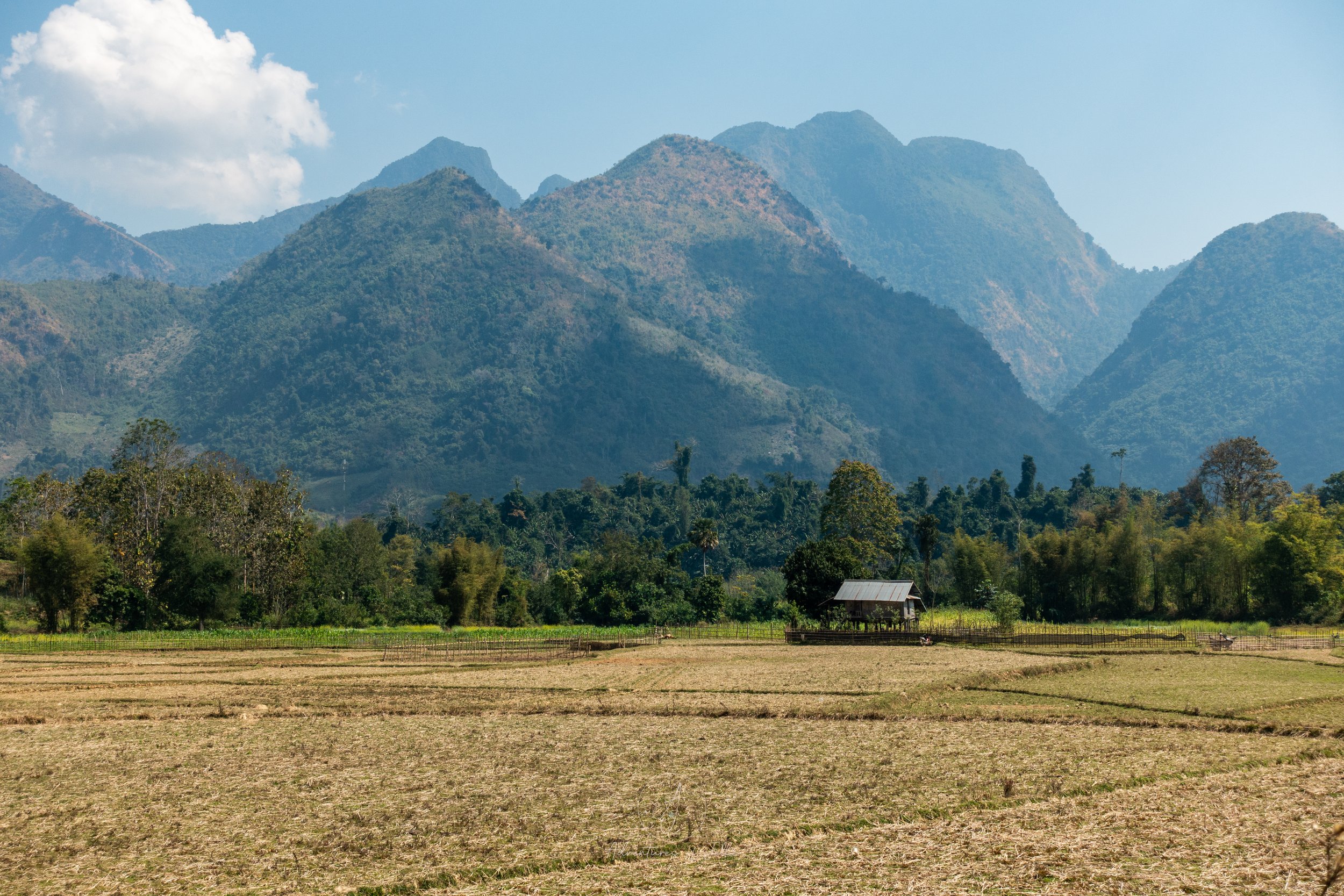
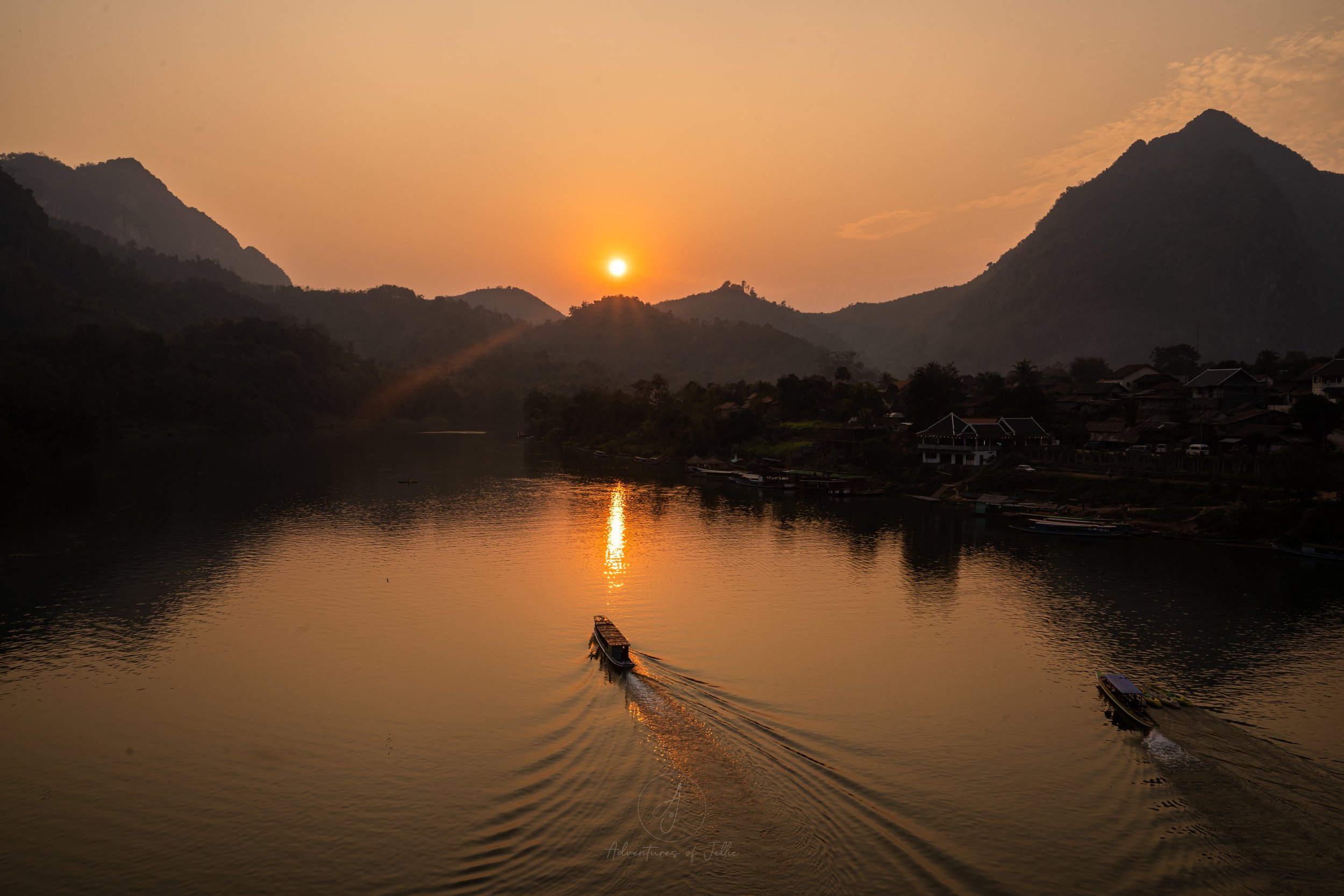
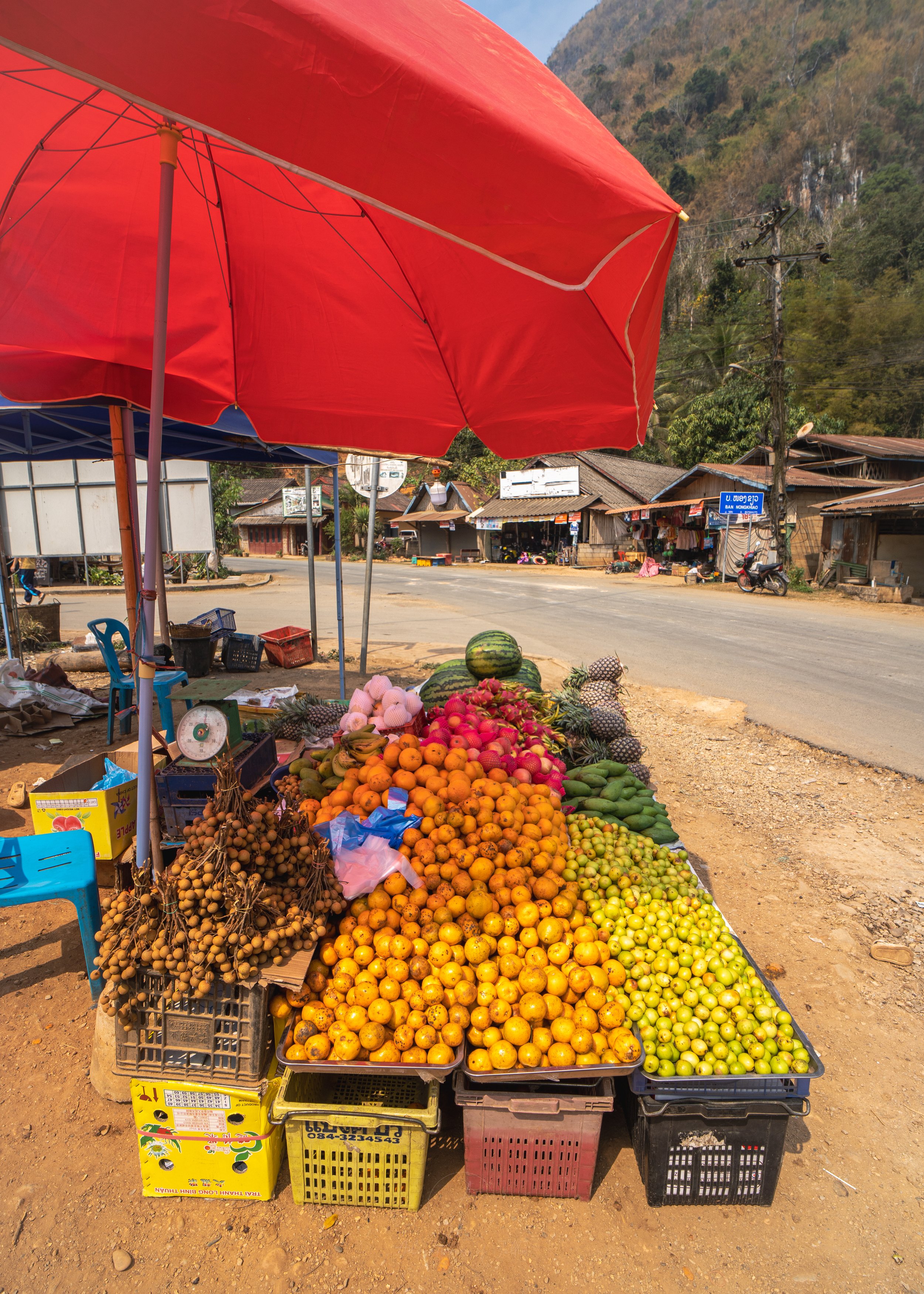
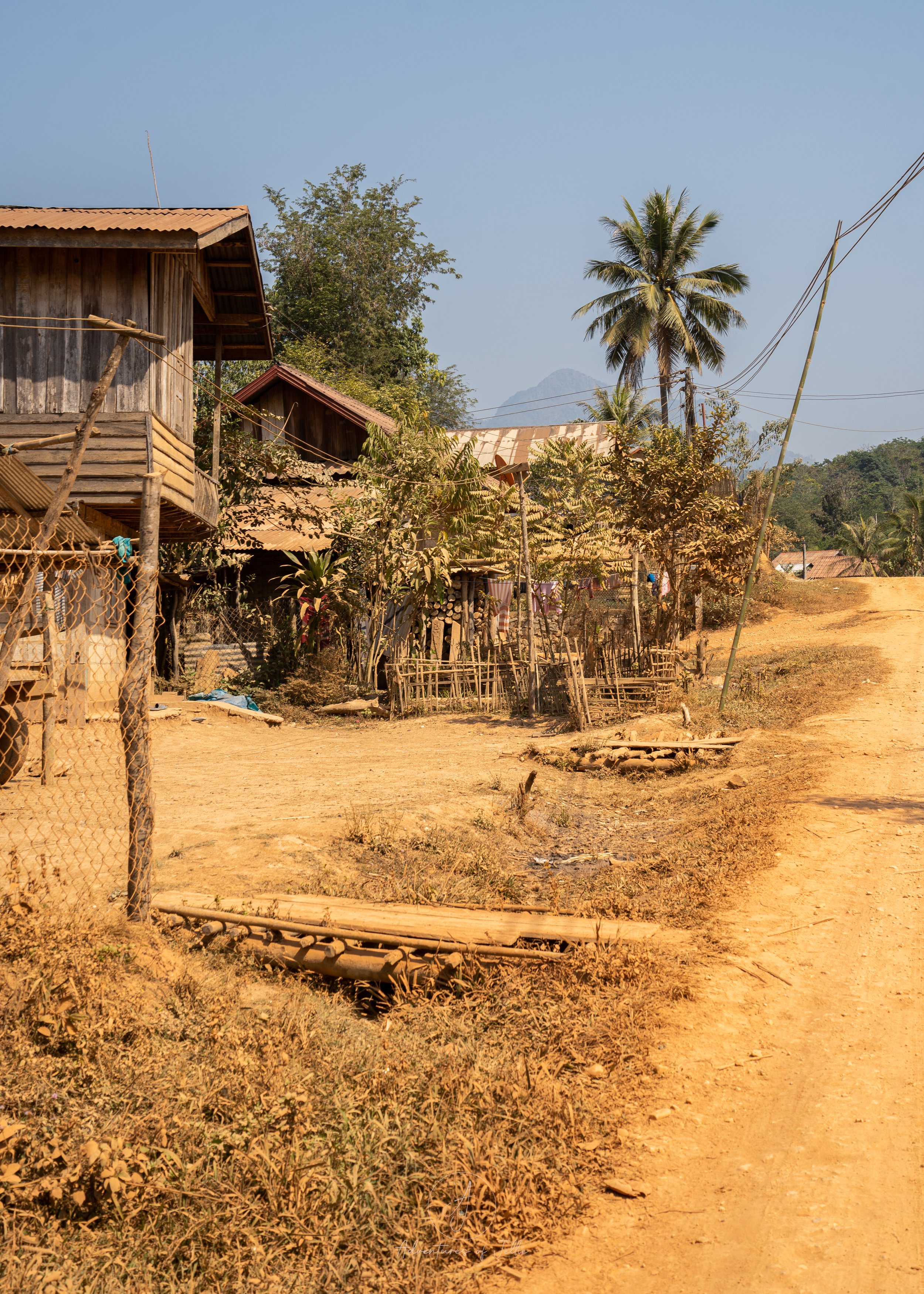
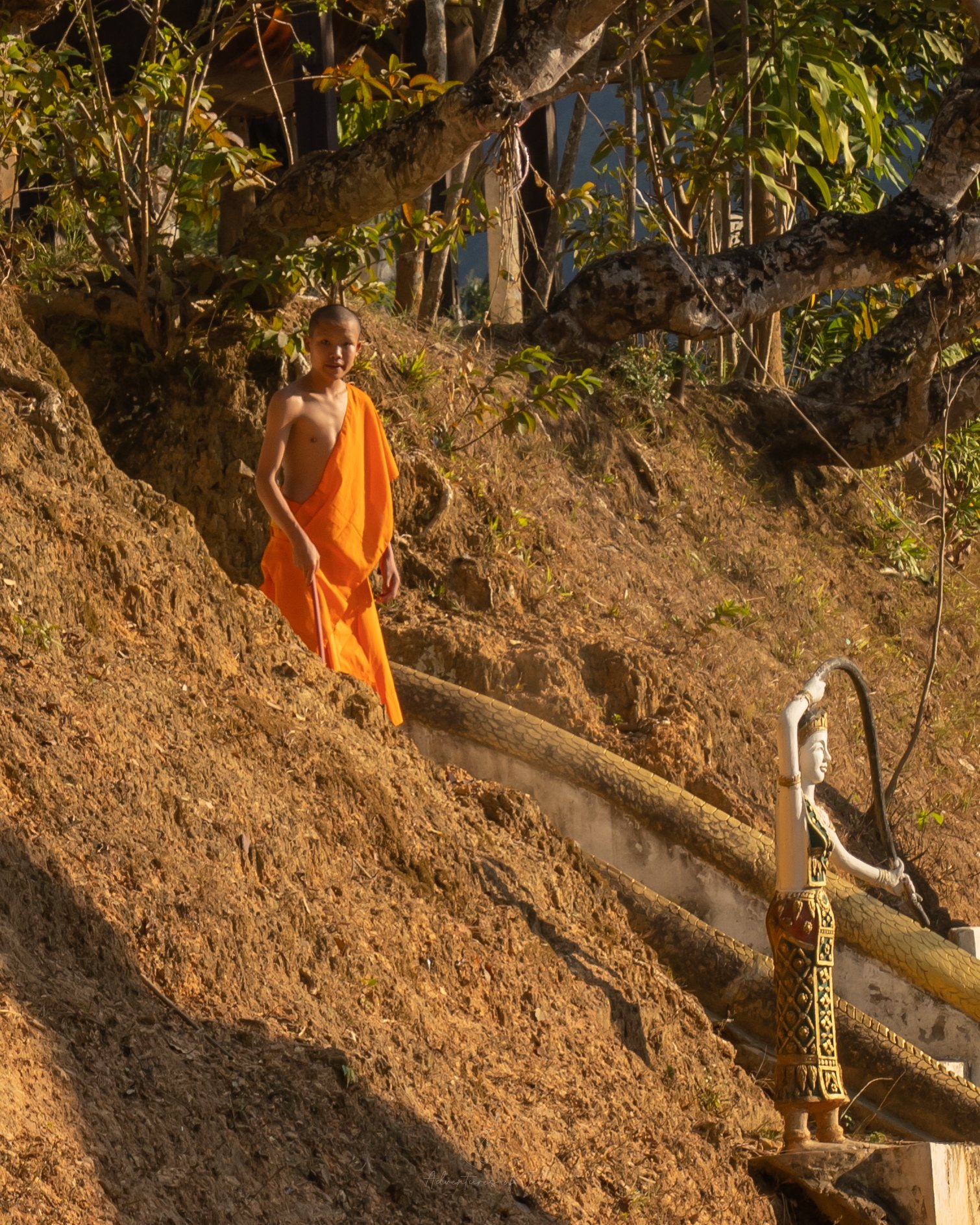
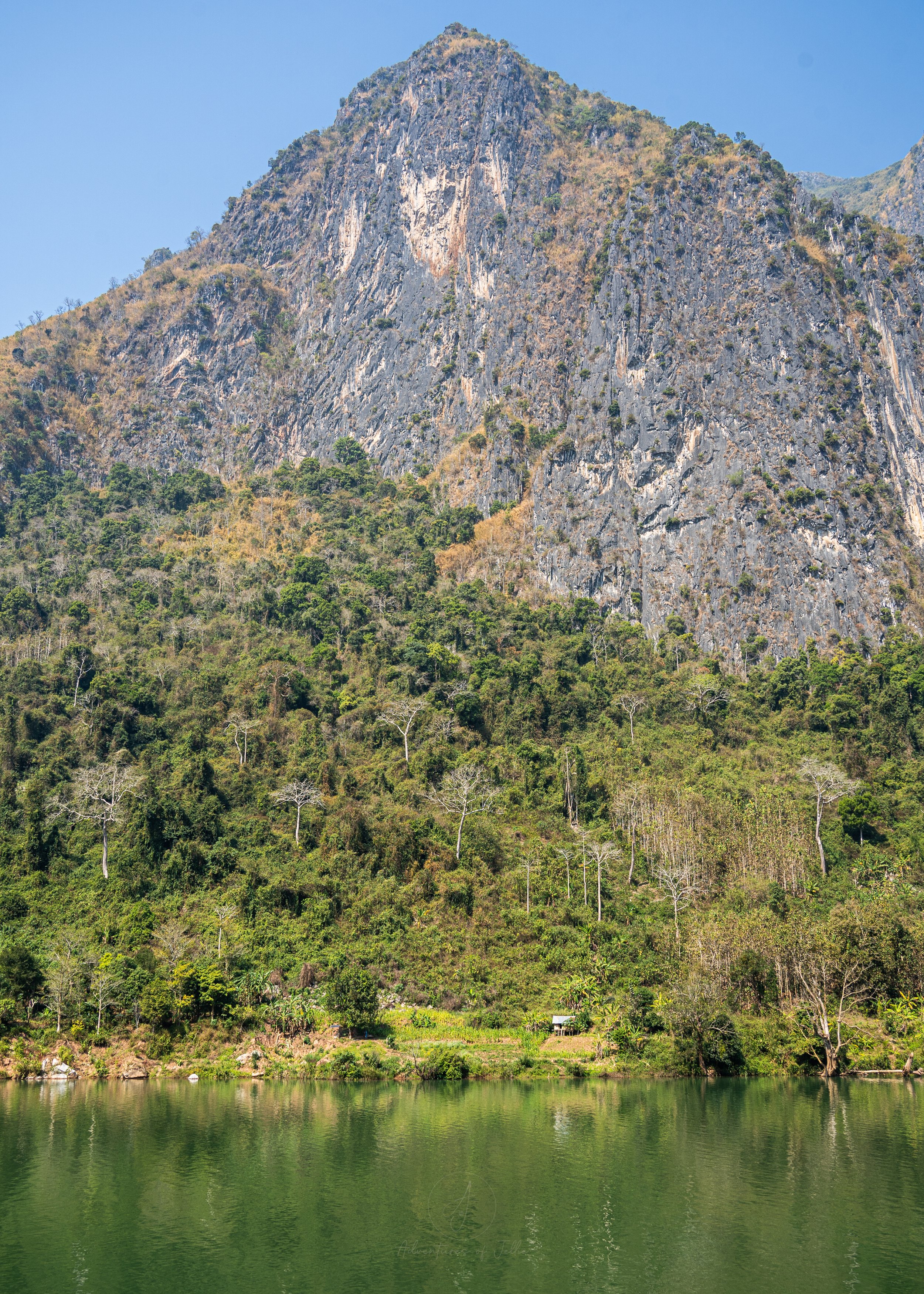
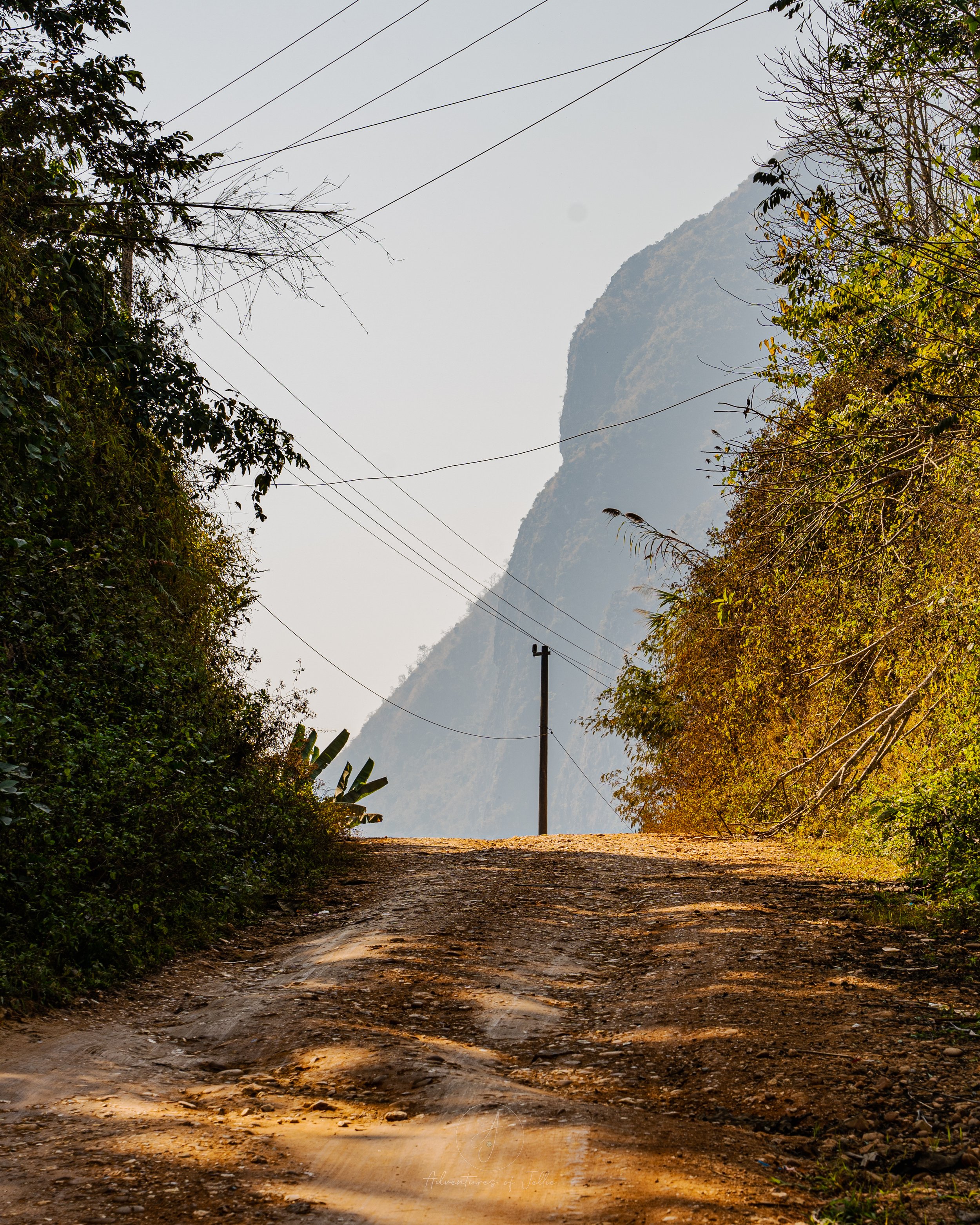
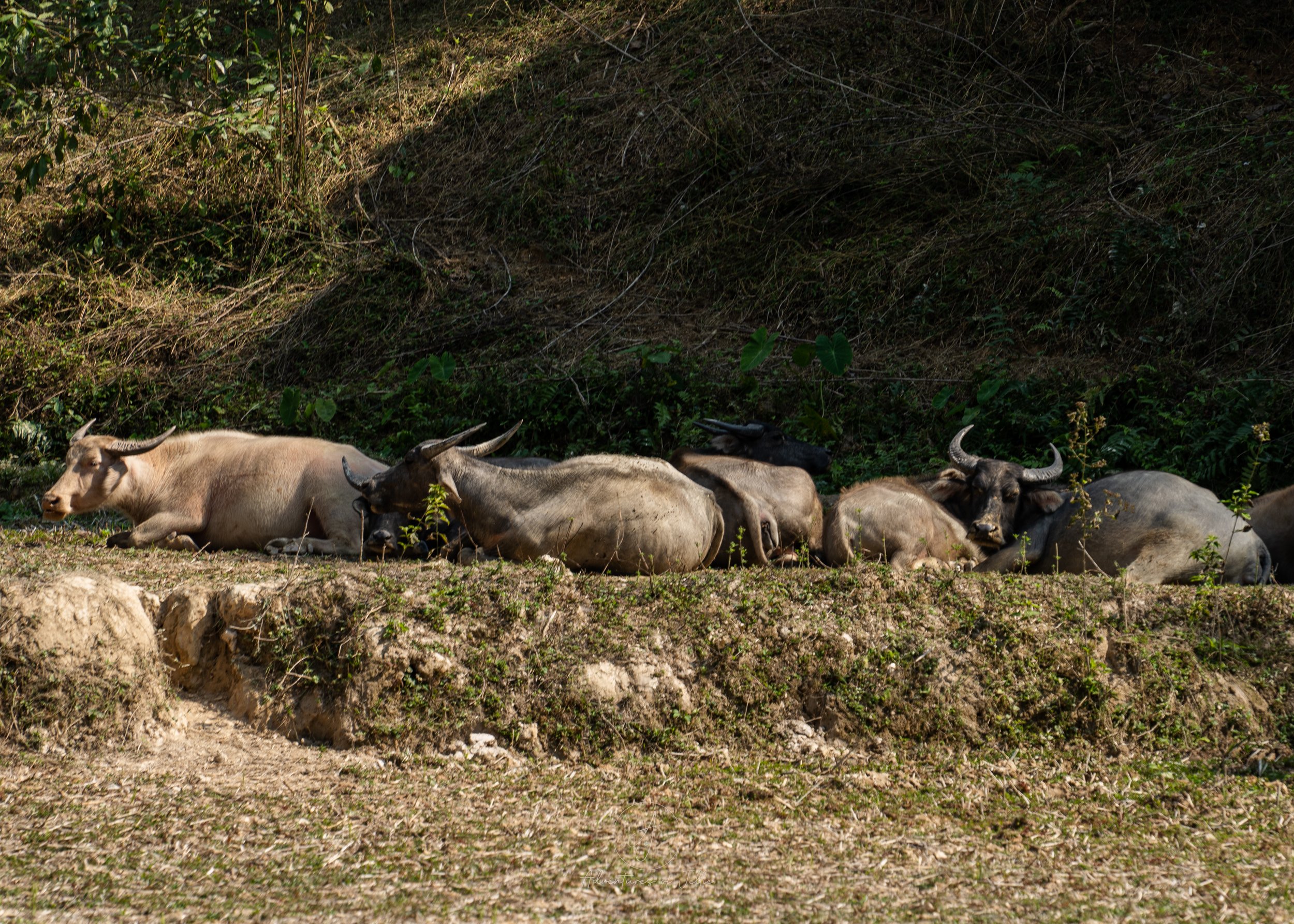
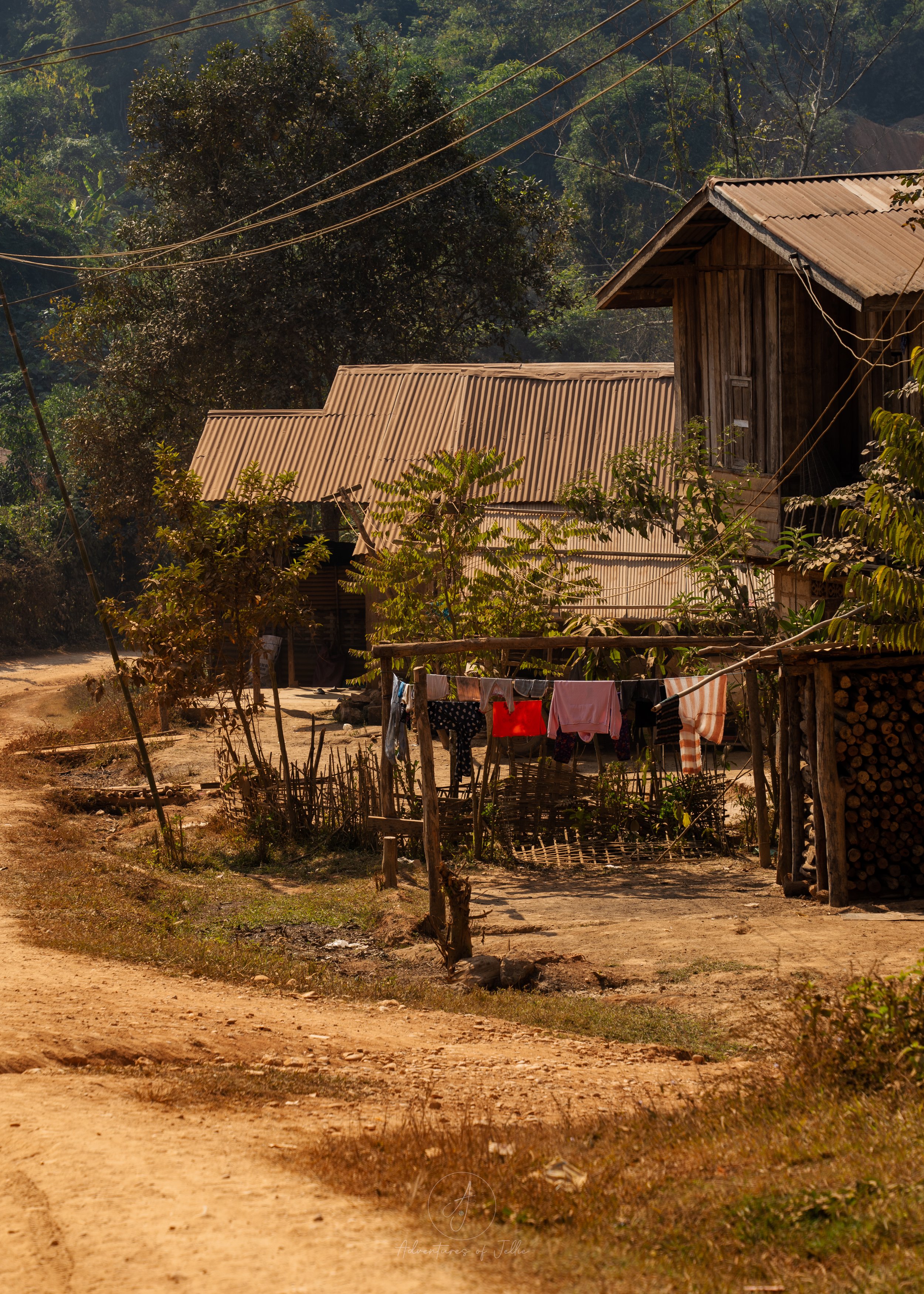
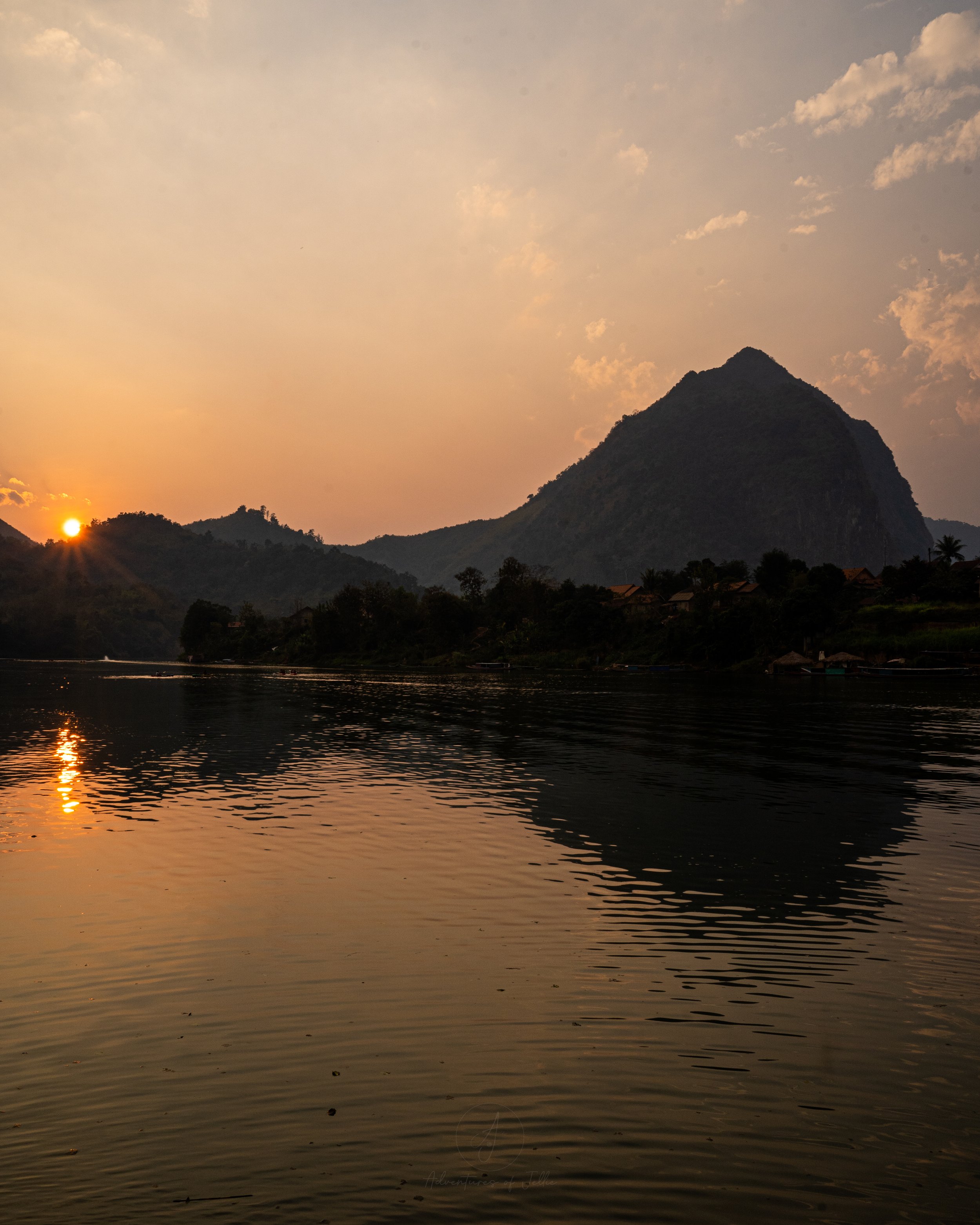
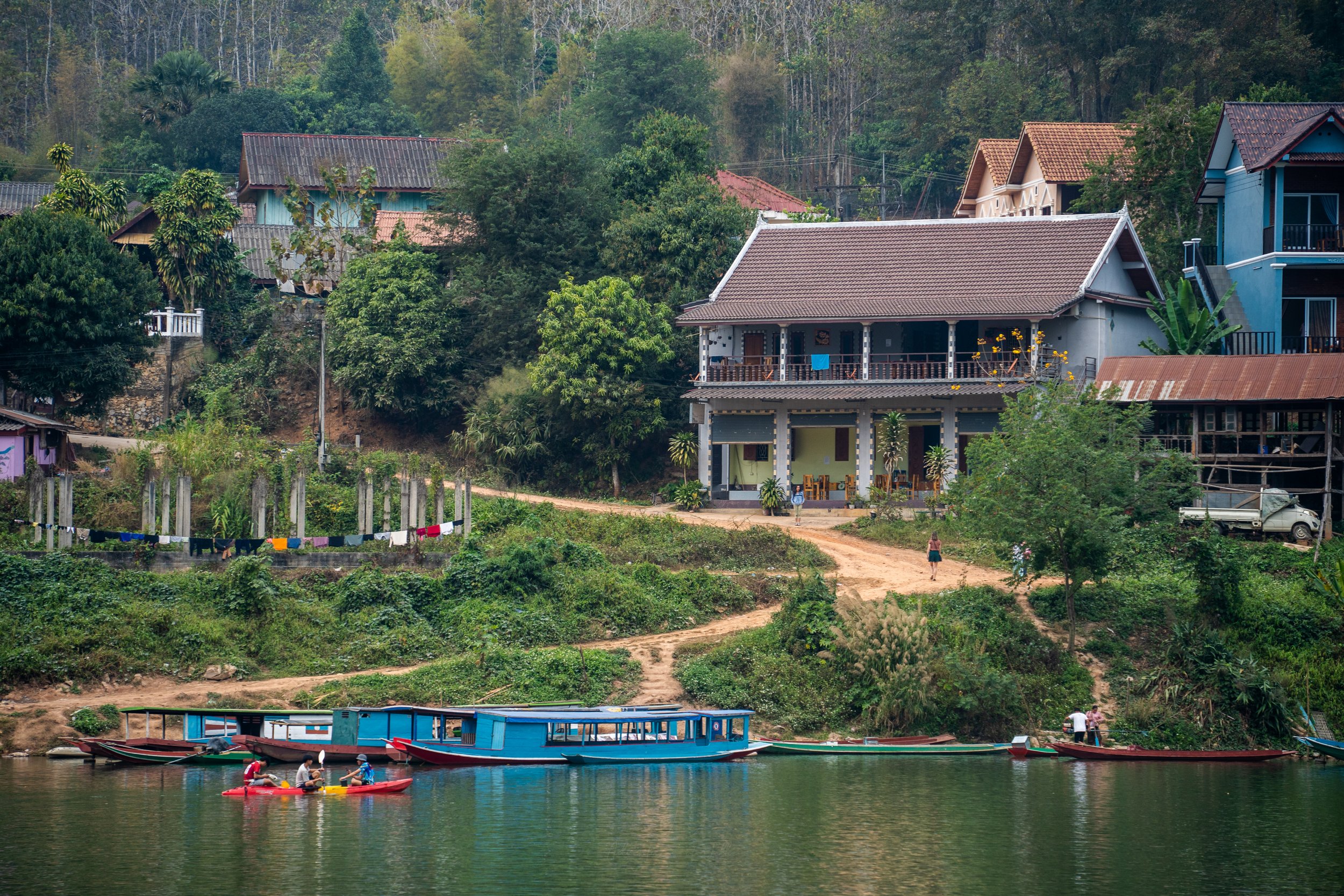
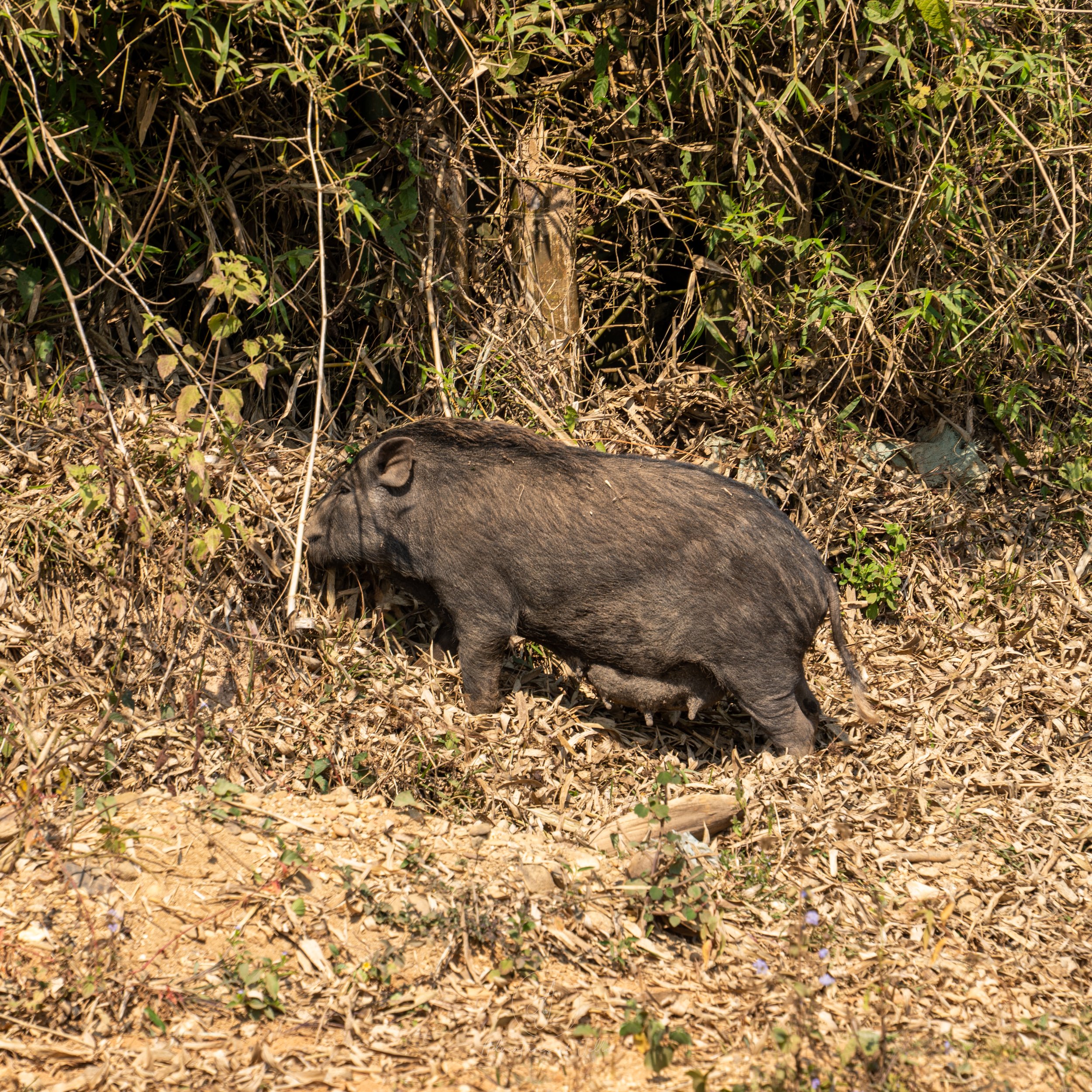
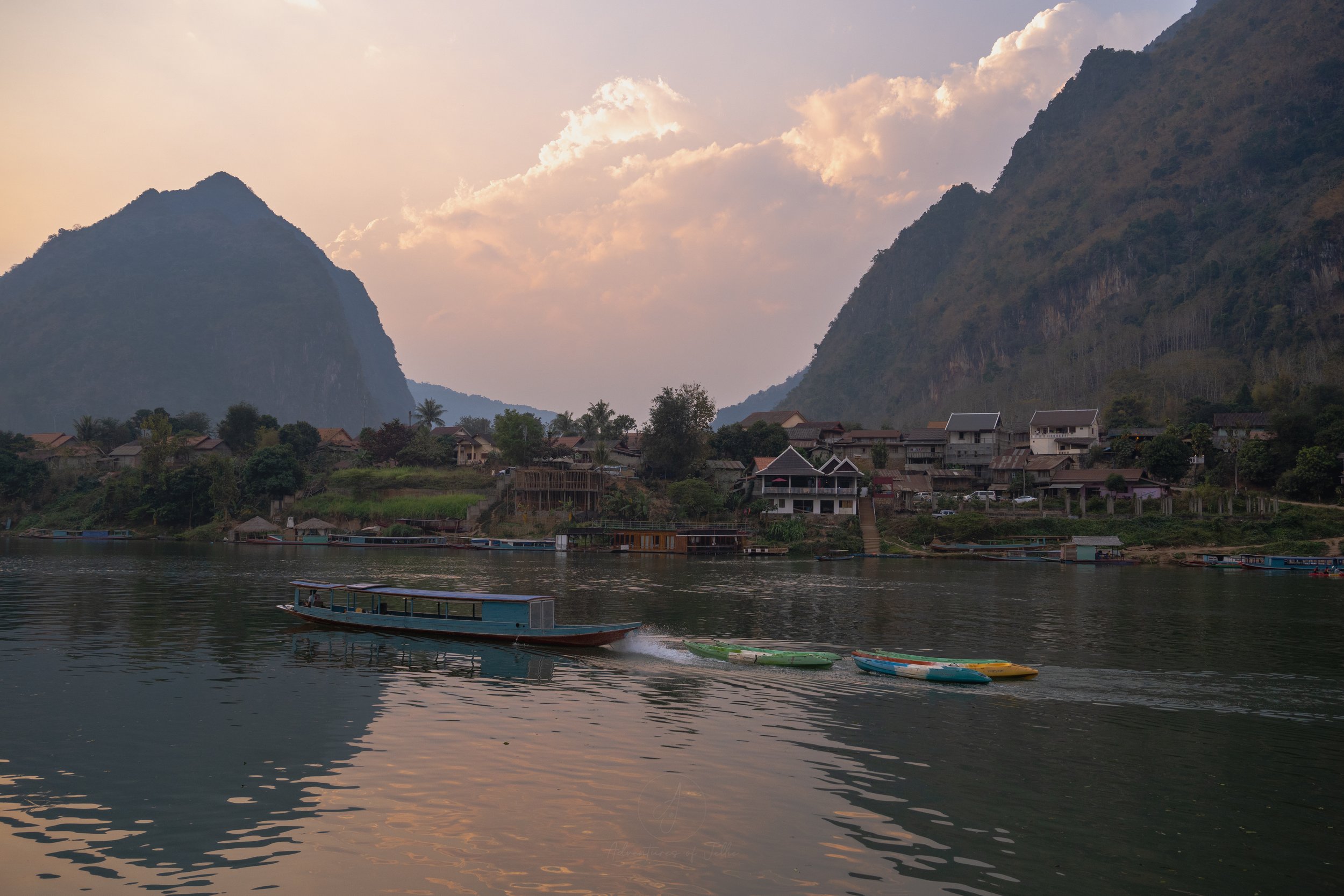
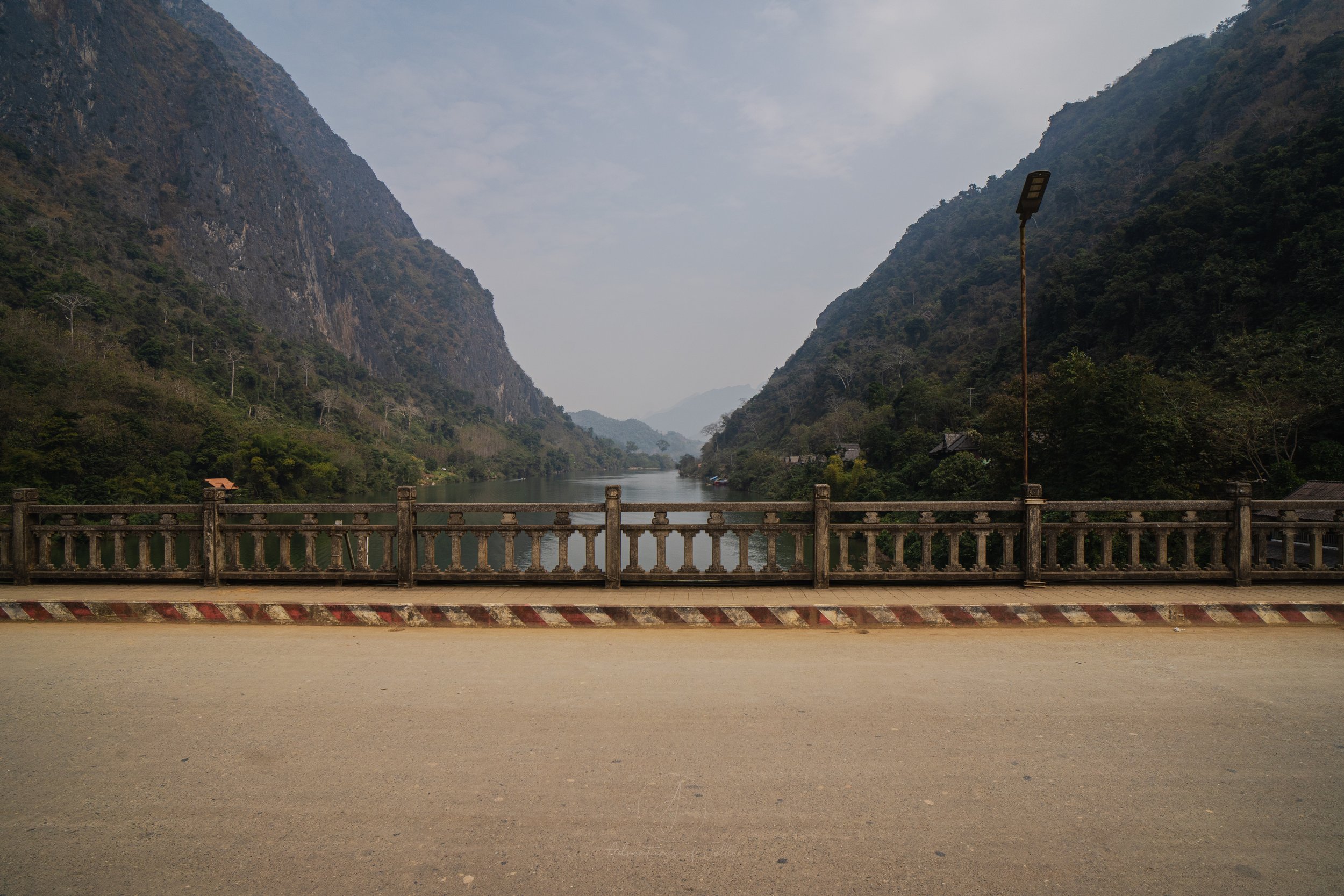
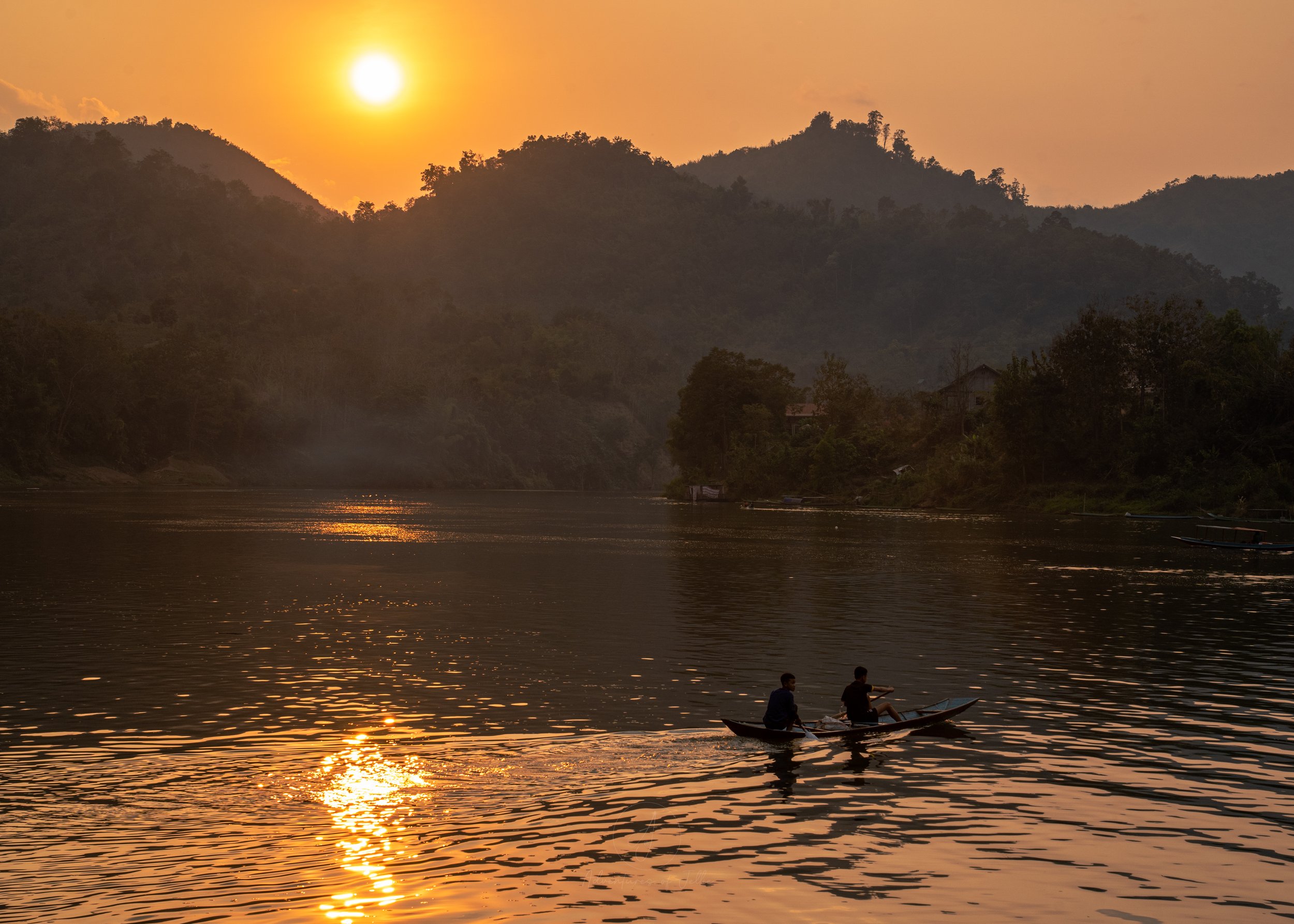
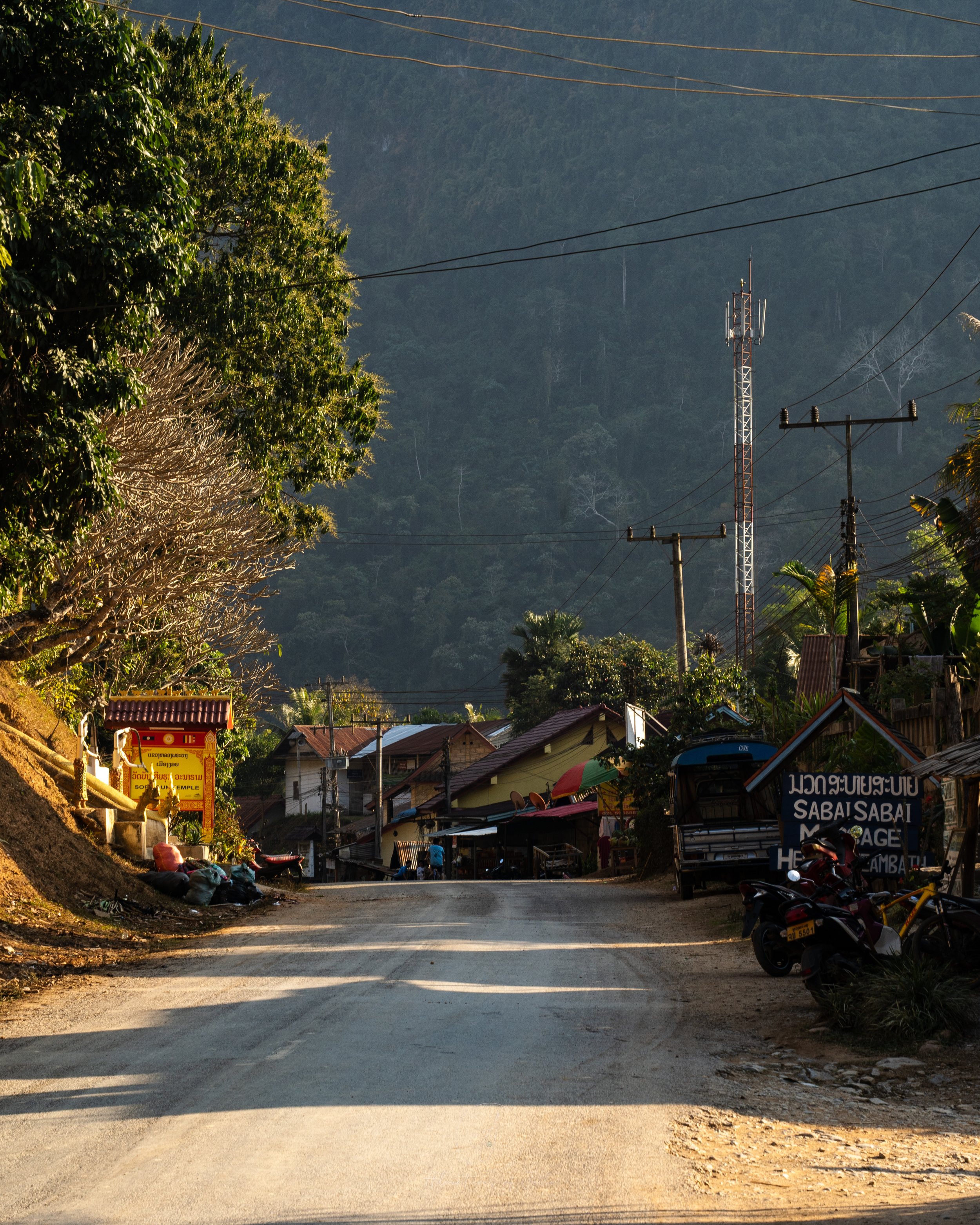
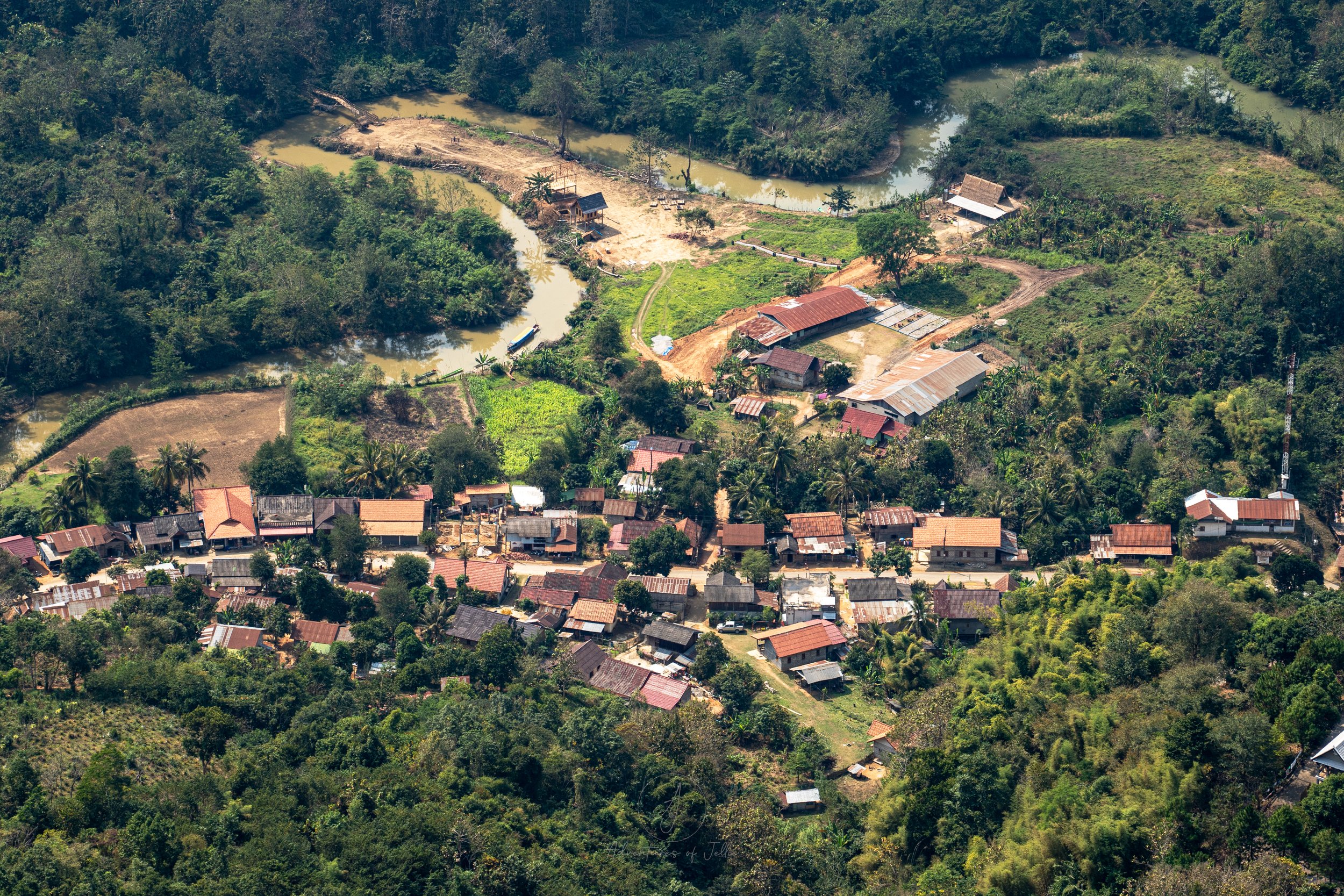
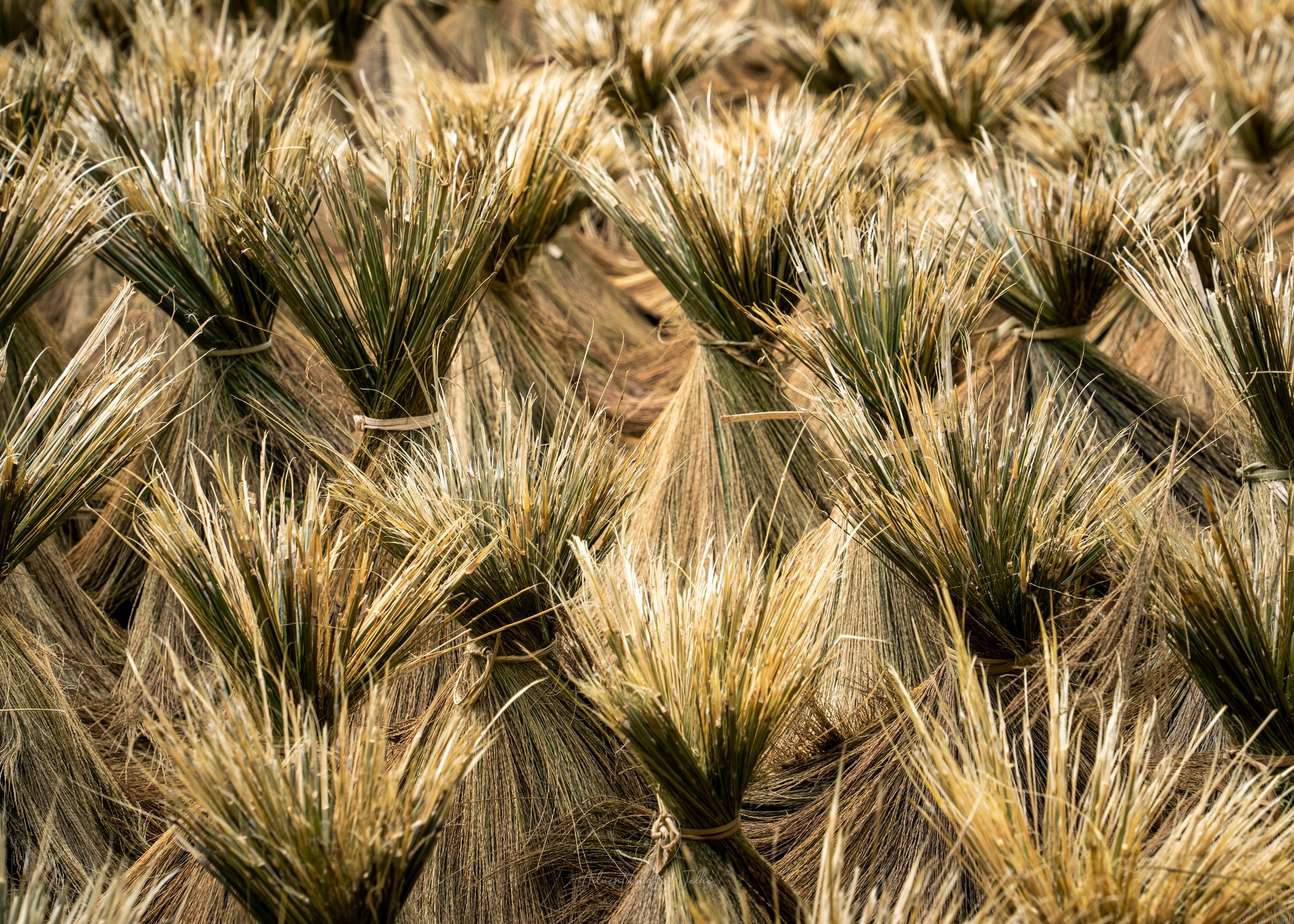
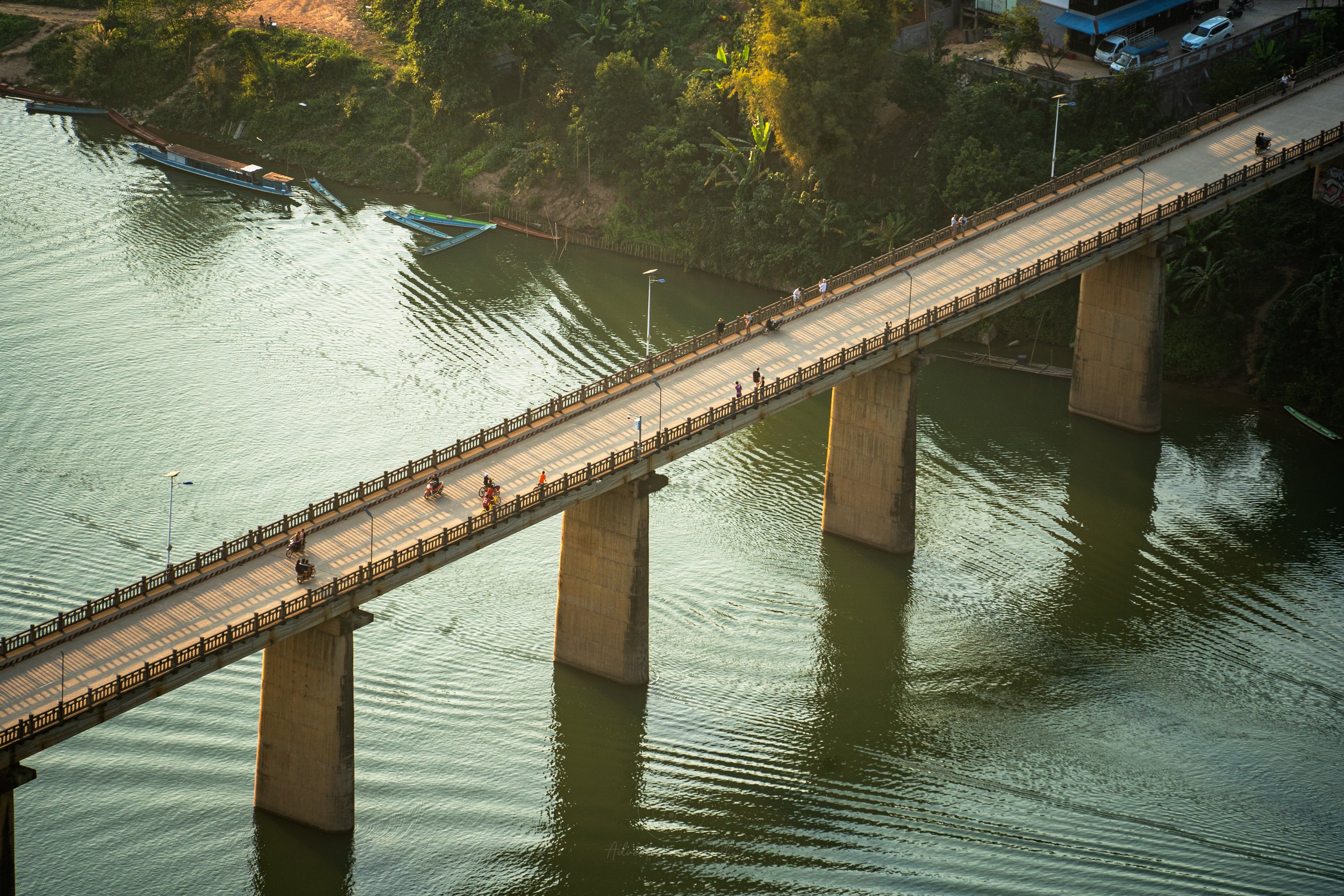
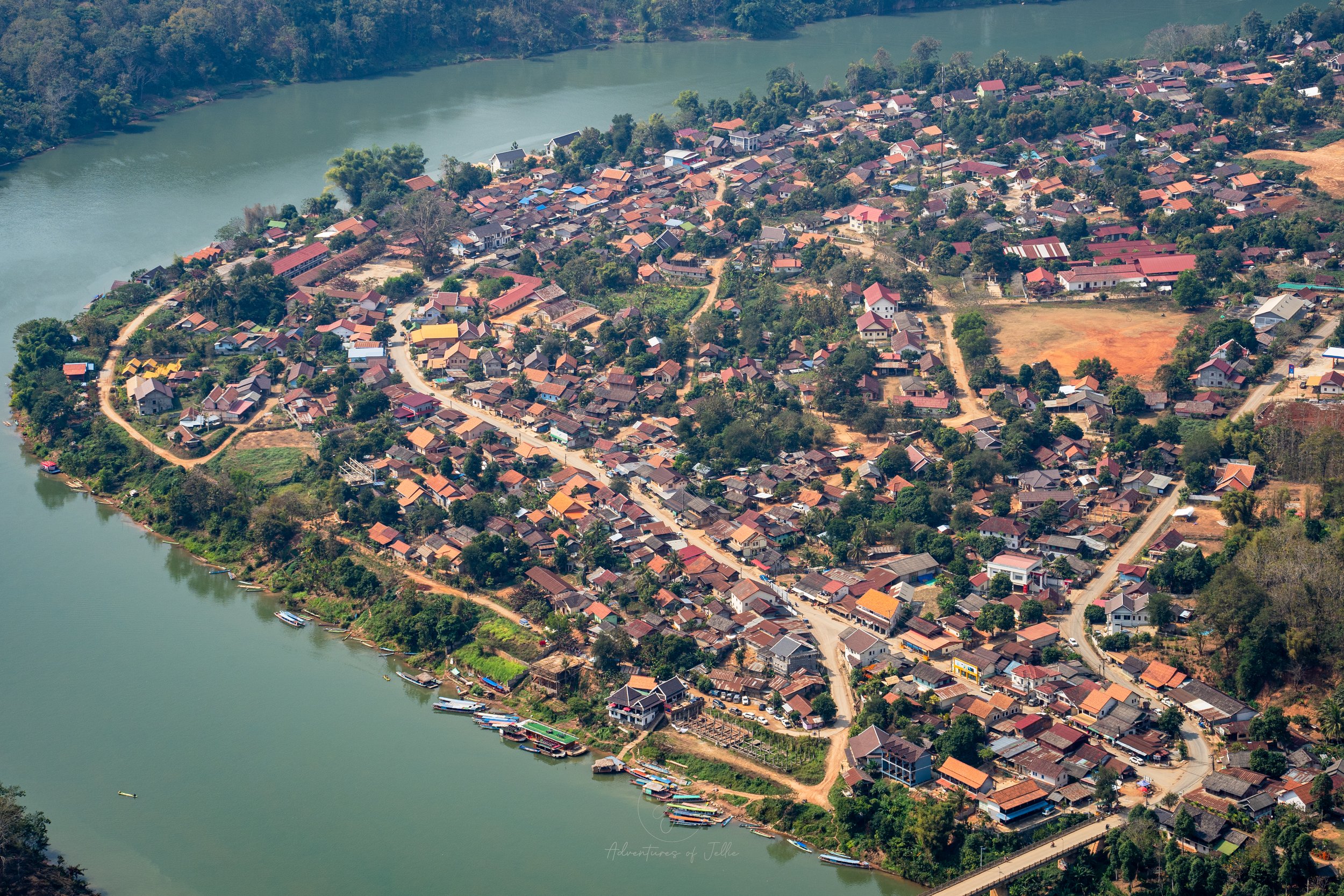
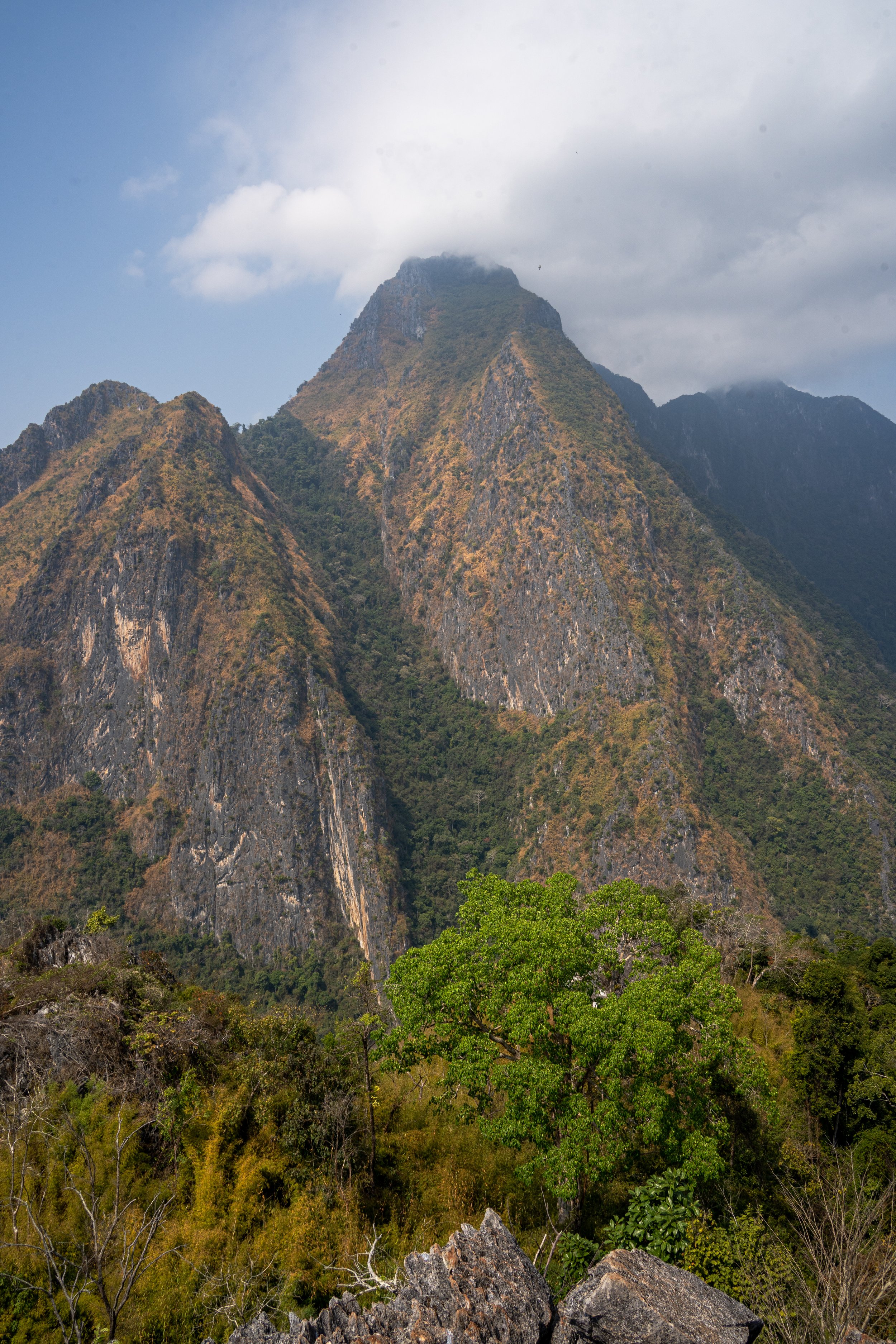
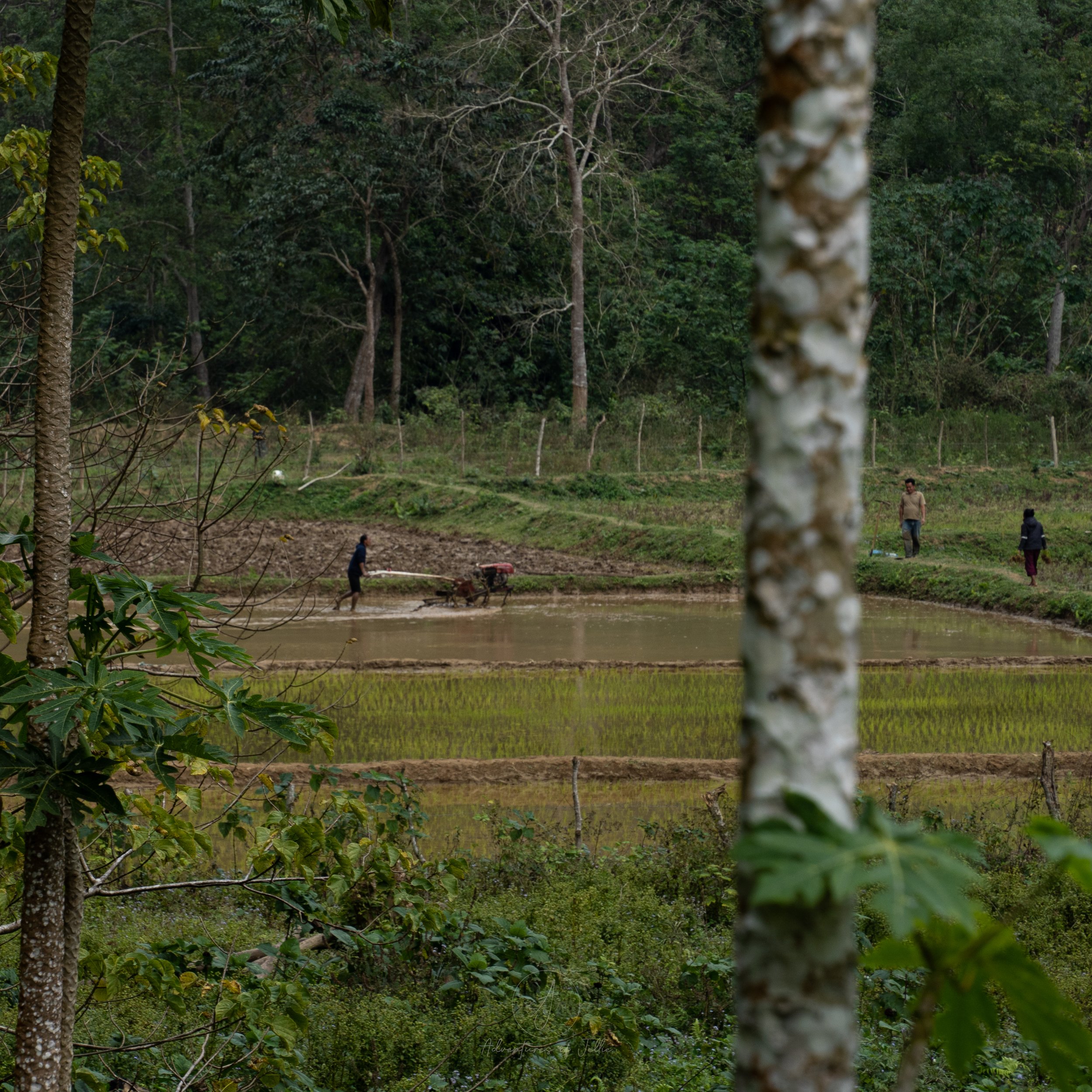
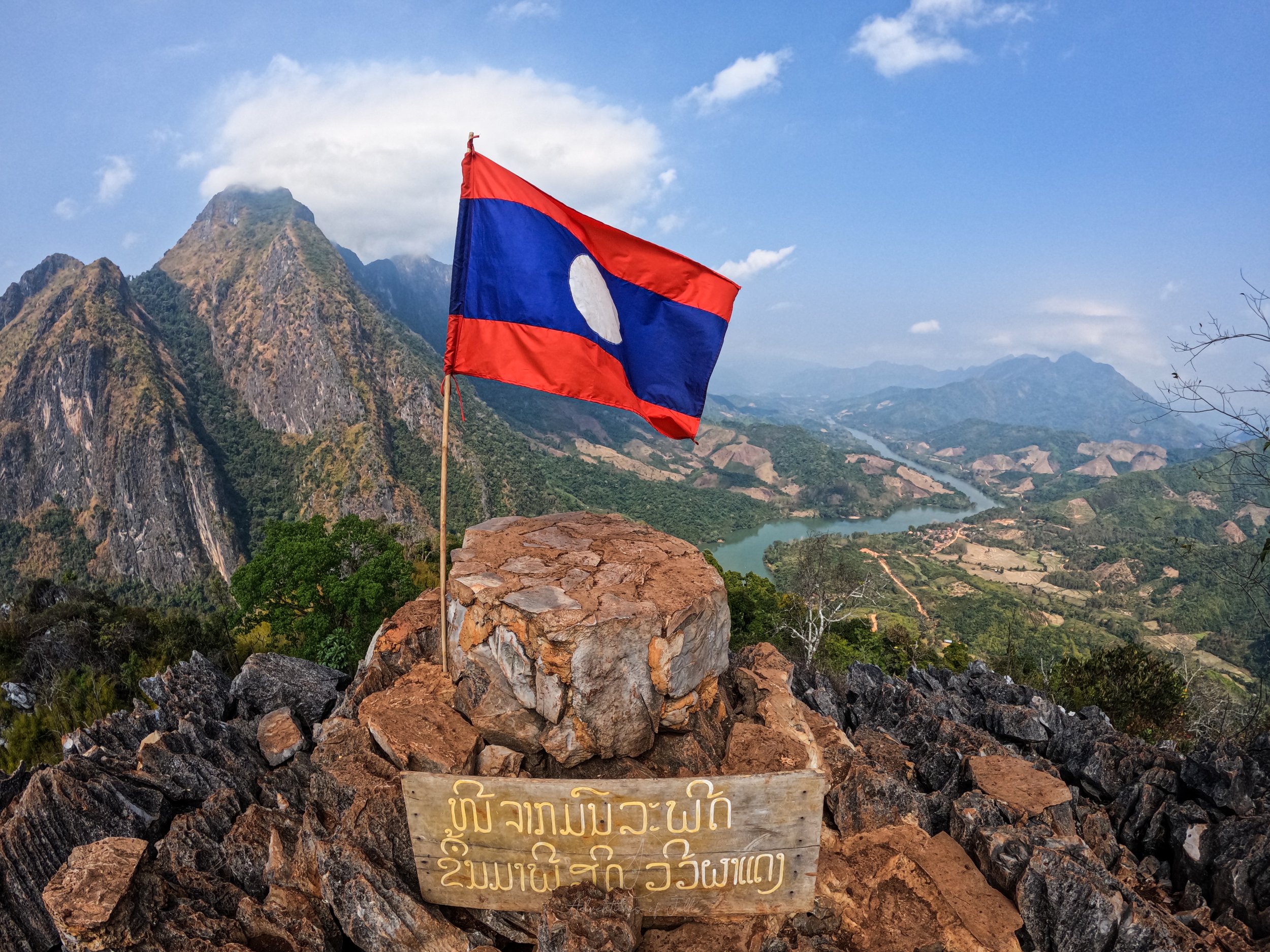
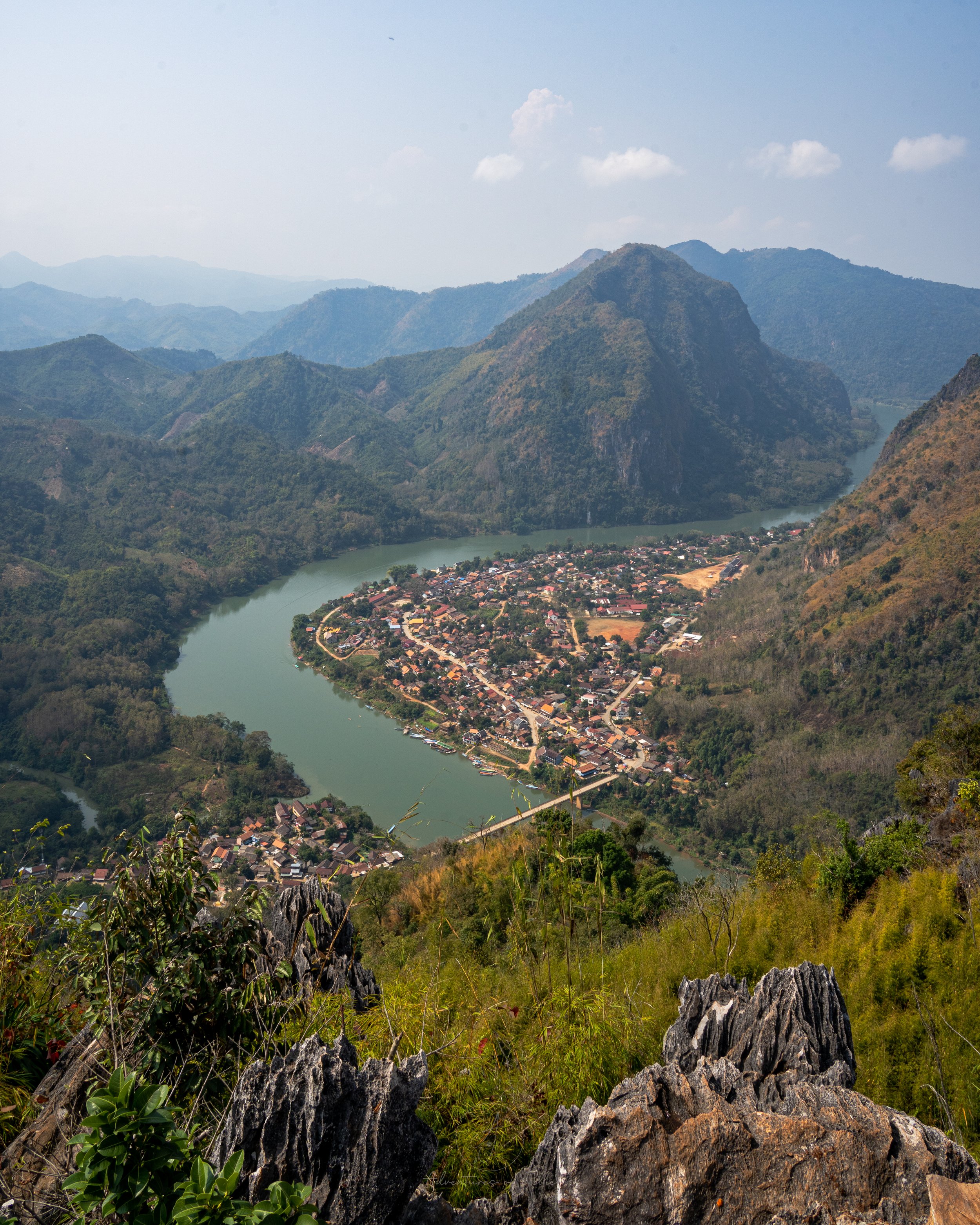
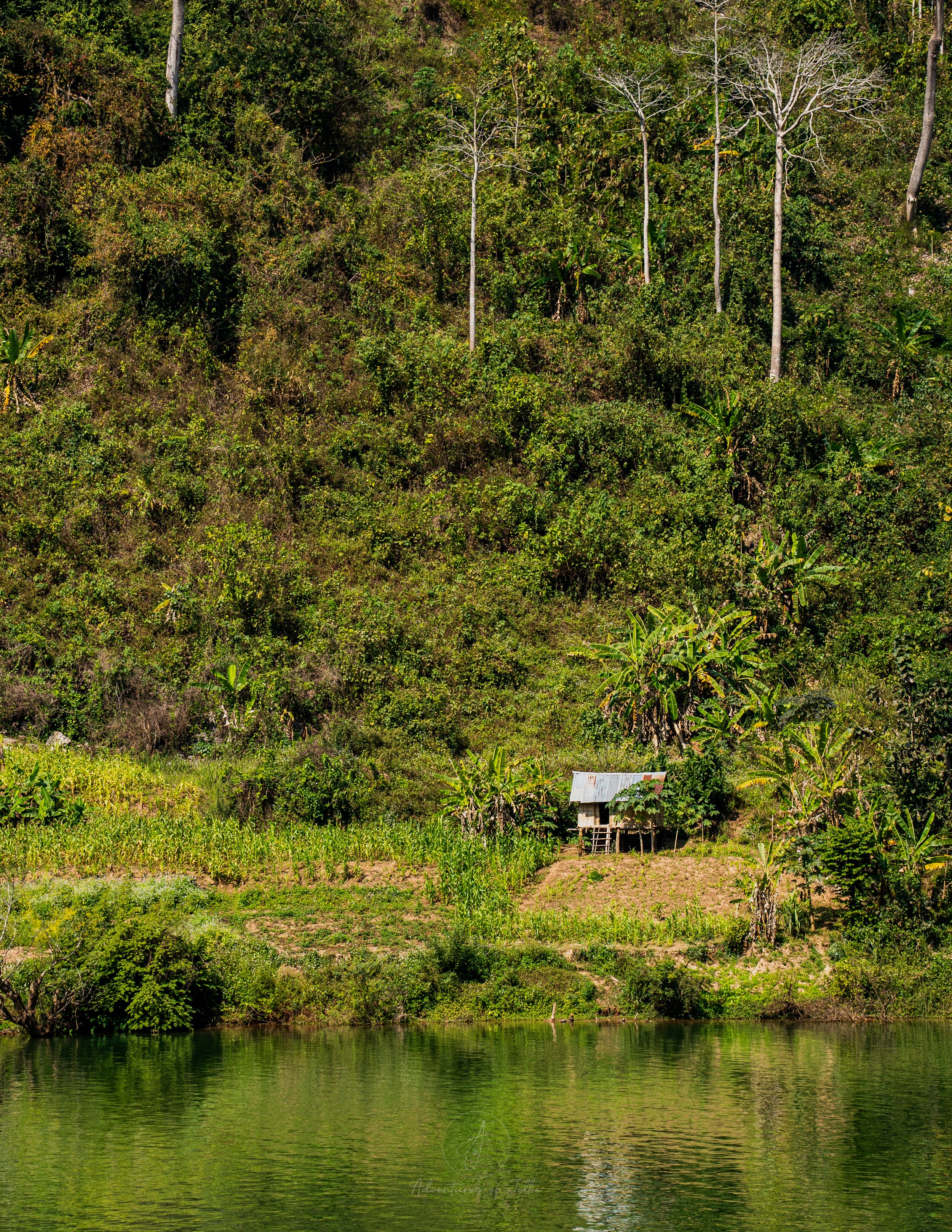
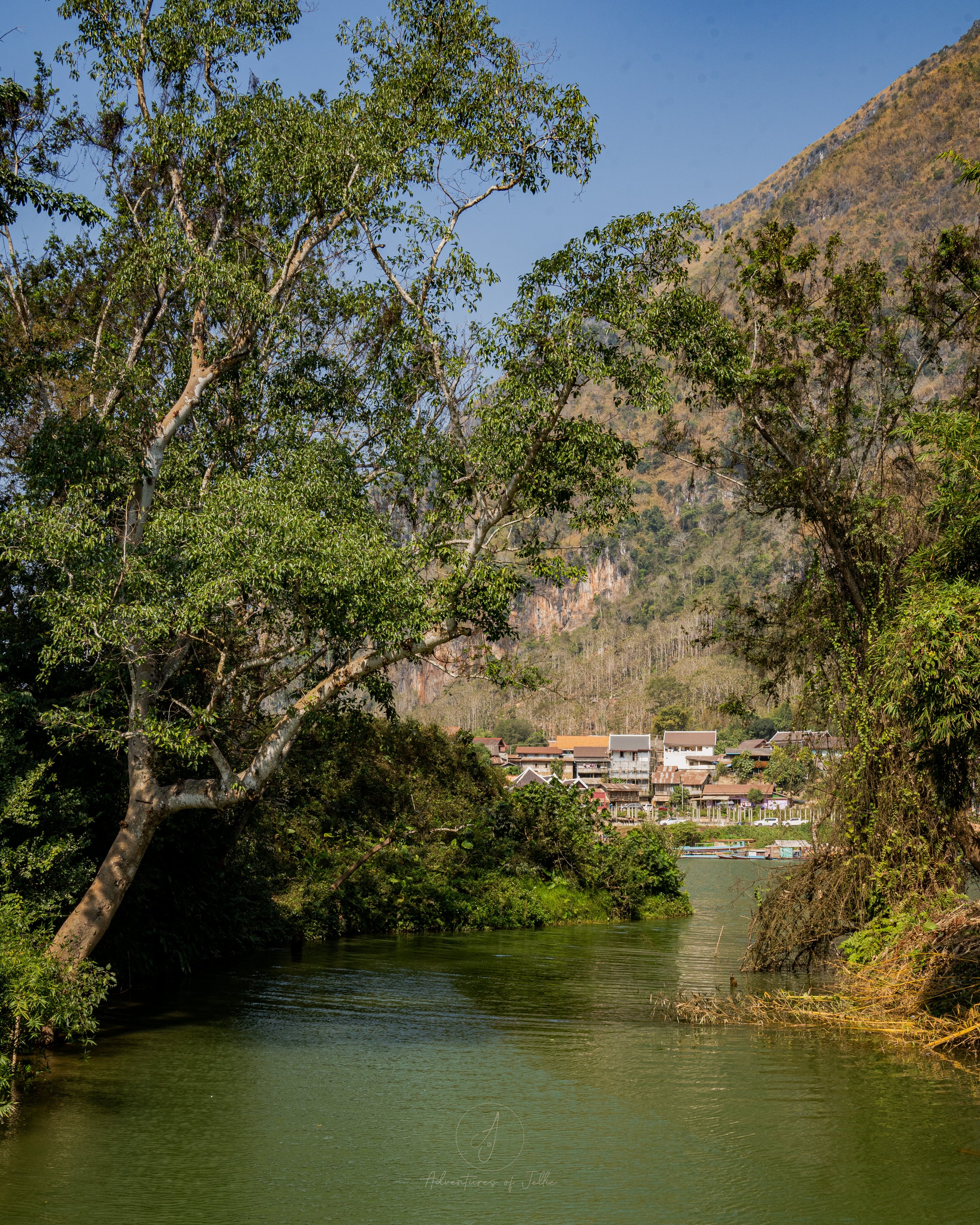
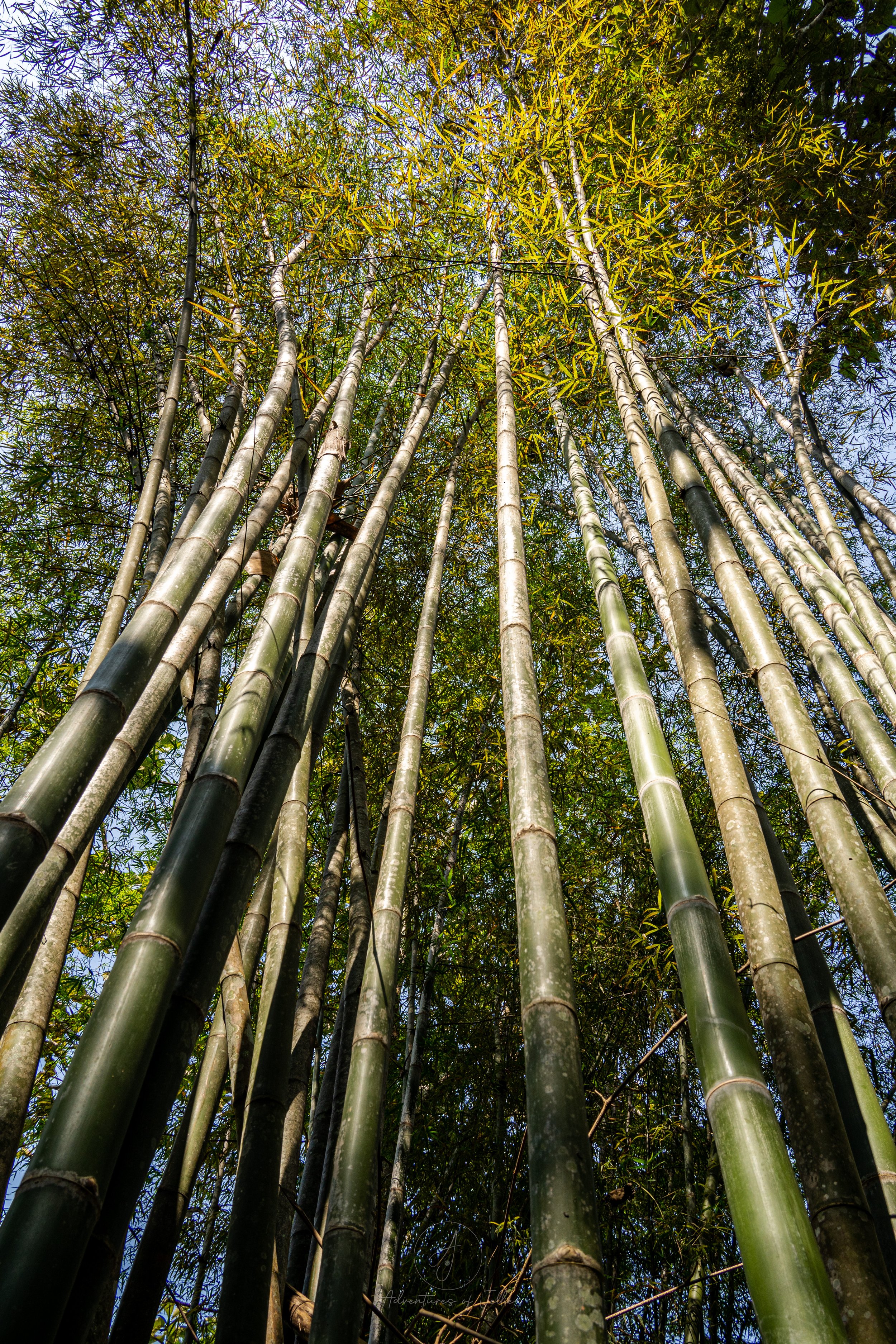
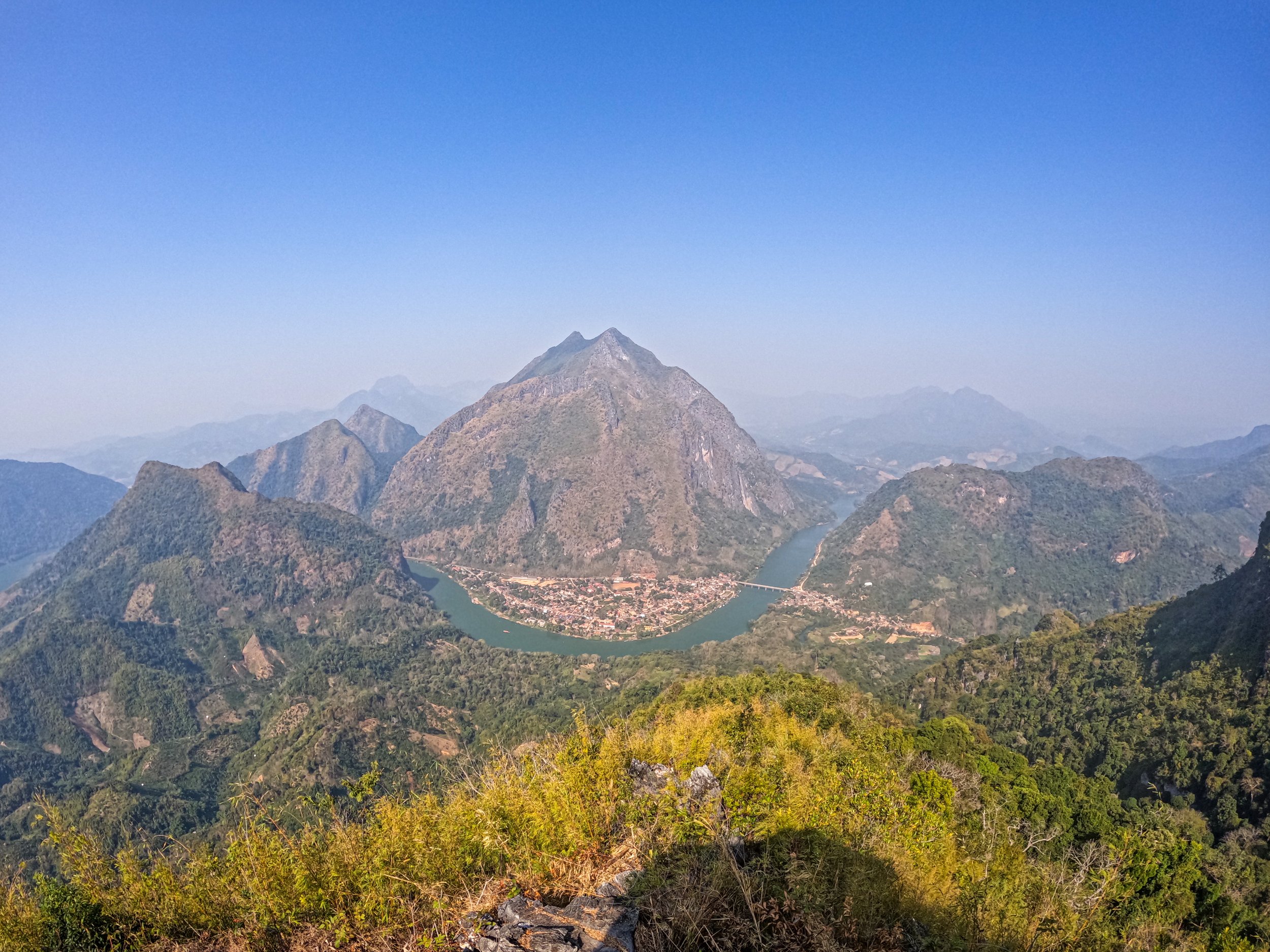
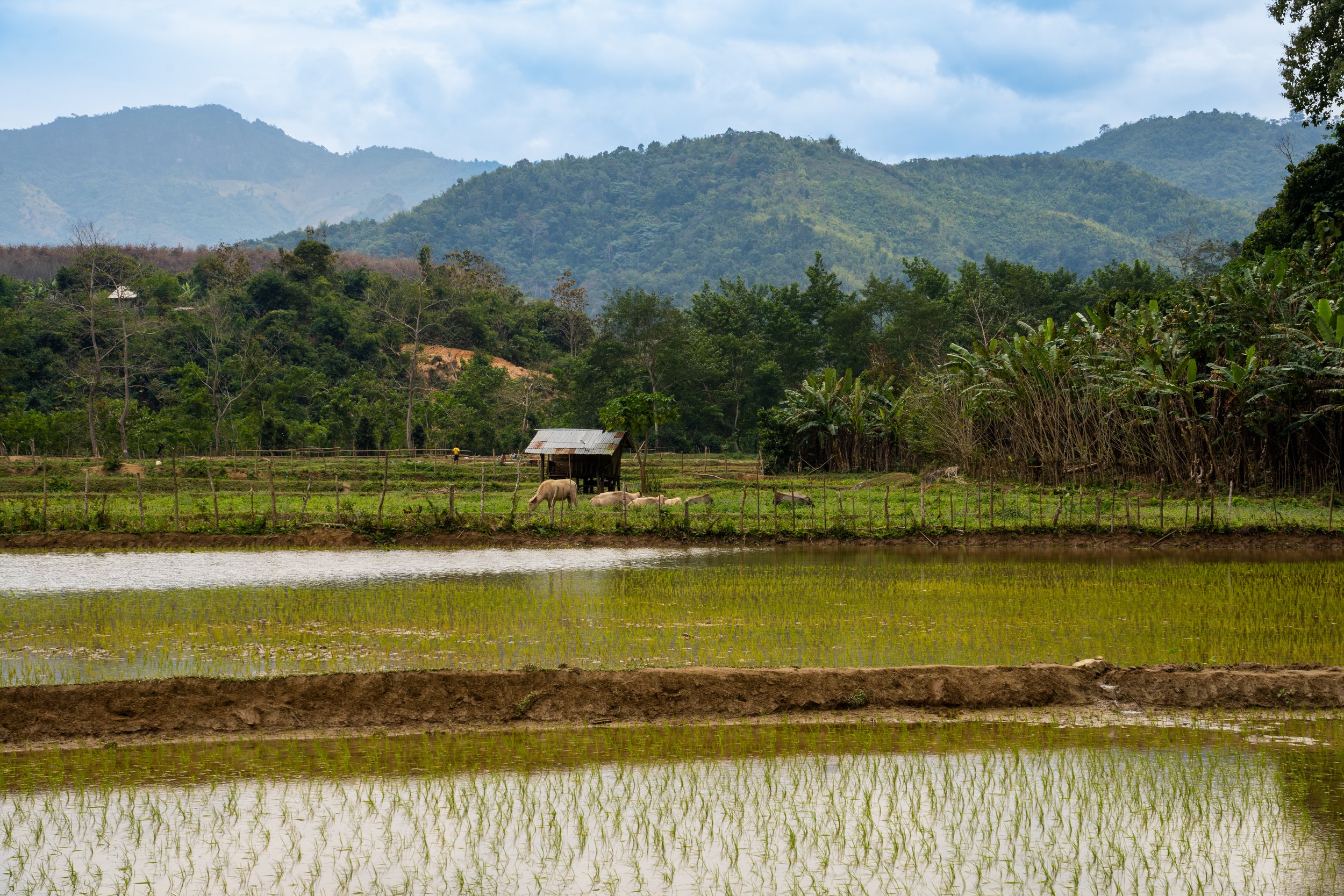
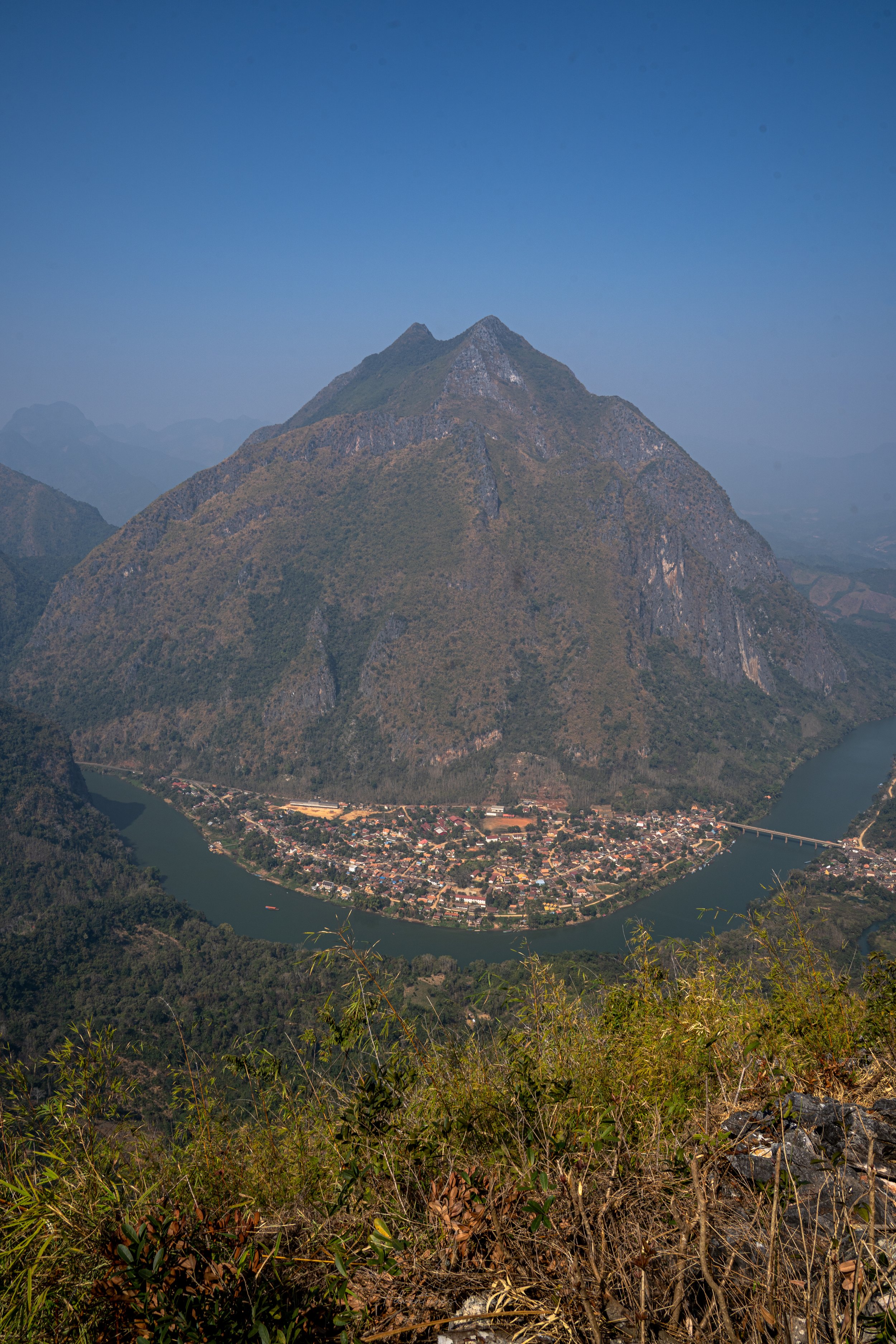

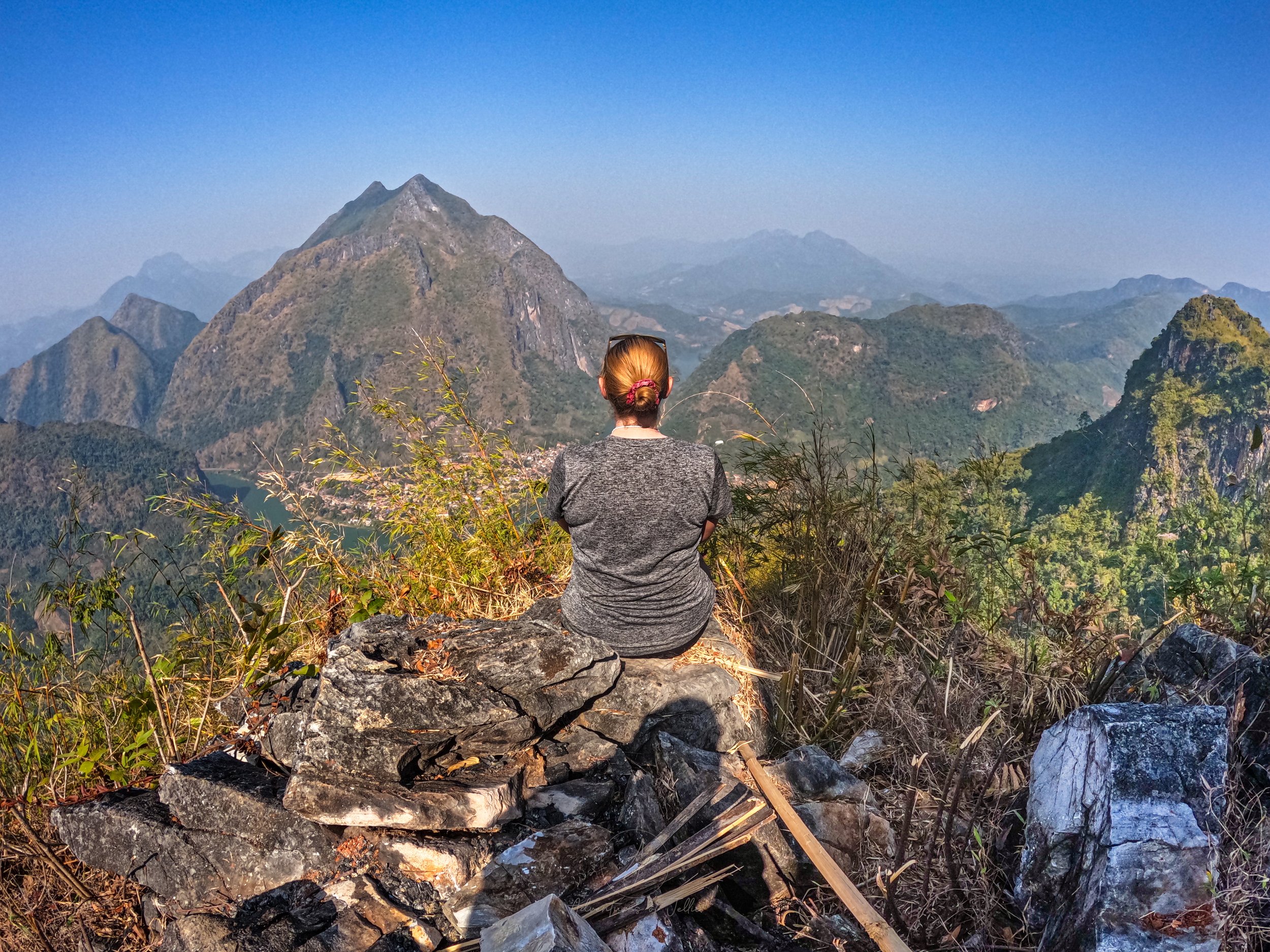
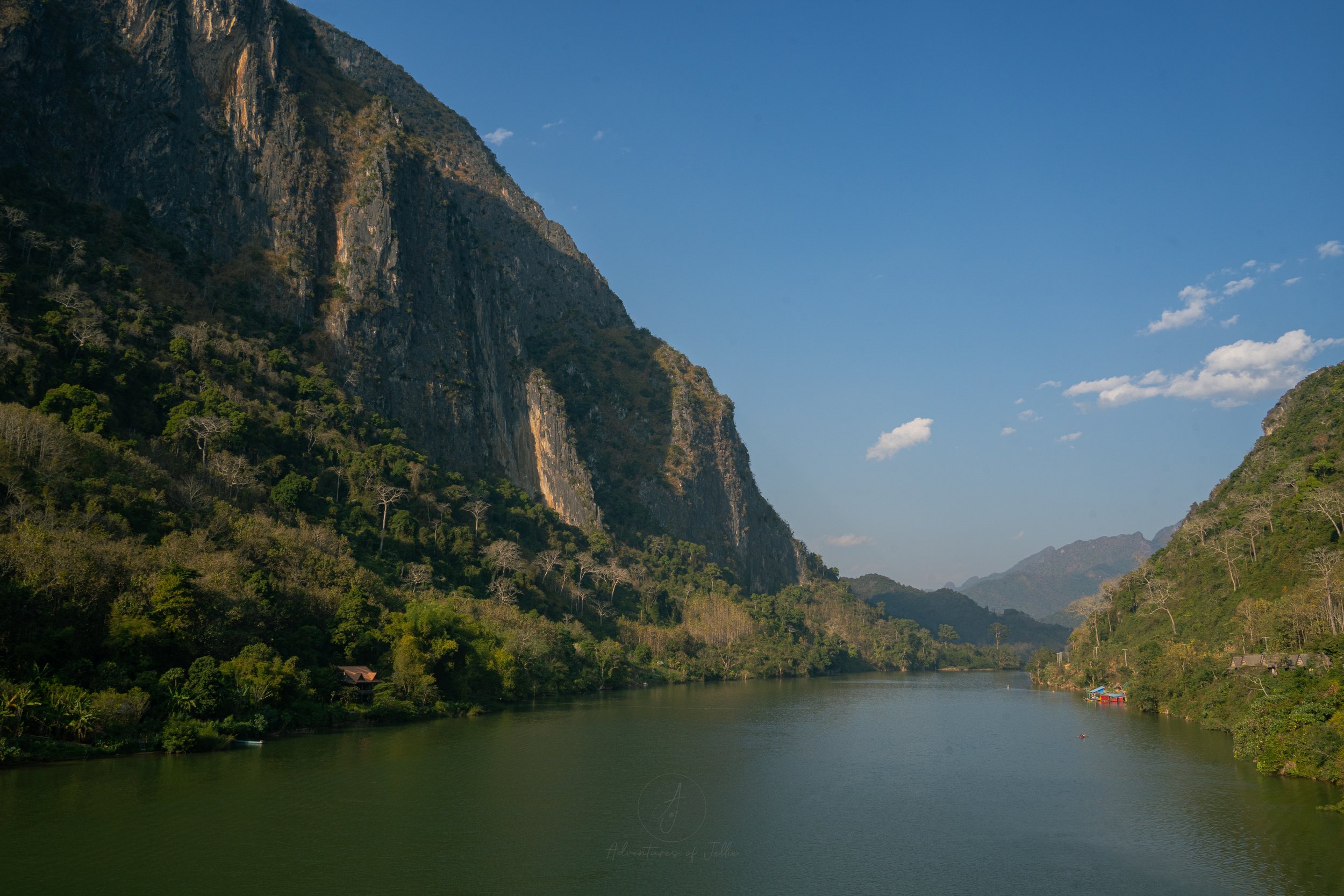
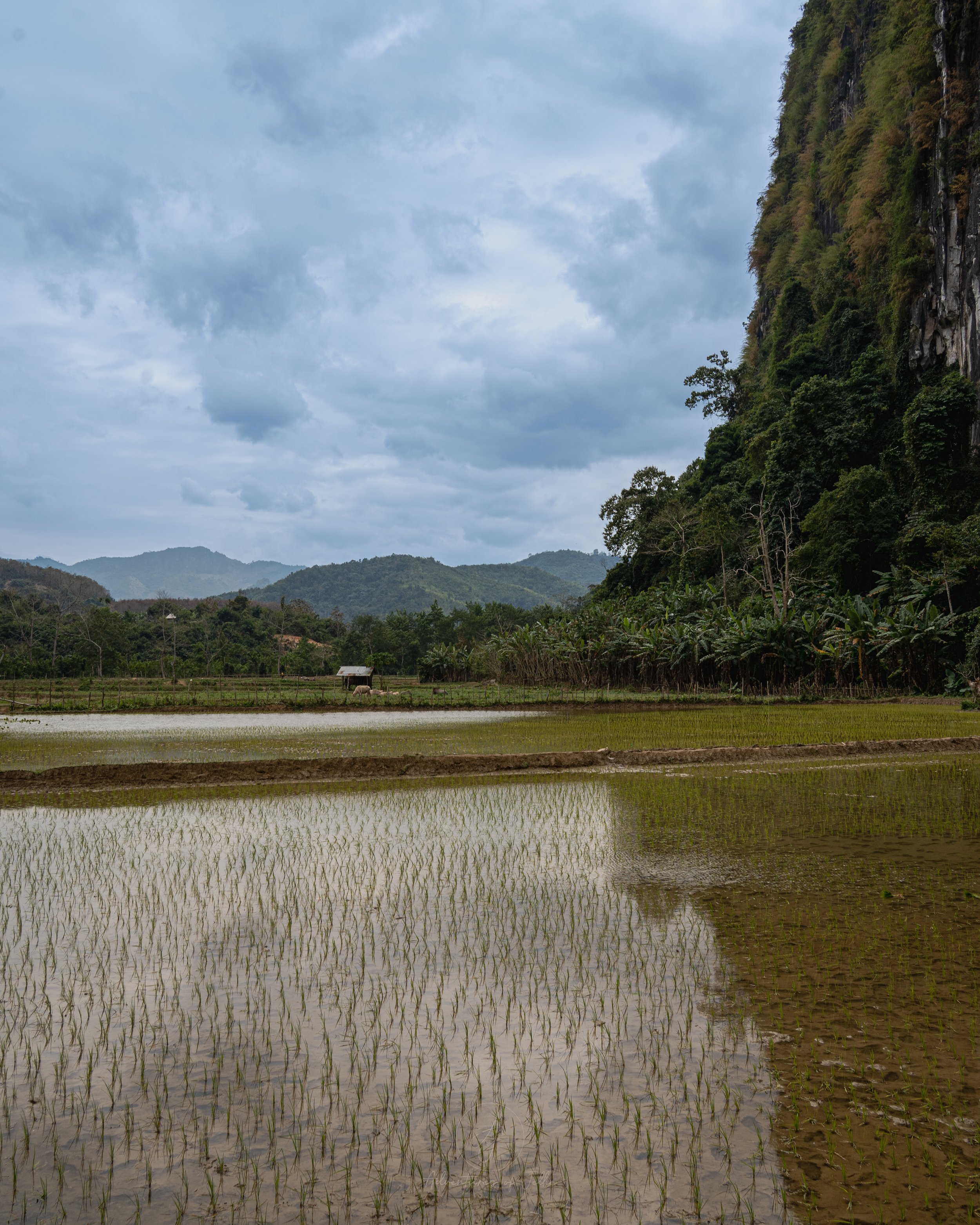
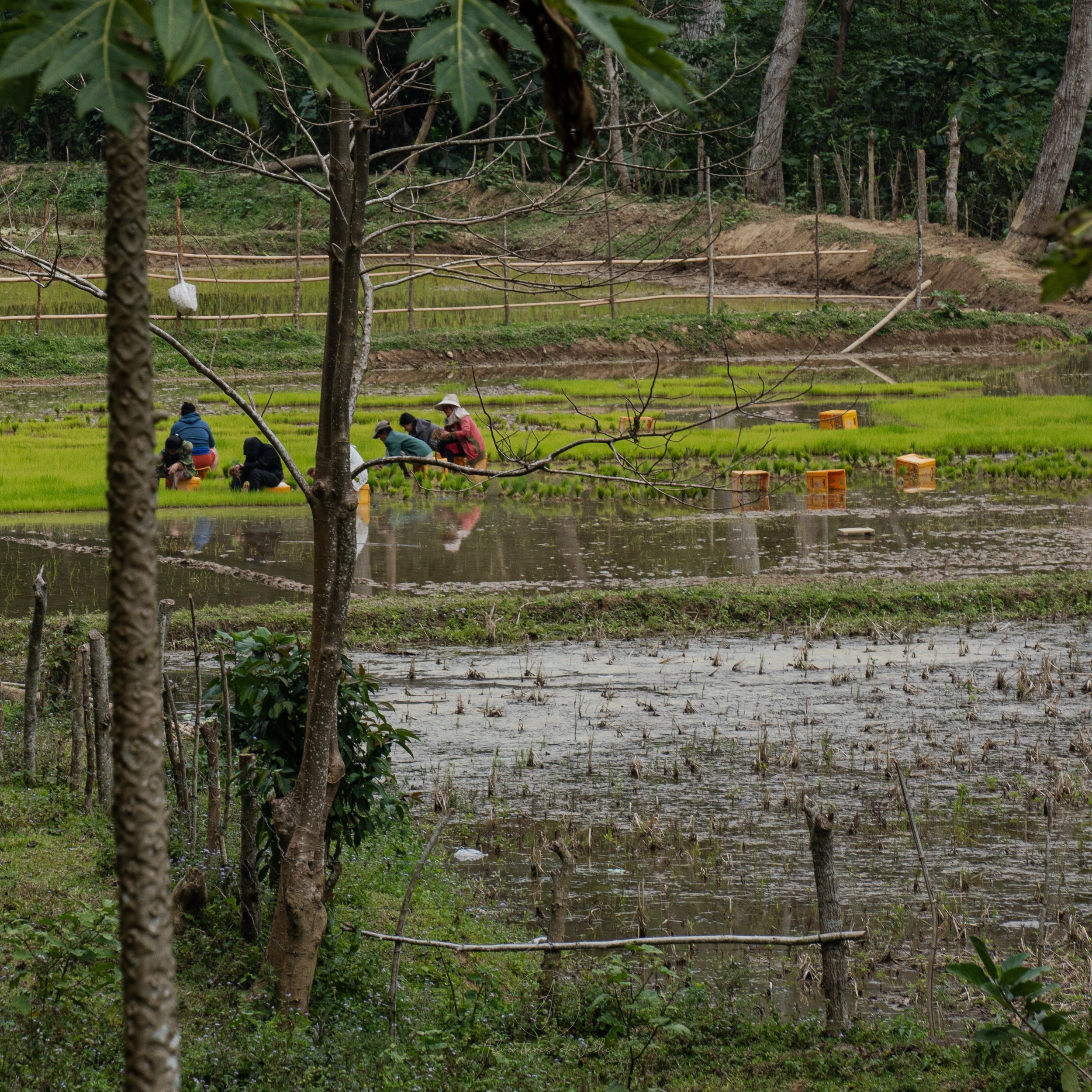
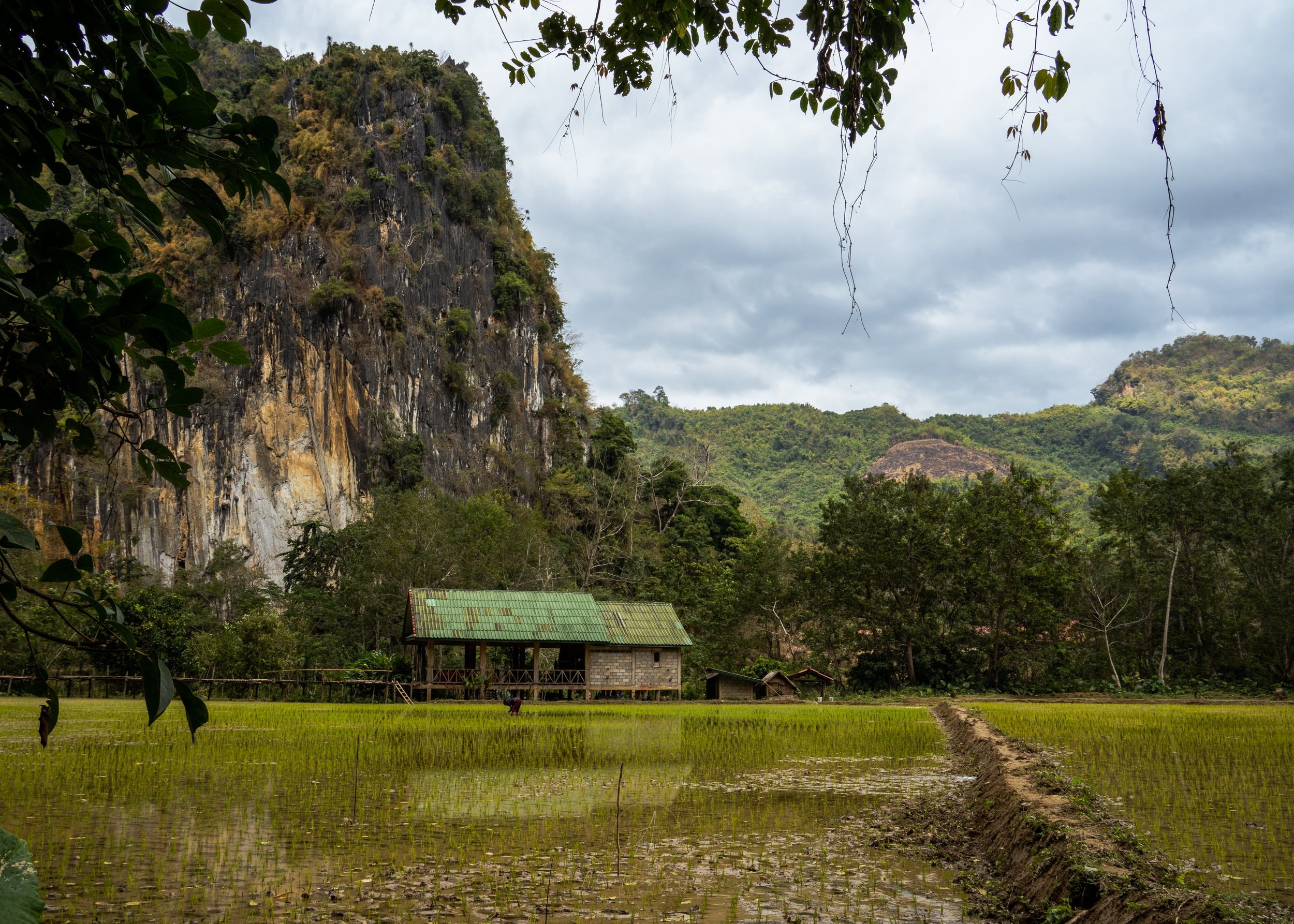
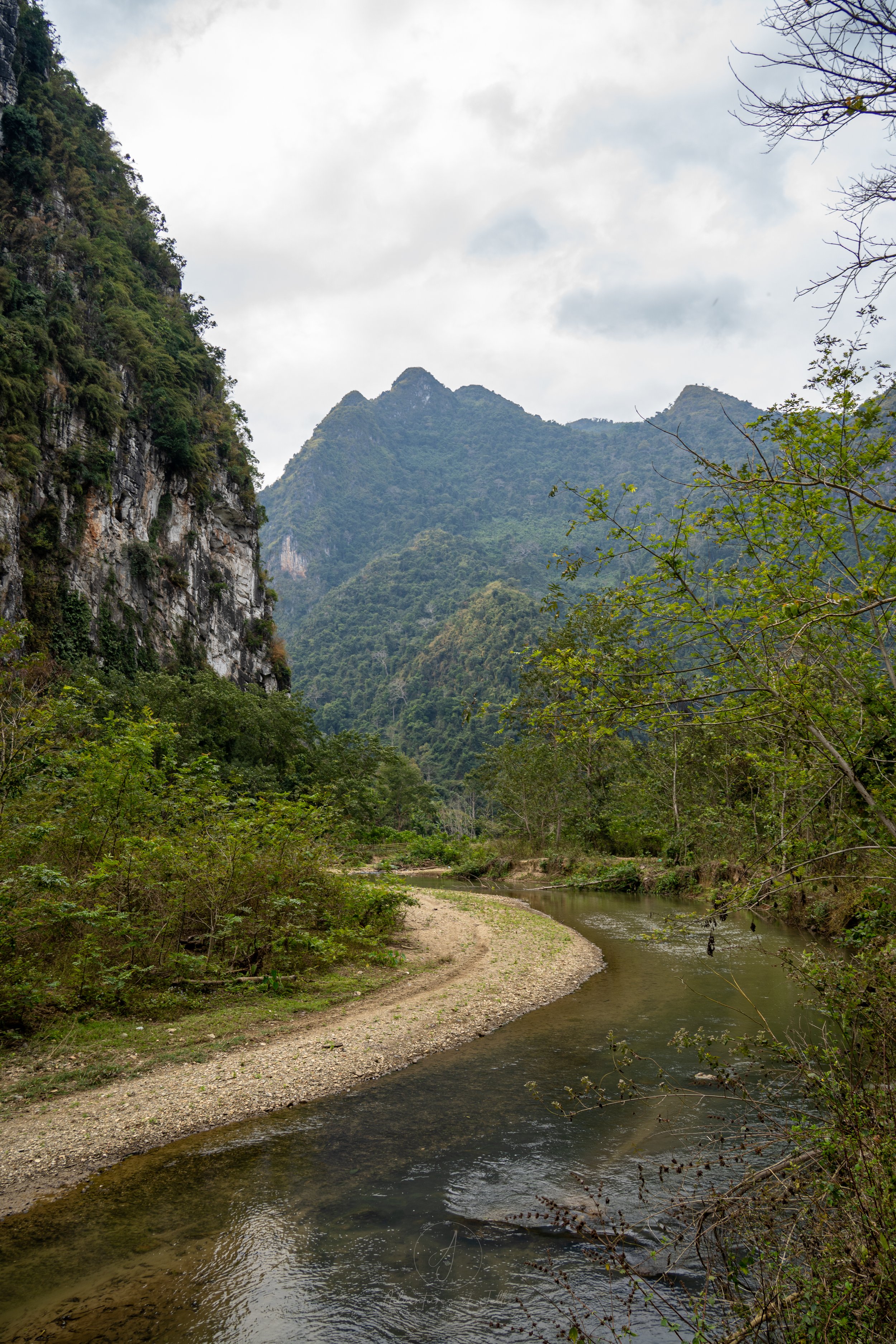
Thank you for reading,
John & Ellie x
#adventuresofjellie
*Prices correct at time of visiting - February 2023
If you’ve found this blog helpful, entertaining or you just fancy supporting us please click the button below!
If you’ve enjoyed reading this article, why not save the pin below?
Pakbeng - What To Do If You’ve Missed Your Slow Boat?
The town of Pakbeng marks the midpoint of the world famous Laotian slow boat route. Lying between the UNESCO World Heritage City of Luang Prabang and the border town of Huay Xai, most travellers only stop here for the night. But what if you stayed longer? What is there to do in Pakbeng? Where is there to stay? What is there to eat? Read our blog for the complete guide to Pakbeng.
The town of Pakbeng sits at the midpoint of the famous Mekong slow boat river trip. The full river journey runs between the UNESCO World Heritage City of Luang Prabang and the Laotian/Thai border town of Huay Xai. Most travellers, and we really mean most, like 99% will arrive in Pakbeng in the early evening and then leave again before 10am the next day. The whole town is set up to deal with this overnight trade, but what if you stayed there a little longer? What if you missed your boat? We decided to slow ourselves down and have a full day in Pakbeng and this is what we got up to.
We had arrived in Pakbeng on board the luxury Shompoo cruises. We knew that the next leg of our journey would be on the normal, less luxurious slow boat but we needed some time to plan our Laotian itinerary. A quick scout of the town showed it had a wealth of cheap accommodation, so we decided to stay a full extra day in Pakbeng to plan our route and explore the town a little bit.
Disclosure: This article may contain affiliate links. We will earn a small commission from any purchases made through these links.
Accommodation in Pakbeng - Where to Stay?
There are dozens of guesthouses in the town. The whole town is set up to deal with the overnight travellers and there are many choices of where to sleep. When travellers get off the boat, there is a flurry of activity on the pier as guesthouses and hoteliers vie for the travellers custom.
The guesthouses of the town are simple and cheap. Usually a double or twin bed and a shared bathroom. As with many places in Laos, the online listings are much more expensive than simply just turning up and asking for the prices. Also worth bearing in mind, is that there are many more accommodation choices in town than appear online. We use Agoda, Booking.com, Expedia and Google to look at accommodation and none of them were showing half of what was on offer in Pakbeng.
Our cheap and cheerful room in Pakbeng!
We walked along the high street and eventually settled on a double fan room (shared bathroom) for 100,000 kip (£4.80 or $6.00) staying at the Thiphaphone Guesthouse. This was the cheapest we saw, but the difference was minor, most rooms were going for between 100,000 and 150,000 kip.
For upmarket choices there are two hotels to choose from: The Sanctuary and Le Grand. These two are much more luxurious than the guesthouses in the village themselves and have swimming pools and restuarants themselves. If you’ve booked ahead at one of these posher places they should arrange a tuk tuk transfer to and from the pier. If you’re planning to stay in the main town, transport is completely unnecessary unless you’ve really overpacked!
We were definitely an oddity walking around the town at mid morning. As we’ve mentioned, all travellers leave with the boats in the early morning, so we were the only travellers in town. All the guest houses were halfway through turning over their rooms, with their washing hanging out the windows to dry. The locals were looking at us with amused expressions which just said “ah, those two must have missed the boat”.
Things to Do in Pakbeng
Pakbeng is not a large town but it does have some interesting things to keep you occupied if you’ve missed your boat, or like us, just decided to slow down. These are just some of the things you can do whilst you wait for your slow boat downstream:
The Pakbeng Viewpoint
Just inside town, at the top of the pier, is a large sign detailing the sites and surrounding attractions of Pakbeng. Quickly piquing our interest was the ‘Pakbeng Viewpoint’. This didn’t appear on Google Maps, but as is frequently the case, did show on Maps.me. Follow the high street away from the pier, going past all the guesthouses and restaurants and you’ll eventually come to a signpost directing you to turn off the main road to the left.
Follow this dusty road as it winds past wooden houses and climbs a hill, passing the primary school until you reach a helipad. The views from here are great, but you're not at the viewpoint yet! Turn behind you and climb the steep set of stairs to reach the viewpoint itself. Perched on a hill between the main road and the town, the viewpoint looks directly over the Mekong and surrounding hills. The viewpoint is split into two platforms.
The left platform overlooks the Mekong as it flows downstream. The right viewing platform overlooks the town of Pakbeng and the green hills behind. The views are fantastic and well worth the short walk and sharp climb. The viewpoint area itself looks to be/has been in a state of renovation, there is a distinctly unfinished feel to it with lots of construction equipment left lying around. Still you didn’t come to look at the viewpoint, you came to look at the view and the view does not disappoint.
There is no kind of ticket barrier or entry fee, just walk up!
Tip: The route is well signposted from town except for the very final point of the helipad. The road winds on, but don’t take this. Look behind you for the concrete steps and climb up these.
Wat Khokkhormingmoungkhoun
On your way to or from the viewpoint, there is a Buddhist temple that's well worth a look.
Wat Khokkhormingmoungkhoun commands a beautiful view over the river.
As always remember to dress appropriately - unfortunately we were in shorts this day, so could only peer through the ornate Naga guarded gateway.
Pakbeng Museum
We passed by and attempted to visit this museum but unfortunately it appeared to be closed. We can’t tell if this is permanent or whether it just wasn’t our day.
From the notice board it looks as though it is a small museum giving history of the local area and the communities within it.
Mekong Elephant Park
Another thing we didn’t do! Those who know us, know that Ellie is an elephant nut, and as such is rightly very picky about visiting “elephant sanctuaries”. We didn’t have time to properly research this one, so wound up not going. From what we can see it does look legit, housing four rescued elephants with no riding and mostly offering observation tours, but we were unsure as there were some higher cost ‘interaction experiences’. If you know more, let us know in the comments!
Sanctuary Viewpoint
The Sanctuary hotel runs in partnership with the elephant park and is about a ten minute walk away from town up a hill. Its bar and restaurant have incredible views over the Mekong, especially at sunset. If you feel like treating yourself to an expensive beer ($3.50 - you know you’re in trouble when the prices are in dollars) and an amazing view, then this is a great place to do this.
The view from ‘The Sanctuary’ is well worth the extra price in beer!
Eating and Drinking in Pakbeng
There is no shortage of evening food options in Pakbeng. From the local Laotian dishes of laab and noodle soups, to the backpacker favourites of fried rice and noodles, there will be something for your palette.
For our lunch we had an enormous, but extremely tasty Pad Krapow, served with a side serving of delicate vegetable soup. For dinner, we went off piste and went to an Indian restaurant recommended by our guesthouse. It was hearty and tasty, but like most places in town the prices are a little high as the restaurants have to capitalise on the one off tourist trade.
For those on a budget, at the bottom of the hill (next to the pier) there are lots of vendors selling all manner of barbecued meats as well as street side sandwiches and pastries. These sandwich vendors will also appear early the next morning for you to stock up before your onward boat journey.
Tip: For those worried about a speedy departure the next day, sandwiches can be pre-ordered at these stalls and picked up the next morning.
In terms of drinking, Google lists two bars in town. Unfortunately, both the Happy Bar and the Hive Bar were closed when we visited. Although it looks now as though the Happy Bar has reopened. The lack of bars seemed crazy as there was definitely a demand for a bar in this backpacker destination. All the restaurants, cafes and shops serve Beer Laos for takeaway or to drink in. The pizza bar on the main strip has a small bar at the front that was busy all night.
If you have been through Pakbeng recently - how are the bars? Please let us know in the comments!
Leaving Pakbeng
Pakbeng Pier - Your entrance and exit point by river from the town
The vast majority of travellers, including us, will leave Pakbeng via boat either downstream to Luang Prabang or upstream to the Thailand border town of Huay Xai.
Both boats leave early in the morning, the Luang Prabang boat departs at 9.30am and the Huay Xai bound boat leaves at 8.30am. Tickets are purchased on the day, on the boat itself. Our advice is to get there early to secure a comfy seat. Tickets cost 150,000 kip (£7.20 or $9.00) to both Luang Prabang or Huay Xai.
Where Else Can I Go From Pakbeng?
The boat isn’t the only way to leave Pakbeng. There are buses to the city of Muang Xai/Oudomxay/Oudomxai (what is it with Laos and having three different names for the same city?!) as well as other local destinations. The bus stop is outside of town so you will need to factor this into your journey time as it's slightly over half an hour's walk away according to Maps.me.
Pakbeng is a necessary stop along the amazing slow boat route on the Mekong river. Its entire business model is designed to capitalise on one night tourism, however if you find yourself here longer, maybe through illness, a mighty hangover or just missing the boat there is plenty to keep you occupied. You could easily just spend an afternoon sitting on the pier watching the Mekong flow by.
Thank you for reading,
John & Ellie x
#adventuresofjellie
Luxury Slow Boats
We have actually been lucky enough to try both the normal, backpacker friendly slow boat as well as a high end luxury slow boat, make sure you check out our experiences and thoughts here.
If you’ve found this blog helpful, entertaining or you just fancy supporting us please click the button below!
If you’ve enjoyed reading this article, why not save the pin below?
The Slow Boats of Laos, Budget Versus Bougie
A bucket list item for travellers, the slow boats on the Laotian Mekong run between the UNESCO world heritage city of Luang Prabang and Huay Xai, the border town between Laos and Thailand. We took two very different cruises up the river, the luxury Shompoo Cruise between Luang Prabang and Pakbeng and the local slow boat between Pakbeng and Huay Xai. Read on for our experiences on this incredible stretch of river!
Taking the slow boat on the Mekong is a bucket list item for many travellers. Between the border town of Huay Xai and the beautiful UNESCO World Heritage City of Luang Prabang, slow boats plough their way up and down the mighty Mekong river.
Disclosure: This article may contain affiliate links. We will earn a small commission from any purchases made through these links.
We had just finished a wonderful week in Luang Prabang. John’s parents had tracked him down and treated us to a fantastic stay in the ancient Royal Capital of Laos. When it was time to leave there was only one choice. We would all get on a slow boat and travel up the Mekong to Pakbeng.
The first leg of the journey, Luang Prabang to Pakbeng, would be done in the lap of luxury as John's parents had the river cruise included in their tour package. After Pakbeng we would be going our separate ways and thus a more backpacker friendly mode would be engaged. Our second boat journey from Pakbeng to Huay Xai would be less salubrious, joining other travellers and locals on a distinctly more budget friendly local boat.
Leg One - Floating in the Lap of Luxury - Luang Prabang to Pakbeng on Shompoo Cruises
Day one started with an early morning wake up call in Luang Prabang. A 7am departure saw us up early at the Shompoo Cruise pier ready for our day of luxurious cruising. We would be travelling this leg of the Mekong on a very large and well appointed river boat. Comfy seats, recliners and even some scatter cushions were strewn artfully about the deck, with a bar and toilet to the back of the boat. There were only twelve of us on this massive boat, so we were free to roam and stretch out wherever we pleased. From every angle you could get a different view of the river. The prow of the boat had reclining chairs set up giving spectacular uninterrupted views of the river valley. The bar had stool seating facing out to the sides, and all along the boat were seats and recliners set next to the open windows.
We set off with the early morning mists rising from the river and cloaking Luang Prabang in their mysterious coils. The boat puttered along at a fairly lively pace but was quiet and relaxed for everyone on board allowing us all to savour the surroundings. The boat provided warm blankets against the early morning chill, and breakfast had been picked up from one of the posher coffee shops - T56 cafe and bar (make sure you read our guide to the best coffee in Luang Prabang!). As we drifted along we passed school children cycling, monks crossing the river and farmers tending their crops. Munching on croissants whilst sipping coffee and floating down the Mekong was an unforgettable way to start a day.
The upstream Shompoo Cruise included a stop at the Pak Ou caves. The two visitable caves are accessible from a small jetty on the side of the river. The upper cave are reached by climbing 300 stone steps and houses beautiful Buddha statues as well as a stupa and shrine. The lower cave is a treasure chest filled with every style, shape and design of Buddha you can imagine. Point your torch in any direction and an image of the Buddha will stare back at you. The cave is packed with tiny alcoves filled to the brim with Buddha statues.
The climb to the Pak Ou caves also gives fantastic views of the Mekong river below.
The Pak Ou caves was the only stop on this leg of the cruise, so afterwards we clambered back on board and got comfy for the remaining seven odd hours to Pakbeng.
The boat was very comfy, with John nodding off after being lulled to sleep by the gentle movement of the water. A buffet lunch was provided as well as free tea, coffee and water. There was also a paid bar on board for mid afternoon beverages.
As the river wound on, we took in water buffalo, pristine jungle, peanut fields and lots of interesting snap shots of Laotian river bank life. We pulled into Pakbeng just before 5pm just in time to watch a spectacular sunset over the Mekong river.
For those travelling in luxury Pak Beng has two higher end hotels: The Sanctuary and Le Grand. The above photo was taken at the Sanctuary’s restaurant, the views were amazing! For those on a backpacking budget there are many guesthouses in the town itself offering cheap lodgings for the night.
As we mentioned we were travelling this leg as guests of John’s parents so didn’t have to foot the bill for any of this. We can’t comment on any kind of “value for money” thing here, but only our experiences on the boat. A boat trip with Shompoo Cruises can be booked directly from Luang Prabang or on their website. We have not been paid or otherwise incentivised to promote them.
Make sure you read all about Pakbeng before your trip, it is so much more than just an overnight stop on the slow boat! We have written an whole guide to what you can do, what to eat and where to stay, you can read it here.
Leg Two - Back to Backpacking - Boating with the Locals - Pakbeng to Huay Xai
After saying goodbye to John’s parents and staying another night in Pakbeng to sort out our onward itinerary, we boarded the daily slow boat upstream to the border town of Huay Xai.
The boat departs daily from Pakbeng to Huay Xai at 8.30am. You buy your tickets for this journey on the day of travel on the boat. One ticket from Pakbeng to Huay Xai costs 200,000 kip. Seating and tickets are first come, first served so get there early to avoid an uncomfortable ride. We rocked up at 8am and were definitely not the first to board. Around 8.10am it started to become extremely busy and we were very glad we had arrived early and claimed our seats. The seats we had today stood in far contrast to the luxury of the first day. Gone were the recliners and scatter cushions, instead there were wooden cushioned benches and what appeared to be seats ripped straight out of a coach and placed on movable wooden blocks.
Tip: Word to the wise, when boarding don’t be tempted by the inward facing rows of coach seats as these can be moved around if more people need to get on. Even if they stay where they are you will constantly need to move your feet around as people go backwards and forwards!
Your bags are stored wherever they will fit. As we got on early, our backpacks were stowed under our wooden bench. Later arrivals had their bags piled at the front and back of the boat with some of them being rearranged mid cruise to help with weight distribution.
The boat sputtered to life and swung away from the pier just after 8.30am. In contrast to the twelve people on board for the first leg, there were at least fifty on board this smaller boat. A mix of backpackers, Laotian families and sales people moving their goods around, the boat was a lively affair. Children ran up and down the aisle, whilst their grandmother sat cross legged and ramrod straight on the seat beside. The banks of the Mekong gently rolling past amidst the chatter of the travellers on board.
Another difference between this and our luxury cruise was apparent within moments of setting off, there were no free blankets. As we waited for the sun to rise above the mountains and burn off the morning mists, it was seriously chilly. This had obviously caught out quite a few of our fellow travellers as we all huddled together with our hoodies up. The more experienced locals were bundled in blankets they had brought from home.
Tip: At the back of the boat next to the shop there is a stack of blankets. These can almost certainly be rented/borrowed but by the time we had noticed them the temperature had risen back to the normal tropical heat.
This stretch of the river seemed more remote than that of the previous day. We passed reed thatched houses in precarious cliffside villages. Many of the houses were raised up further still to protect them from the river below and its monumental floods. Limestone cliffs towered over the riverbanks whilst water buffalo wallowed in the shallows. We passed families collecting and drying reeds for brushes and what looked like panning for gold.
Mid morning saw the group behind us open the first of the beer Lao to salute their journey up the Mekong. Whereas yesterday we had a buffet lunch and a dedicated bar. Today, there was a young Laotian family at the back of the boat who had almost walled themselves in with stacks of water, pot noodles and beer for sale. Behind the makeshift shop there was a toilet on board. We can’t comment on the state of it as we didn’t use it.
The chatter on board the boat was lively and friendly, with a Laotian baby doing the rounds with her mother to say hello to everyone (the baby looked very confused by this). Lunchtime saw a flurry of activity at the helm of the boat. A carpet was laid out and an ornate circular table brought forward from the back of the boat. It was time for the Captain’s lunch. Baskets of sticky rice, dried pork and steamed green vegetables were beautifully laid out on the silver table. We looked on in jealousy as we tucked into our sandwiches.
Tip: The town of Pakbeng is completely set up to cater for the long boat journeys. It is the halfway point for the up and down stream journeys, as well as the lunch spot for the speed boats. Lining either side of the main street are vendors selling portable snacks from sandwiches, pastries and cakes to crisps, biscuits and drinks. Pick up your breakfast and lunch here if you don’t feel like eating pot noodles on the boat!
Occasionally the boat would swing into an ostensibly deserted piece of river bank and a Laotian family would get off. Things did get a little bit more interesting at one point when there was a loud clunk from the engine and we shuddered to a halt in the middle of the river. The driver steered us into the bank, had a heated discussion on a telephone, then went to the back and did something noisy to the engine before we set off again as if nothing had happened!
Tip: We have heard that breakdowns are quite common and can be a lot more time consuming than ours was. Bear this in mind if you’re running out of visa time!
After around seven hours, the river swept around in a large bend and we finally had Thailand to the left of us. The Mekong serves as the border along this stretch of the river. The contrast between the Laotian and Thai sides of the river was instantly evident. The Thai side had much more infrastructure with new roads and what looked like flood defences, whereas the Laotian side was still predominantly jungle and fields. Eventually we passed under the Friendship Bridge and swung into Huay Xai. Our slow boat journey was complete!
Crossing the border after the slow boats
Tip: The Friendship Bridge which serves as the border crossing between Thailand and Laos is quite a distance from Huay Xai and the boat landing pier. You will need to factor in at least 45 minutes to get between the two, so keep an eye out on when the border closes for the day. Our boat was coming in at 5.30pm and there were a lot of very worried people on board!
Luxury or backpacker, which is best?
Both days of travel along the Mekong were fantastic. It’s a bucket list item for a reason. It’s a beautiful way to take in what would otherwise be a remote and inaccessible area of Laos. You get to see life played out across the river and its banks. It's not like a museum piece or any of the “craft villages" often added to package tours, it was real life happening just outside the window. We feel you could travel up and down the Mekong multiple times and you wouldn’t see the same journey twice.
Despite the provocative title, this piece is not meant to answer which cruise you should take as they are completely different. If you require comfort, the ability to roam around and countless photo opportunities then the Shompoo Cruise was the definition of luxury and convenience. Whereas, if you want to be in amongst it all, having babies passed around, surrounded by the chatter of travellers, and to be frank, save a lot of money, then the local slow boat will suit you perfectly. Either way, you need to do this now. The construction has already begun on several dams along these stretches of river, and it won't be long until this route is impassable and the landscape changed forever.
The Basic Facts of Taking a Slow Boat Up/Down the Mekong River
How Long Does It Take?
There are two options when answering this question. The slow boat takes two days with each day taking 6 to 8 hours depending on the river.
Alternatively, there is a speedboat service that will get you all the way in a day. We have heard this is quite an uncomfortable experience and there are some questions online as to its safety.
How Much Does the slow boat Cost?
The local slow boat is 150,000 kip per leg of the journey (300,000 kip in total - £14.15 or $17.70).
From the starting points of Huay Xai or Luang Prabang, you can buy your slow boat tickets at the departure piers, or for an added cost (that may include a transfer to the pier) from a tour operator or your hostel. The tickets from Pakbeng to your destination, are brought on the boat when you board at Pakbeng.
The cost of the more luxurious boats can be found here - bear in mind it is a lot more expensive, but you do get exclusivity and space!
Where Do the Slow Boats Depart From?
Both Luang Prabang and Huay Xai have “slow boat” piers.
The slow boat pier in Huay Xai (Map Link) is easily walkable from the strip of accommodation most backpackers will find themselves staying in. Tuk tuks are available if you need a lift or are coming from the border.
In Pakbeng you will be dropped off from the same pier (Map Link) you will leave from in the morning, and the town is immediately in front of you. The luxury accommodation is up the hill to the left, whereas the town, guesthouses, restaurants and cafes lie to the right. If you’re booked into one of the more upmarket hotels, they will usually send transport to pick you up.
In Luang Prabang the slow boat pier (Map Link) is located a little further out of town, past the airport. There are plenty of taxis and tuk tuks available. If you’ve booked the ticket through a travel agent, they may include this transfer in the price, if not find some fellow travellers and split the cost to take one of the larger tuk tuks.
If you have splashed the cash and are travelling with Shompoo Cruises, then the pier is in the centre of Luang Prabang (Map Link).
What to Bring on the Slow Boat?
If you’re taking the local boat, when travelling on the first leg of your journey, make sure you bring any food or drinks that you want. Boats depart early in the morning and don’t stop until they reach Pakbeng in the late afternoon/early evening. On board there is a small shop selling pot noodles, crisps, biscuits, tea, coffee, beer and soft drinks.
When you stop at Pakbeng you can pick up sandwiches and other supplies ready for your second leg. If you’re on an especially busy boat, we would recommend pre-ordering your sandwiches when you arrive so you can just pick them up and go the next day. There are dozens of vendors all along the street in Pakbeng who can do this.
As we’ve mentioned on Shompoo Cruises, both breakfast and lunch were included and there was a paid bar available on board.
You set off early on both days, so wear a warm layer to snuggle into. The local boat we took did have blankets to rent. Blankets were provided on the Shompoo Cruise.
Are There Toilets Available?
Yes on both boats. Although we can’t comment on the quality of the local boat as luckily we didn’t need it. Shompoo Cruises were very nice!
Final Tips for the Local Slow Boat
Get there early as its first come, first served with seats.
The Huay Xai to Luang Prabang route is meant to get really busy, to the point where some travellers we have met regretted taking it in this direction. The boat from Luang Prabang to Huay Xai however, is perfect. Busy enough to still have an atmosphere but not overcrowded.
If you buy from a travel agent they will add their costs.
We would not recommend using the slow boat to Huay Xai on the last days of your visa. The boat will dock at Huay Xai very close to the time when the border closes for the day, and it's a 45 minute drive from the pier to the border (also breakdowns are quite common)!
Download some chilled out tunes and watch the river flow by. It really is an amazing experience!
Snapshots of Life Along the Mekong
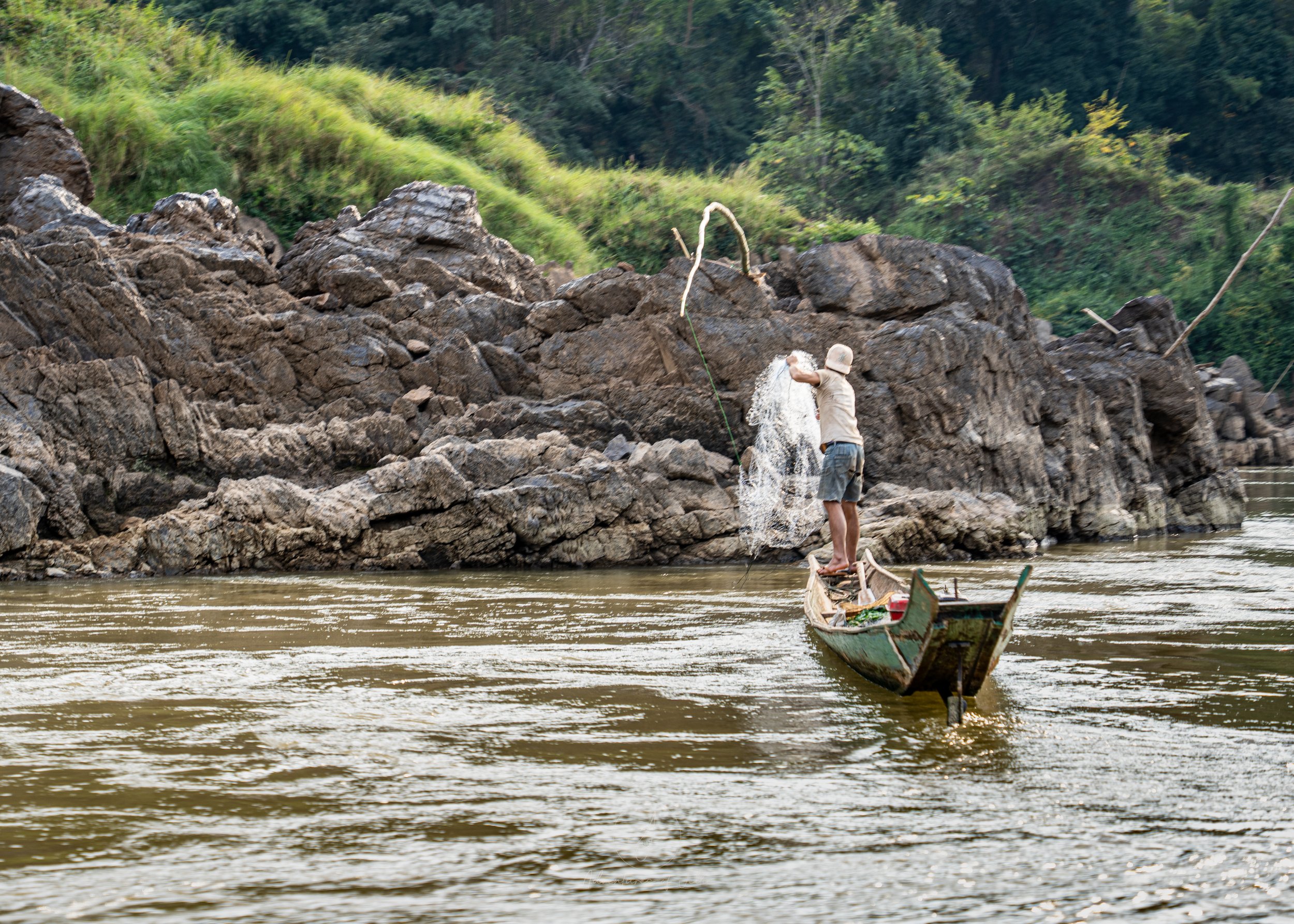
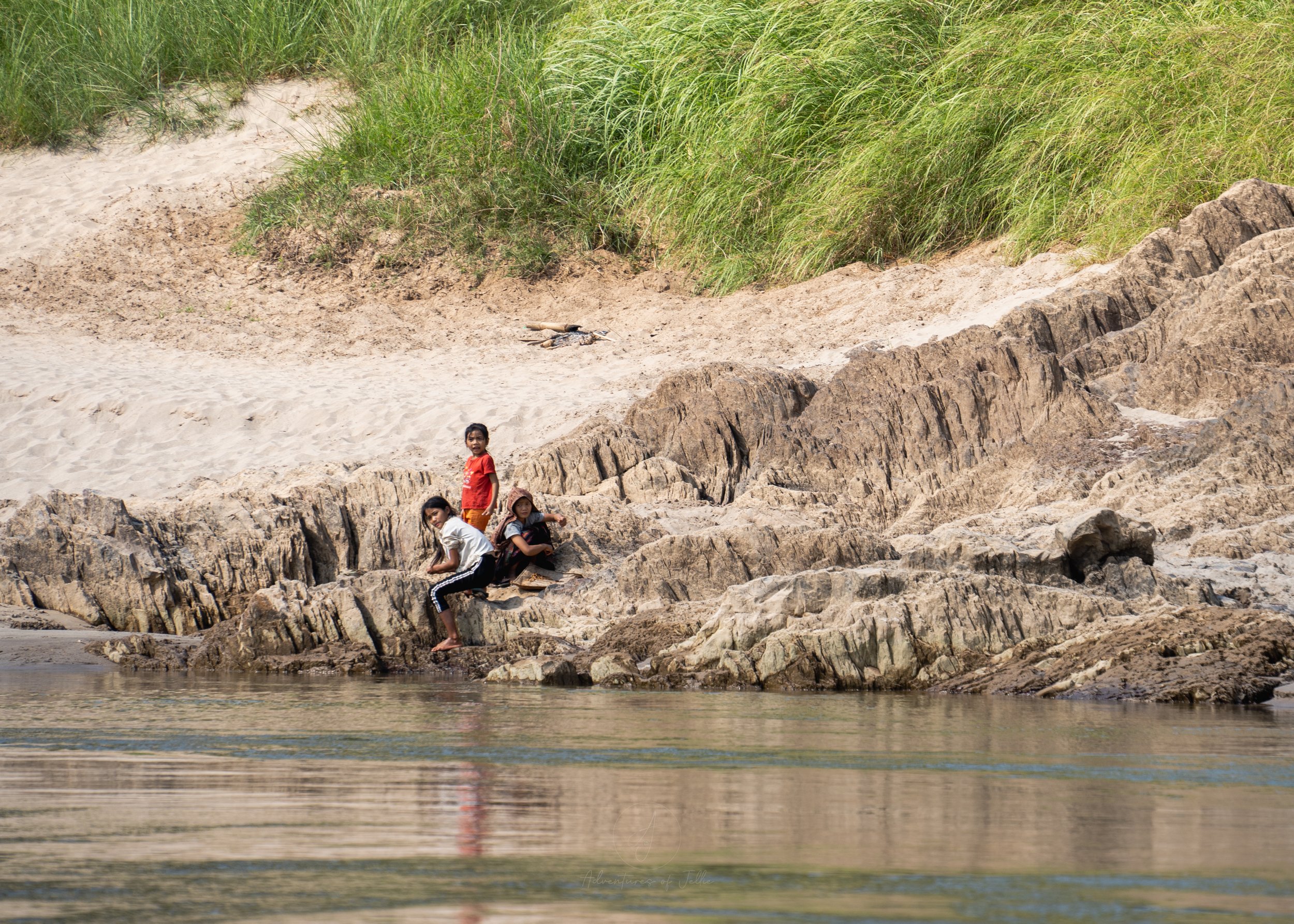
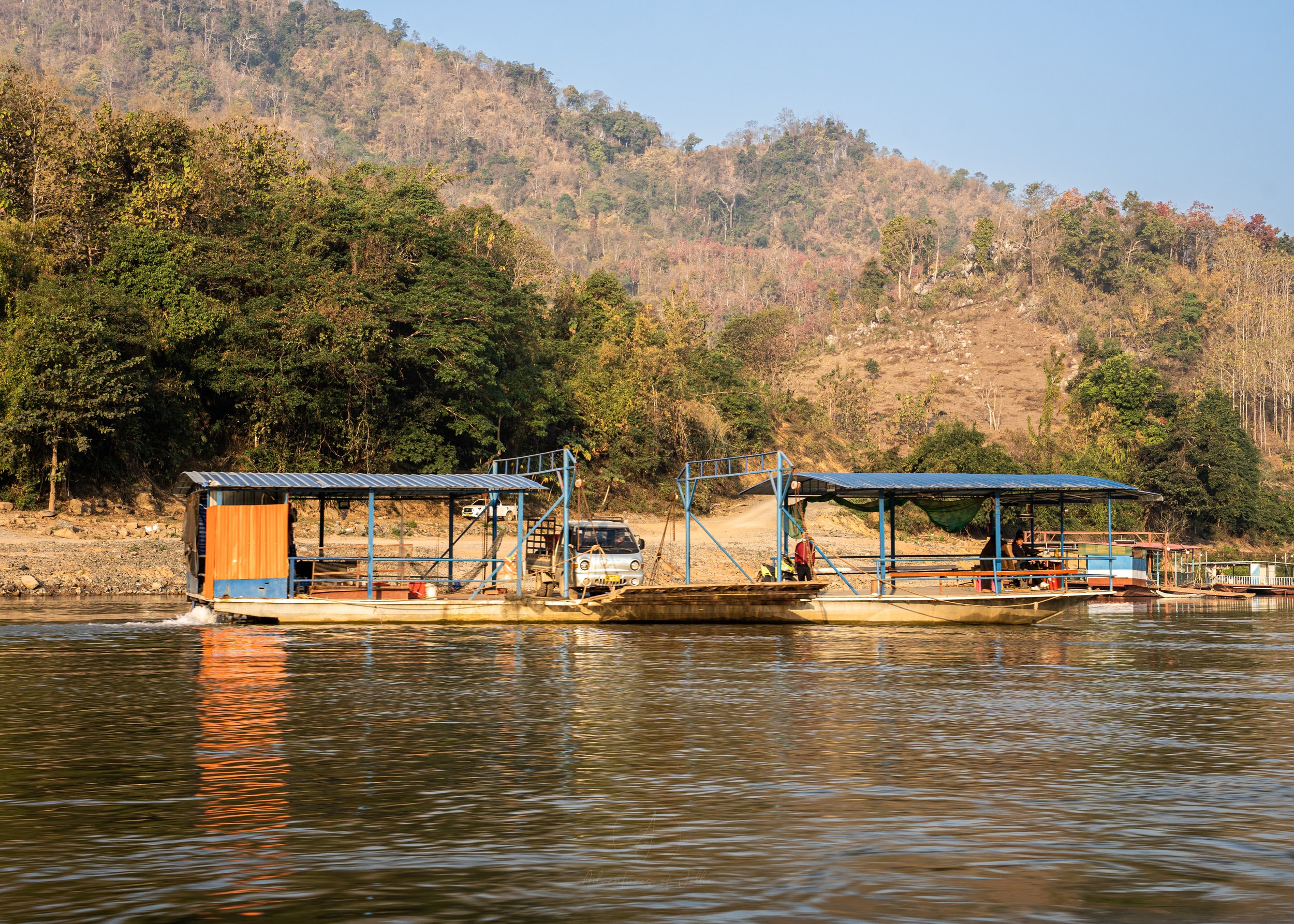
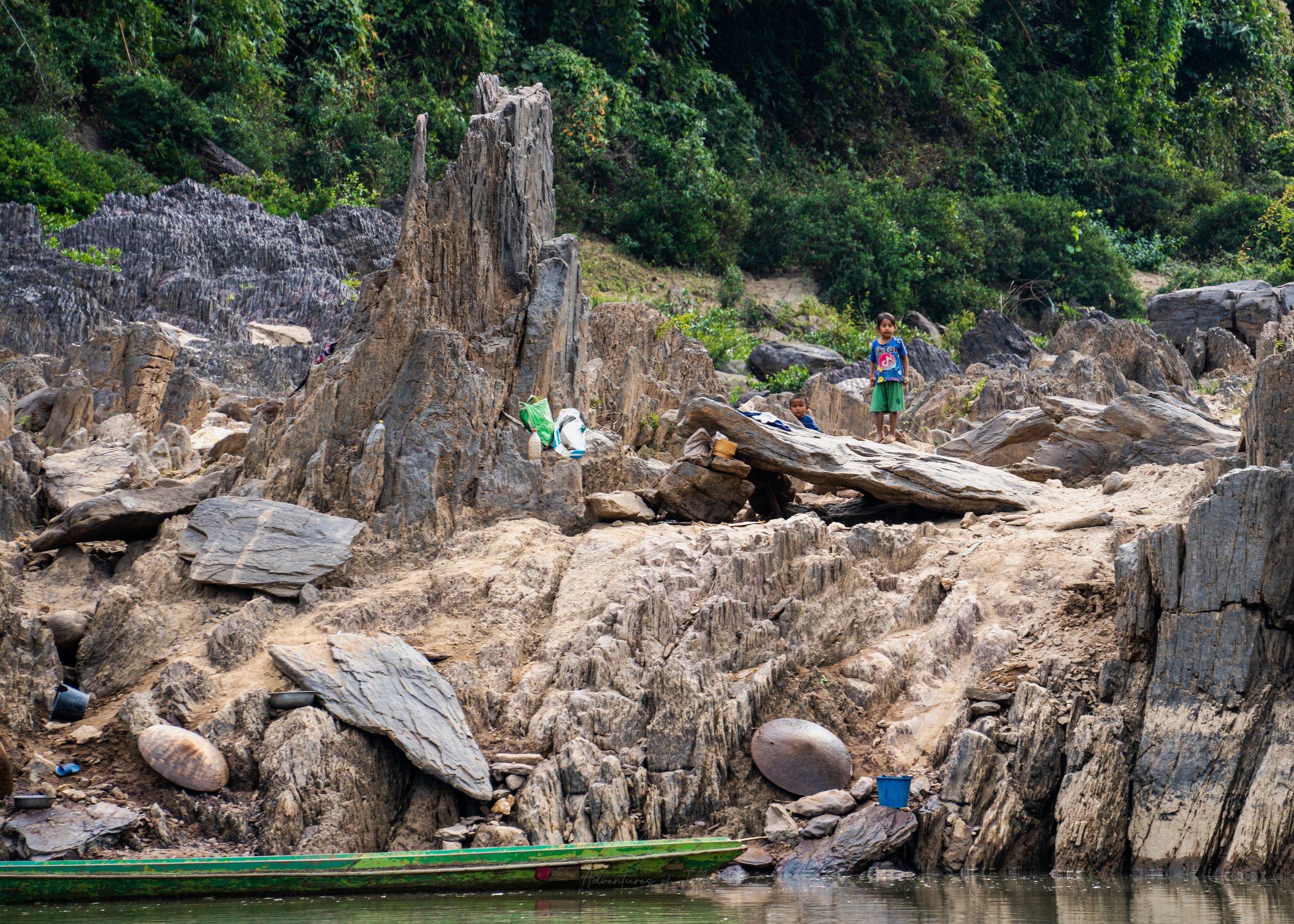
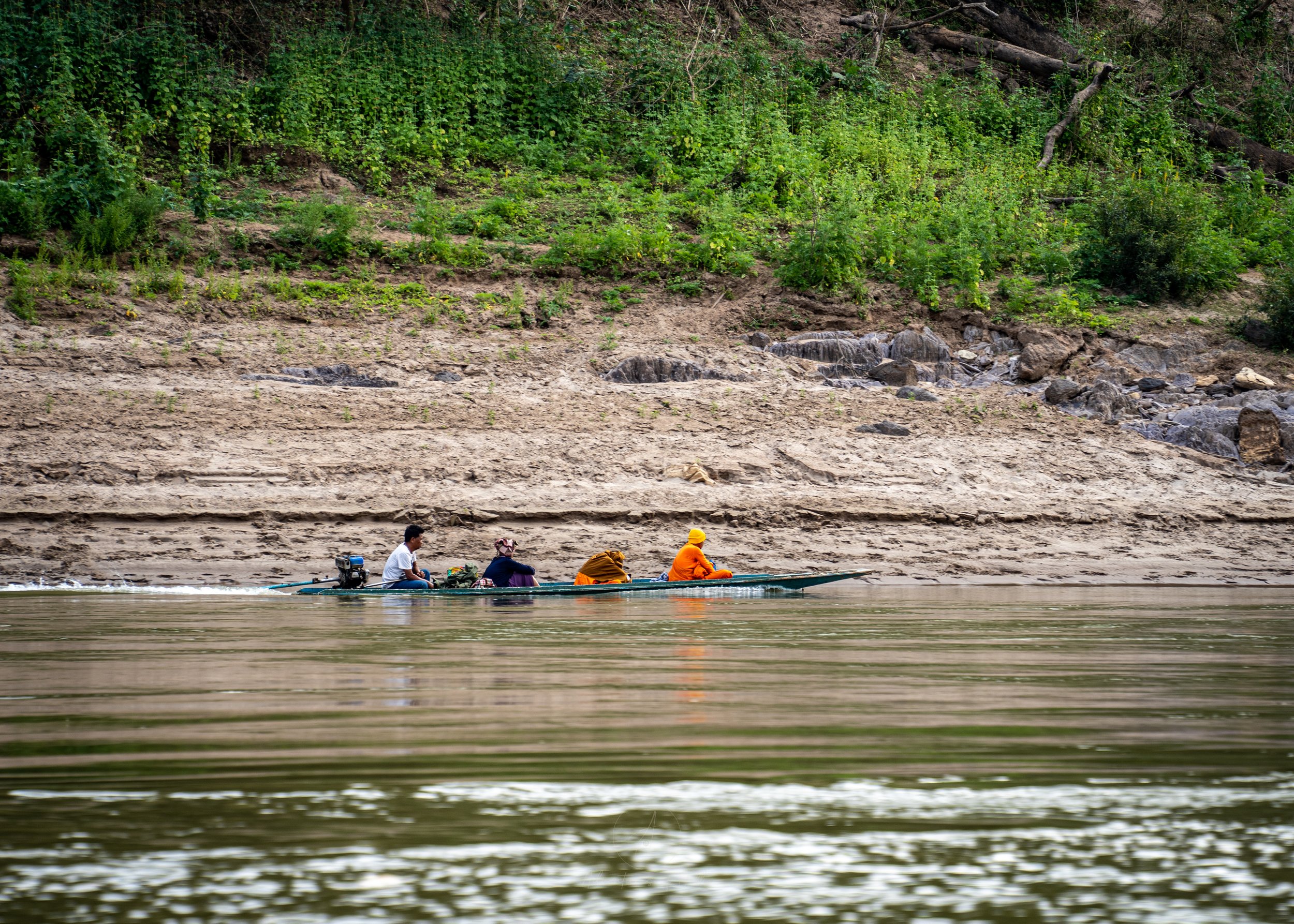
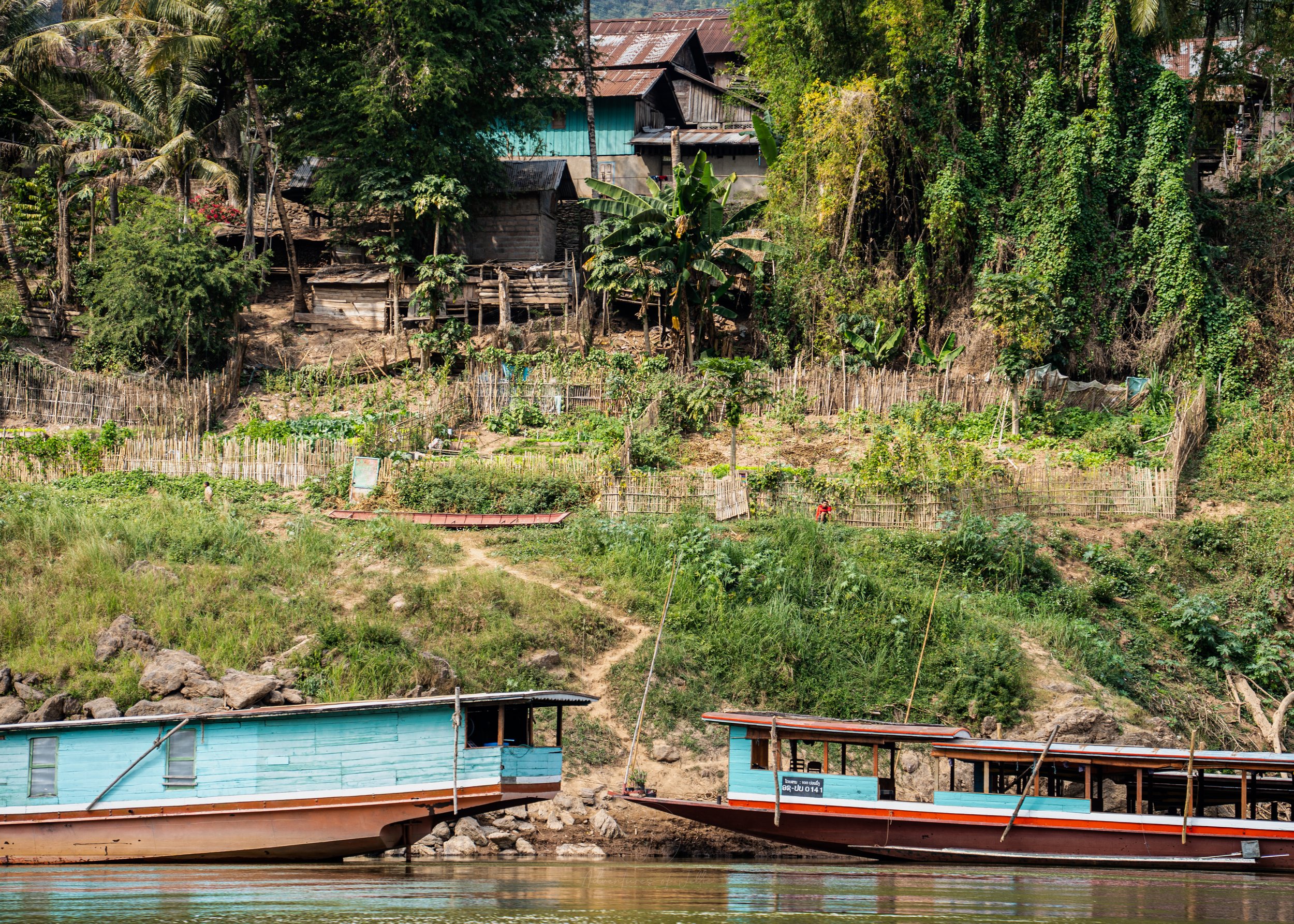
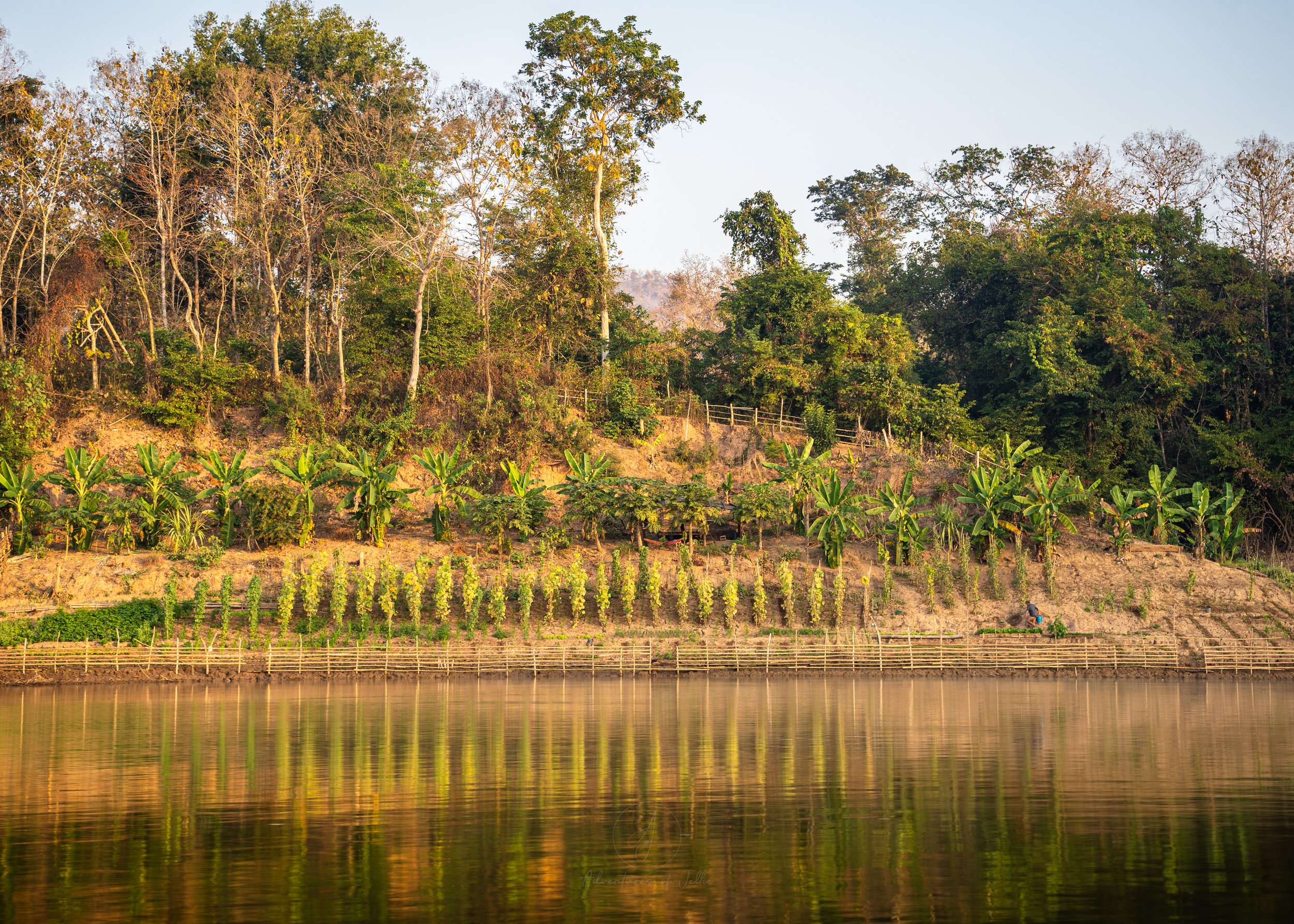
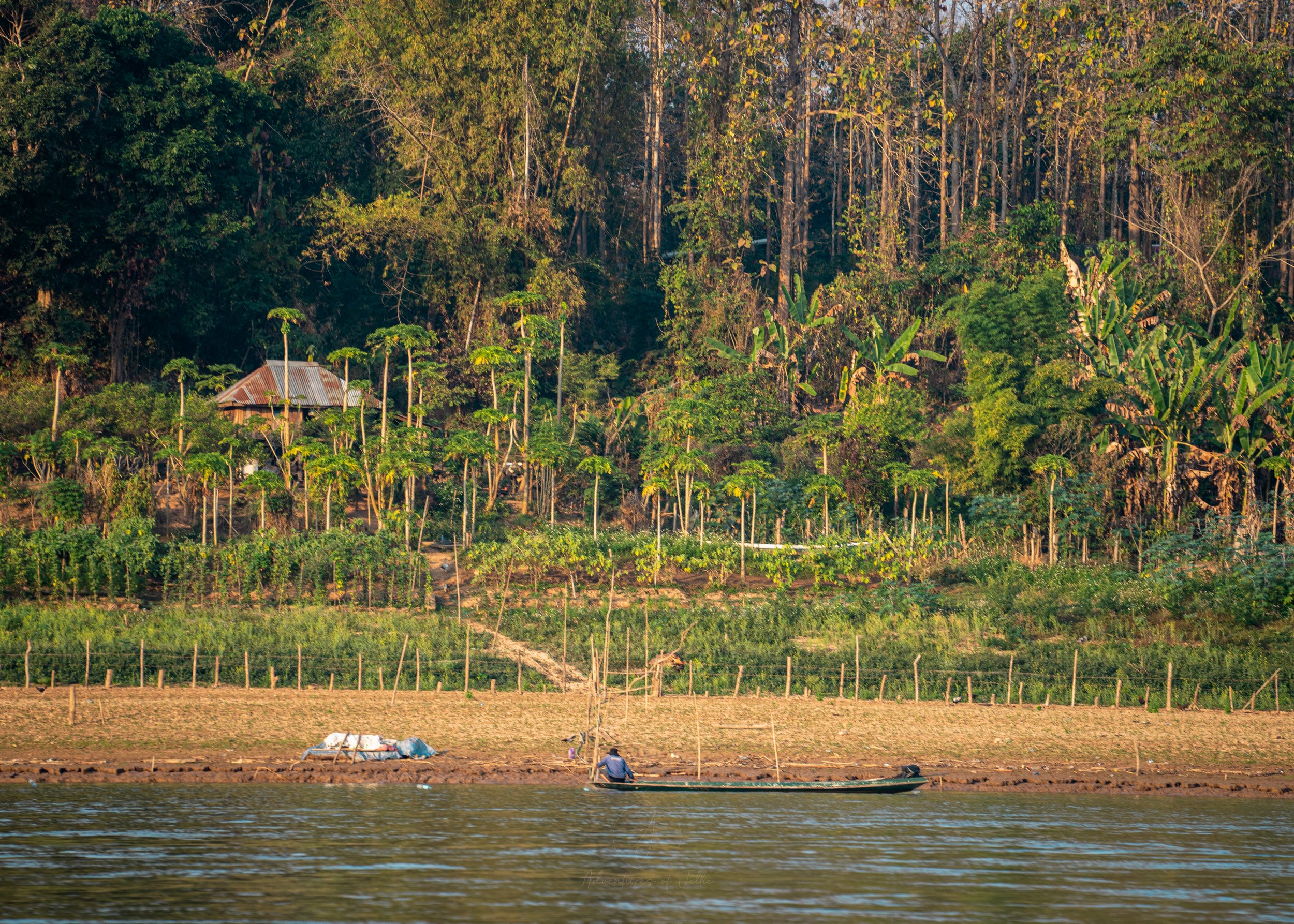
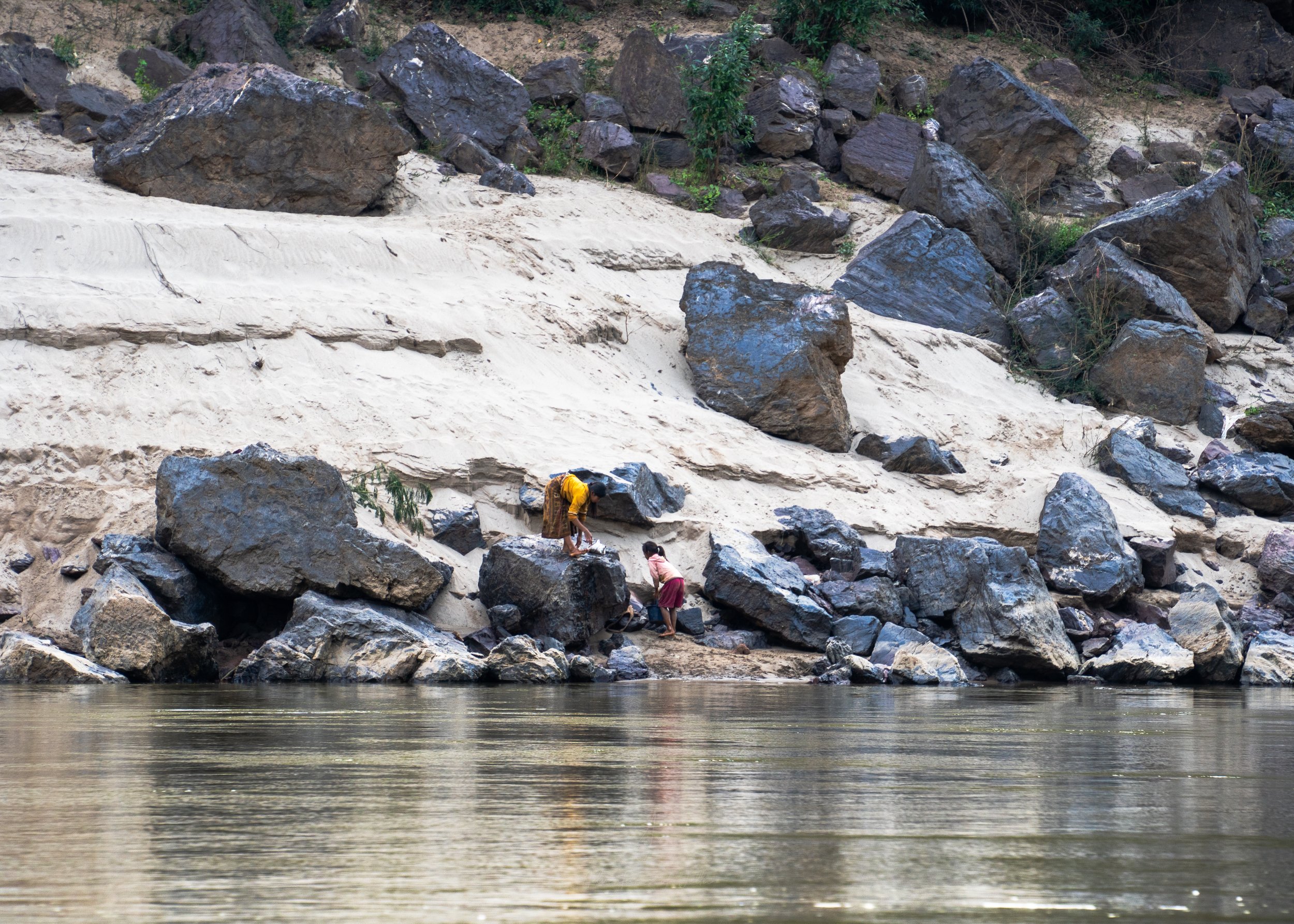
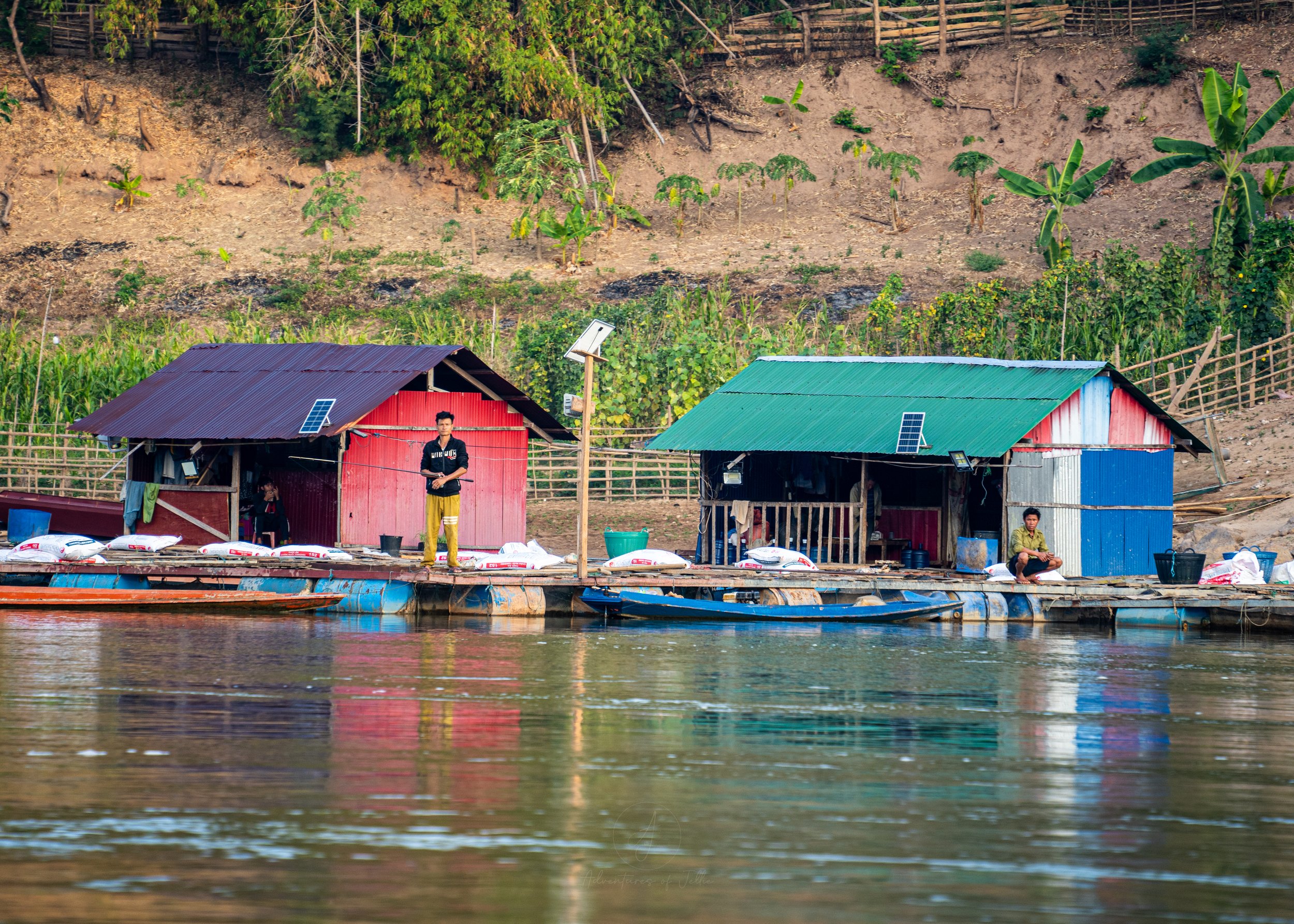
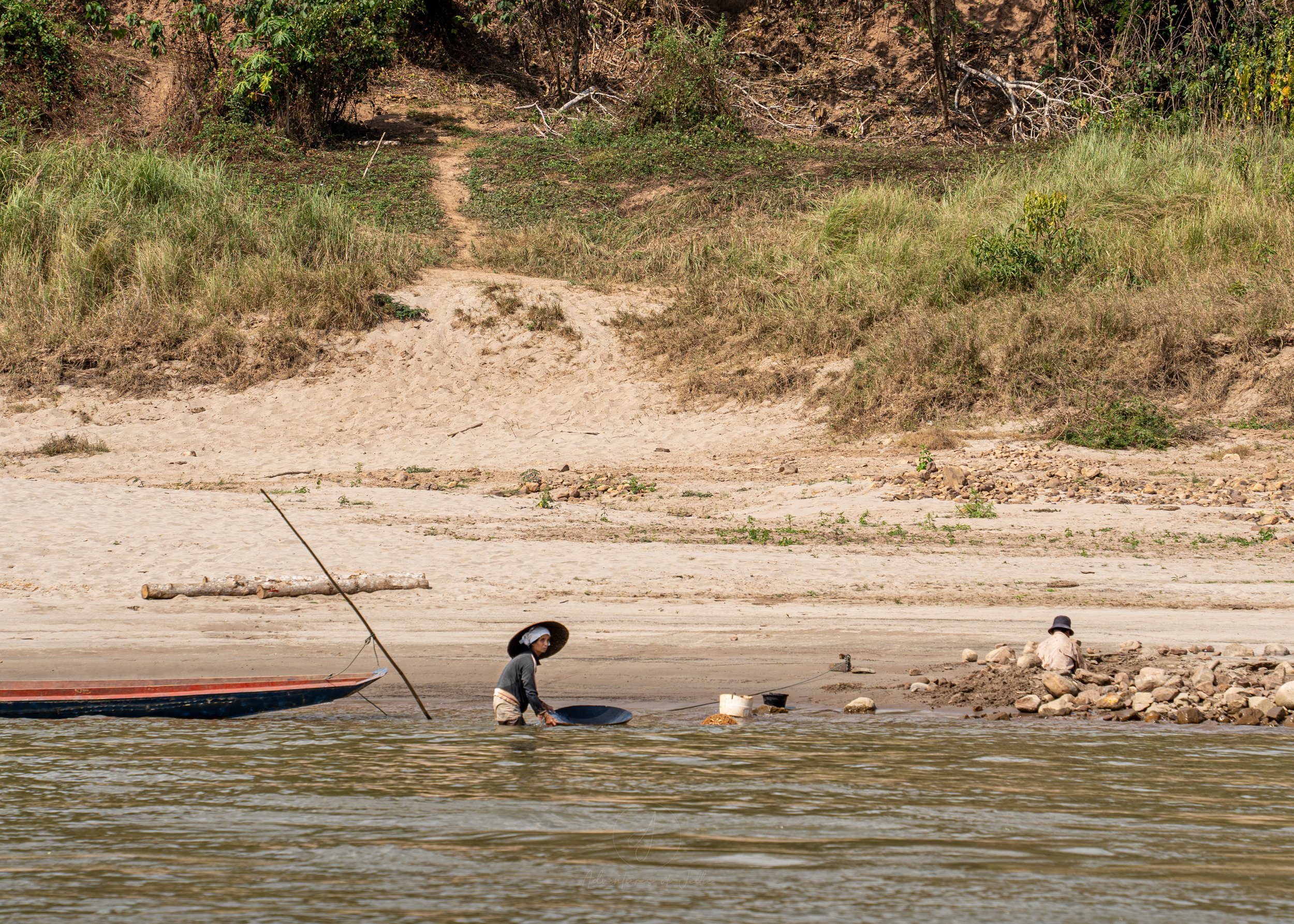
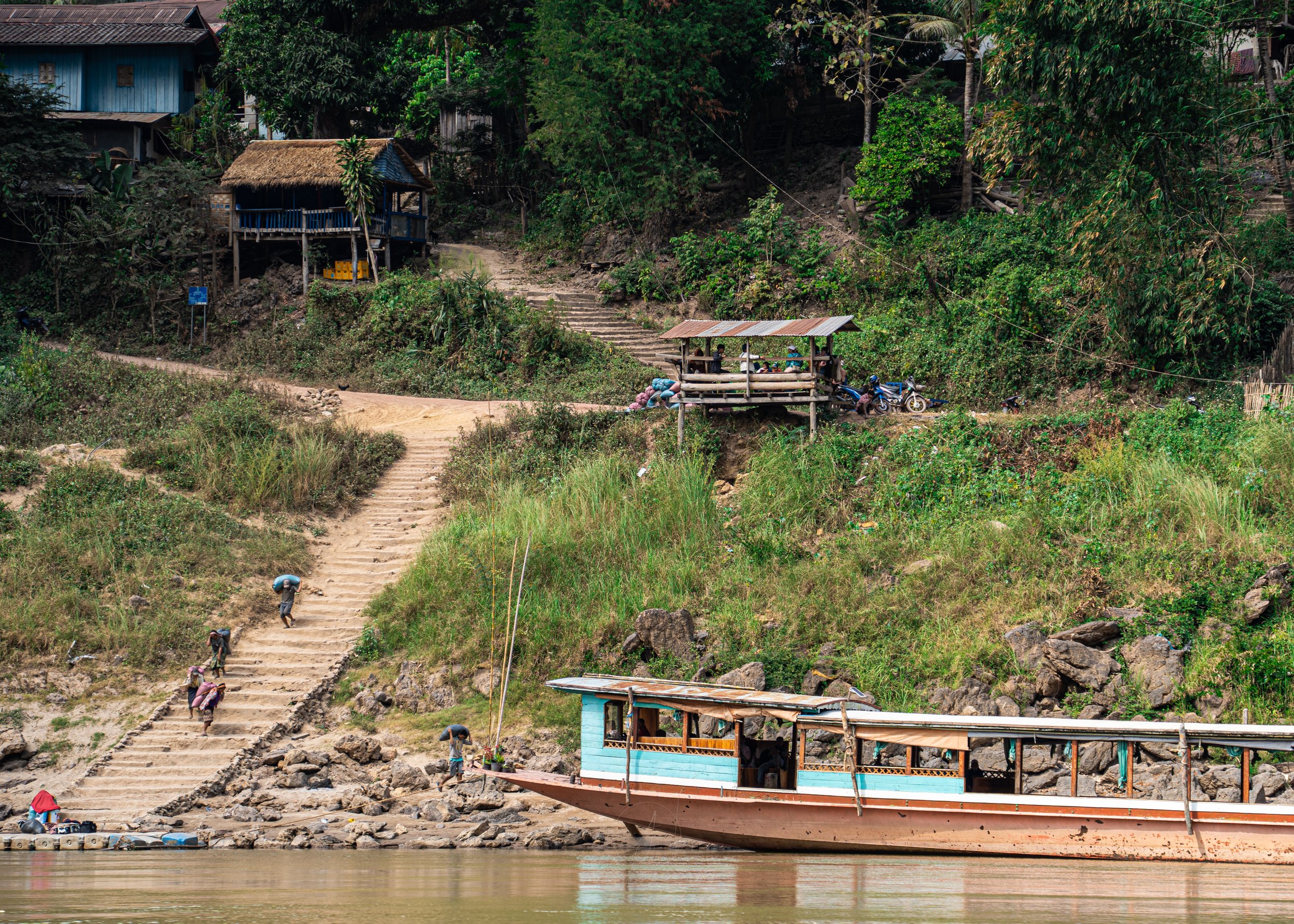
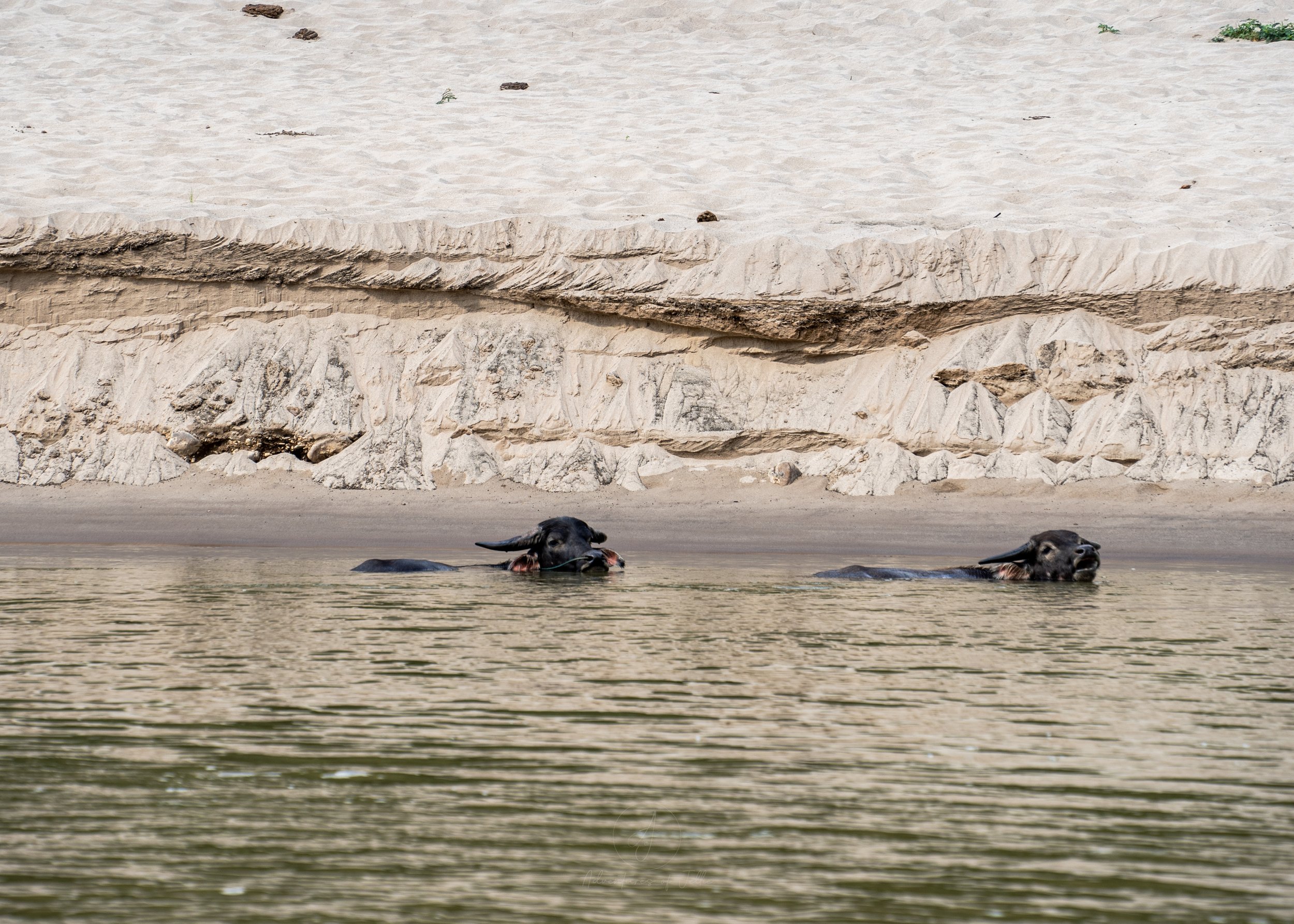
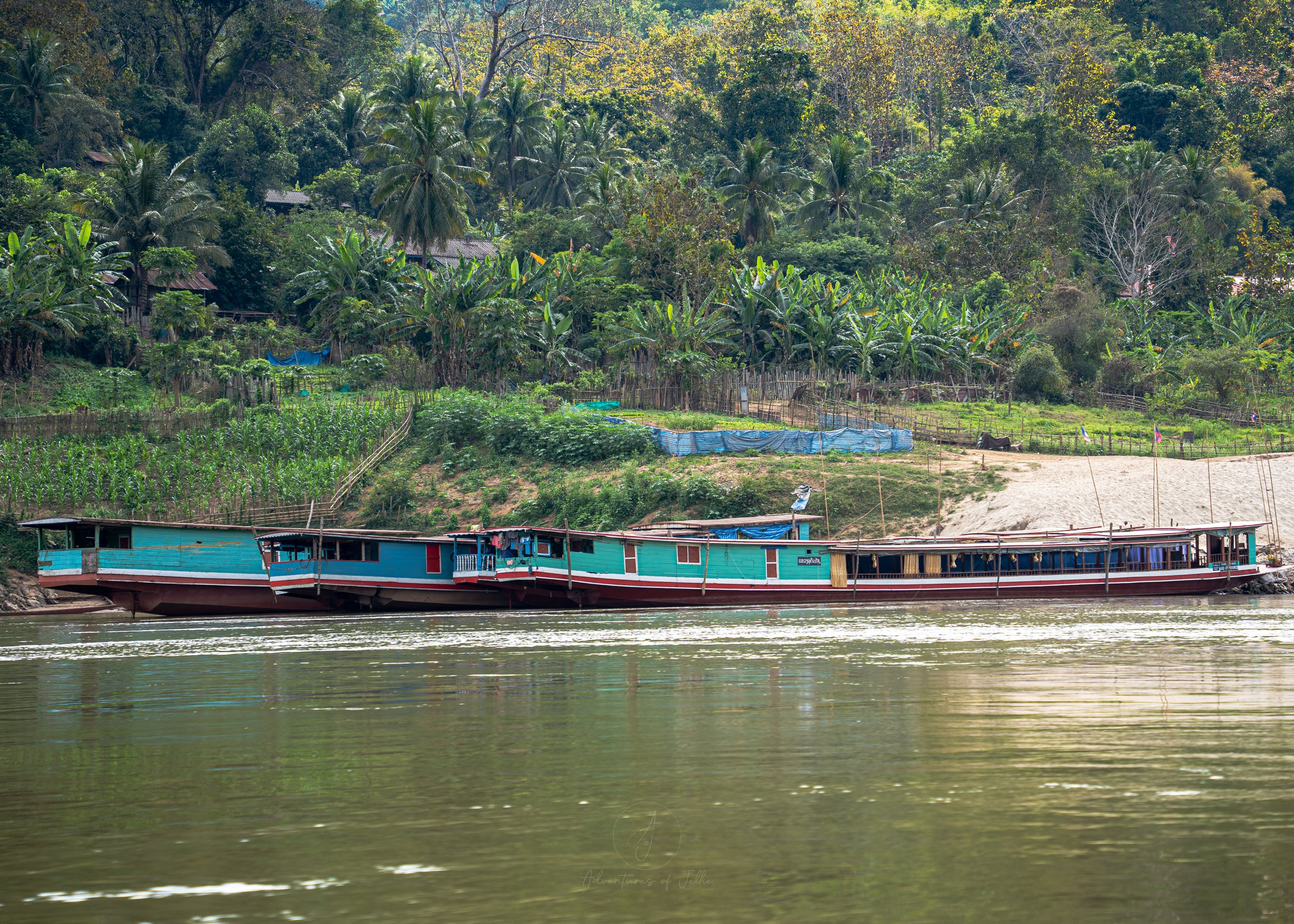
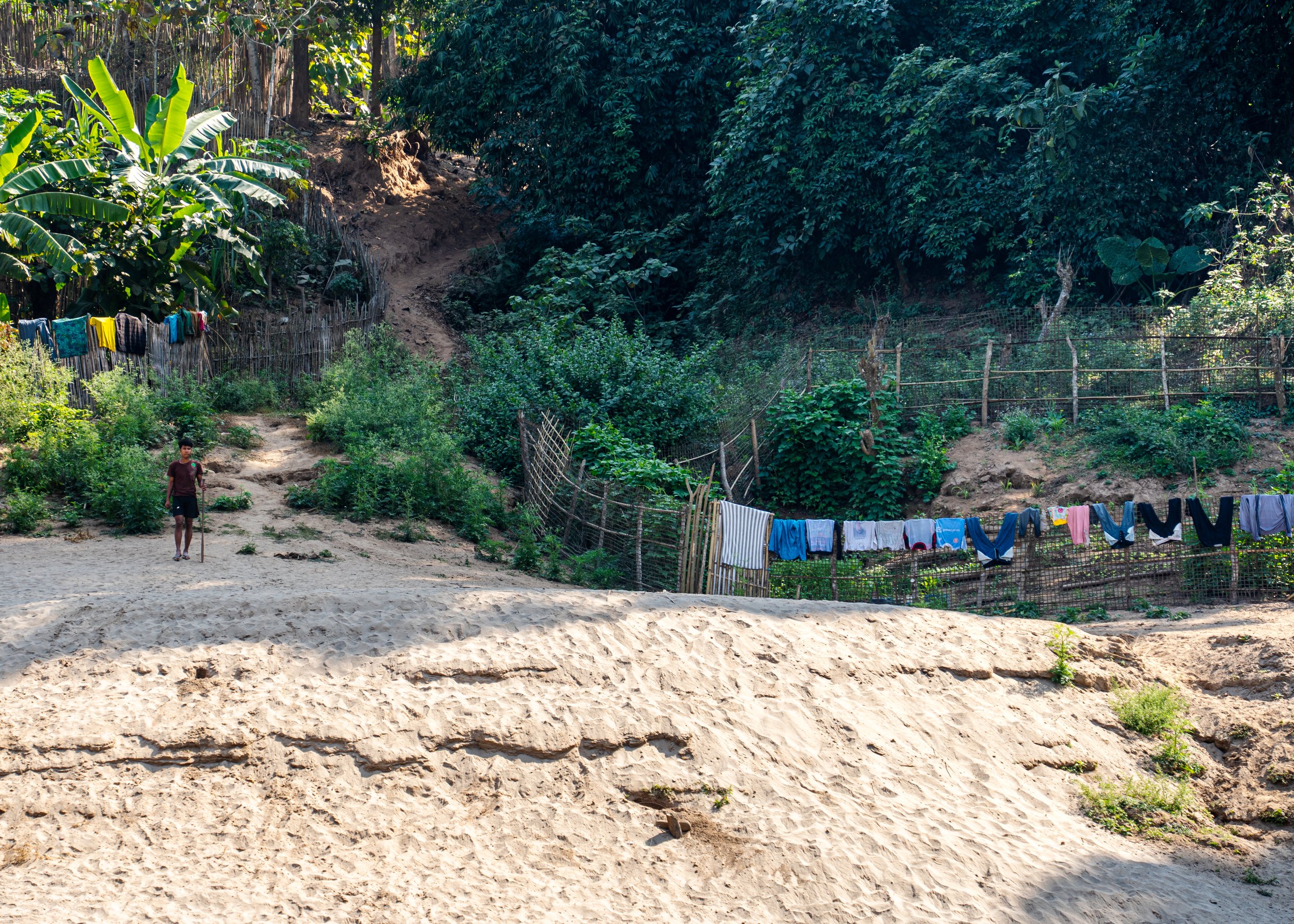
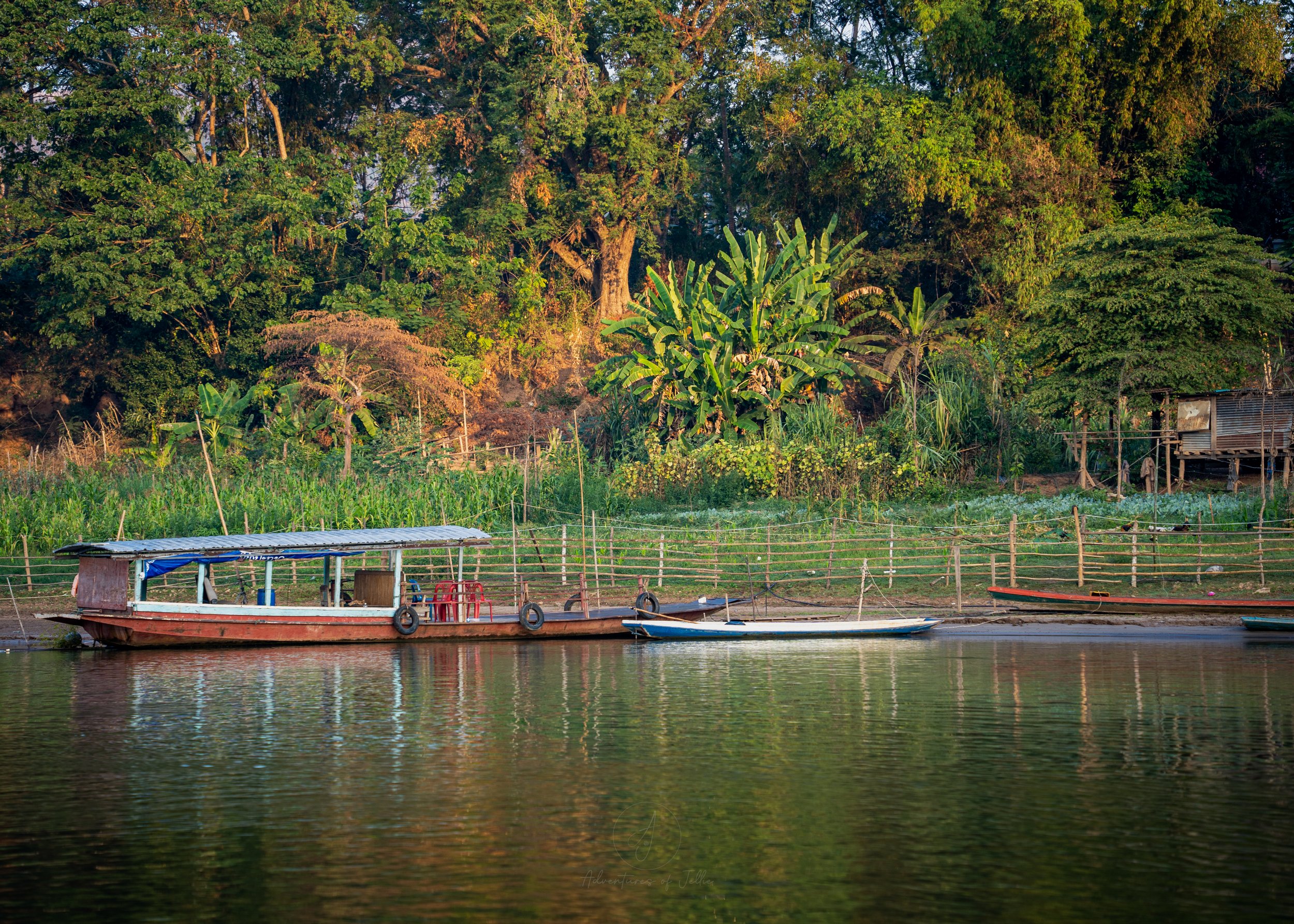

Thank you for reading,
John & Ellie x
#adventuresofjellie
If you’ve found this blog helpful, entertaining or you just fancy supporting us please click the button below!
If you’ve enjoyed reading this article, why not save the pin below?







































































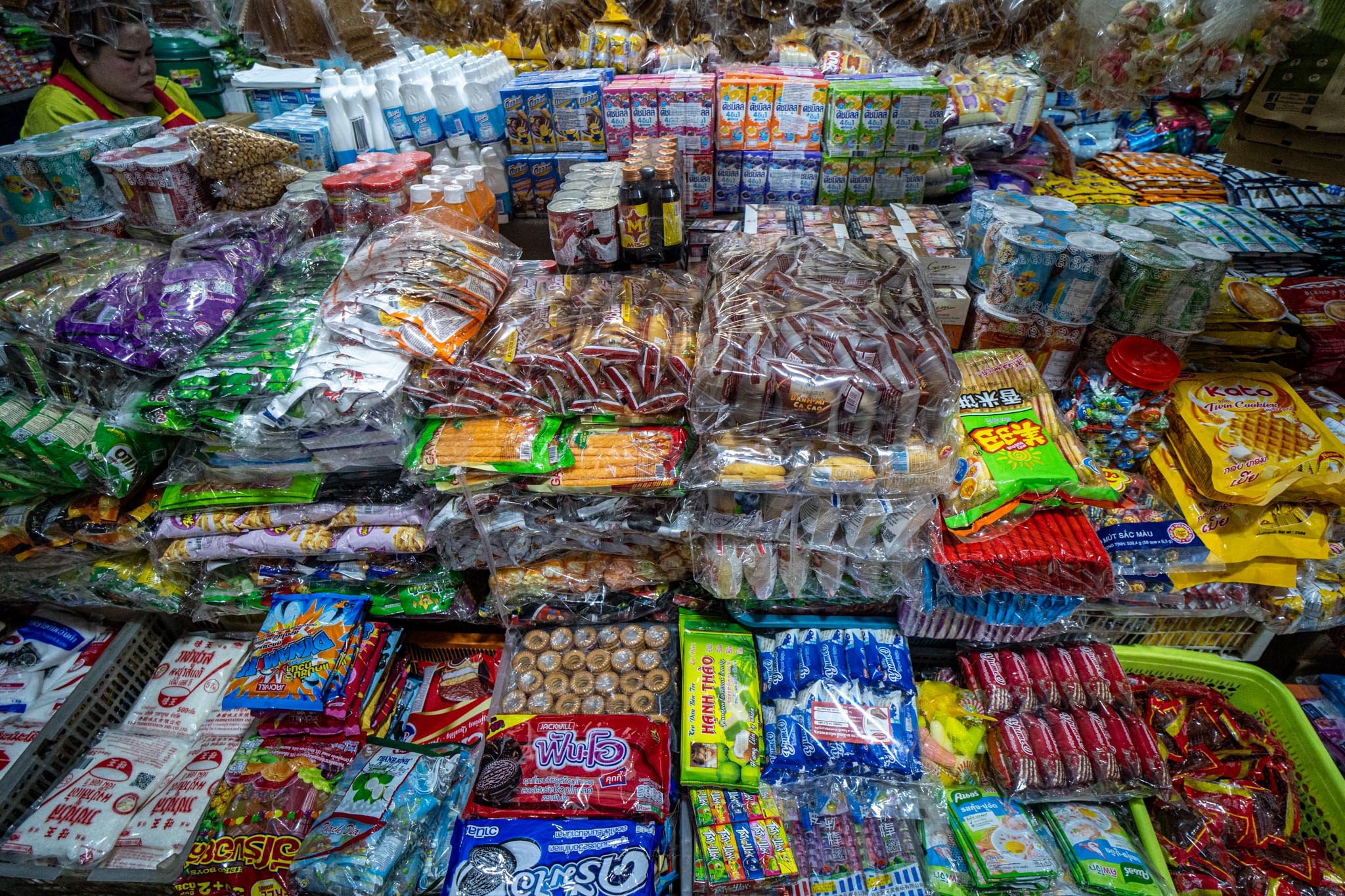










































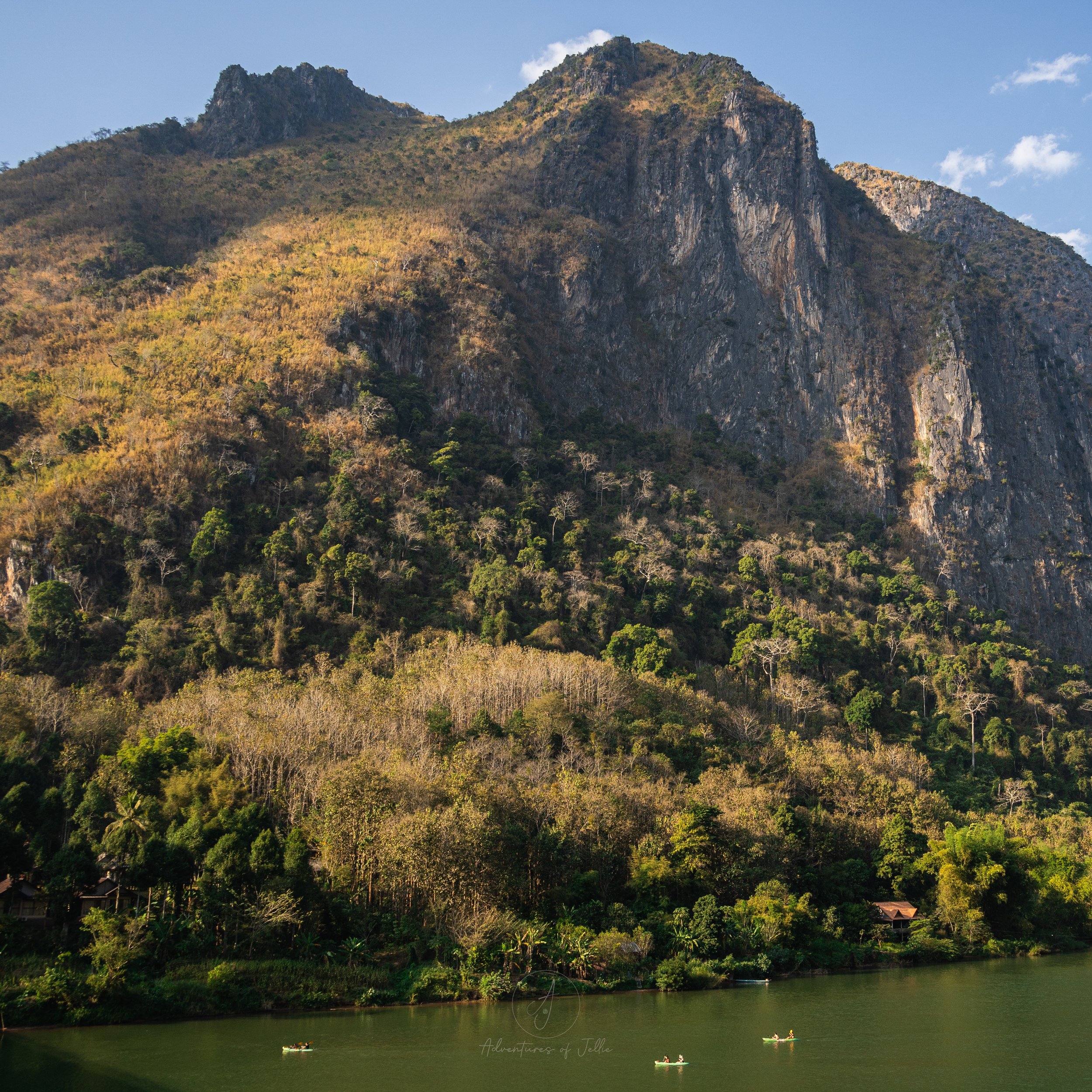





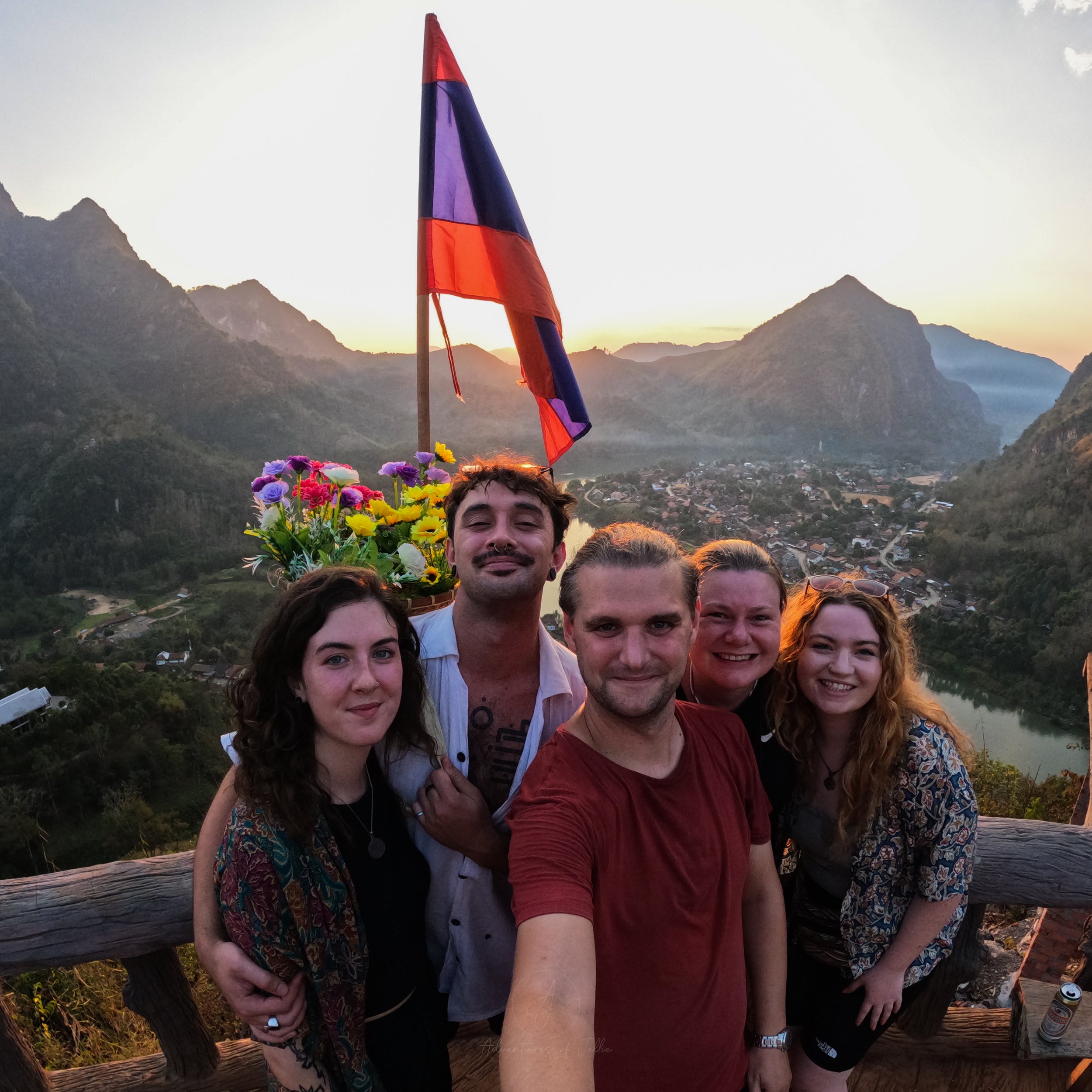

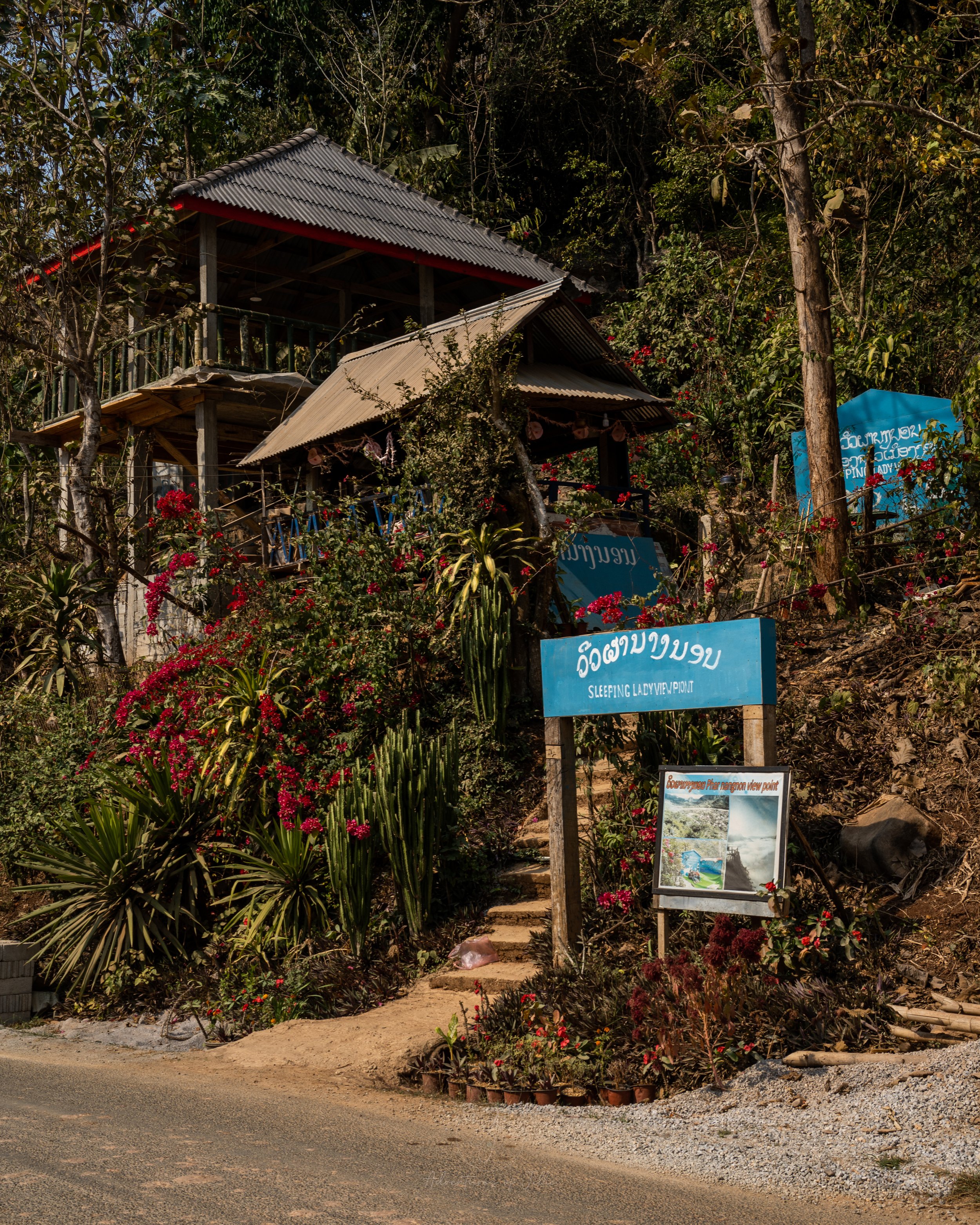









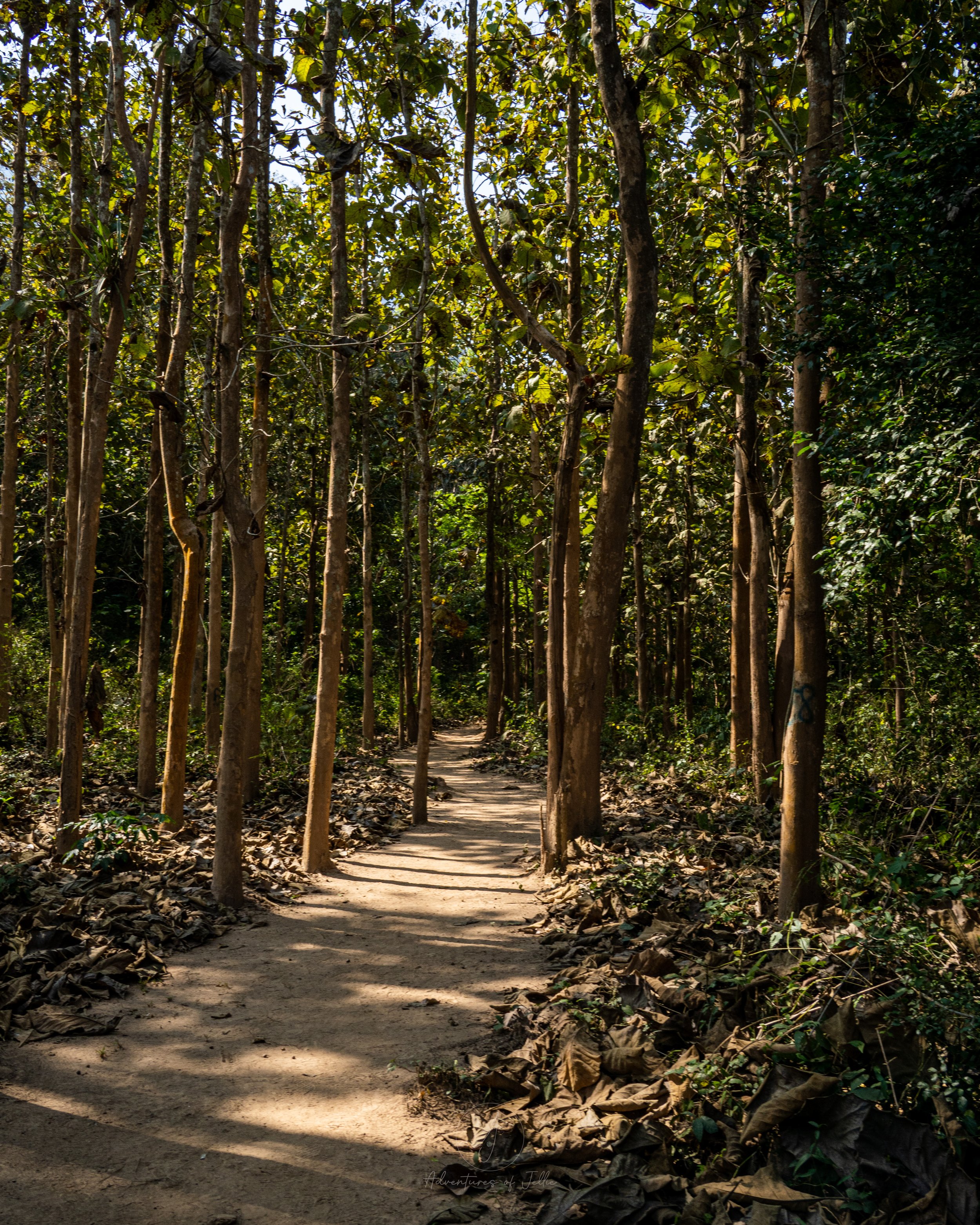



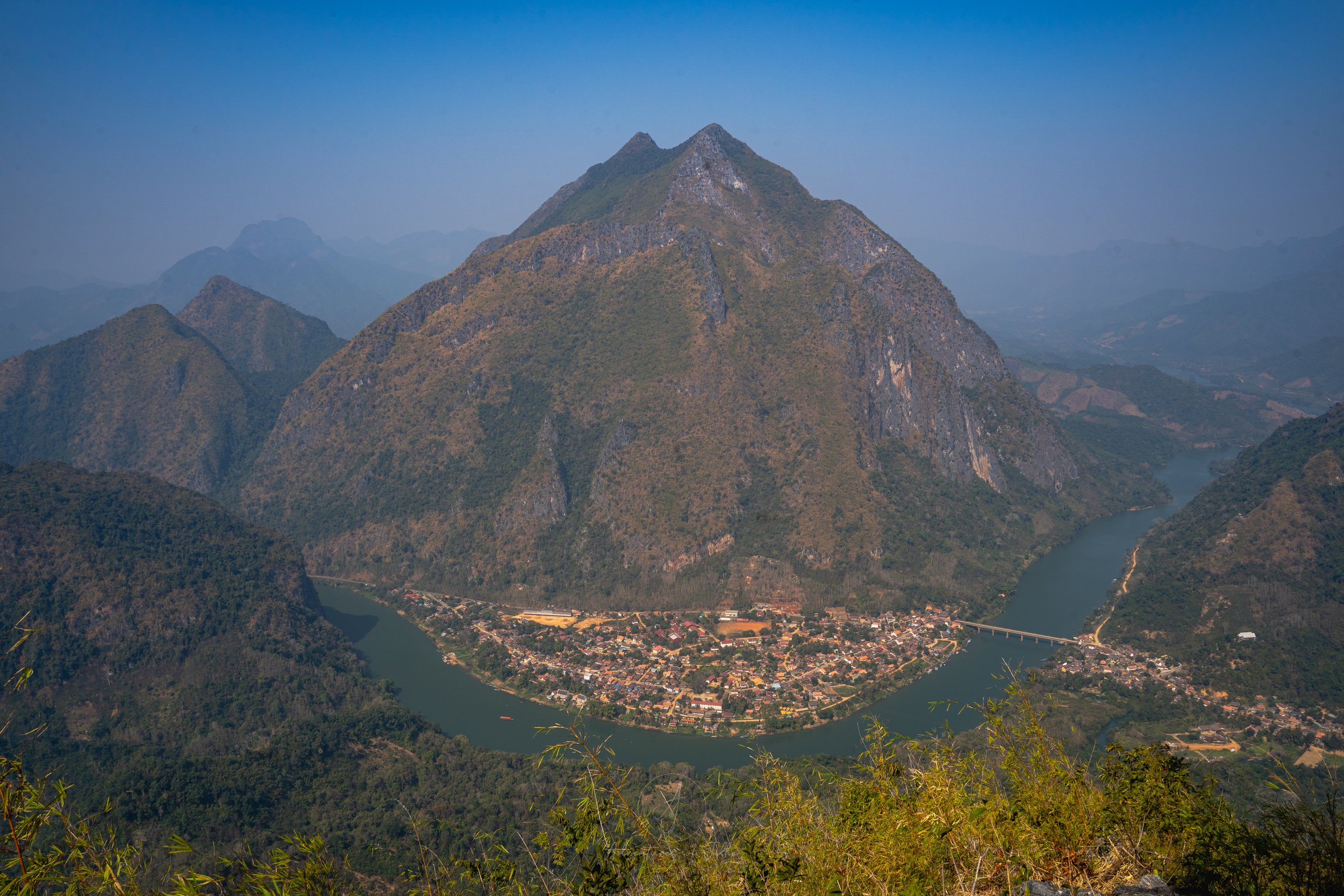
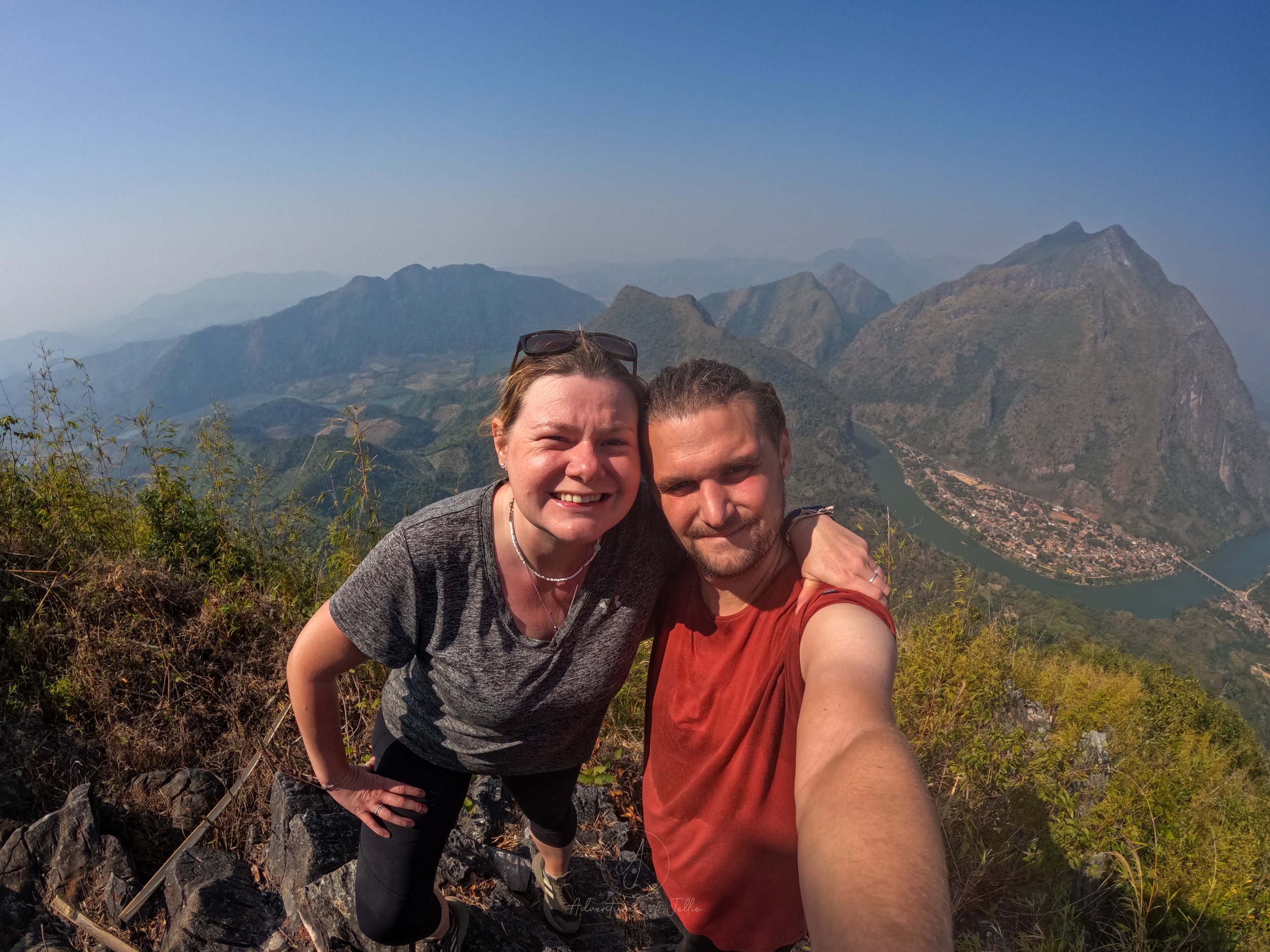










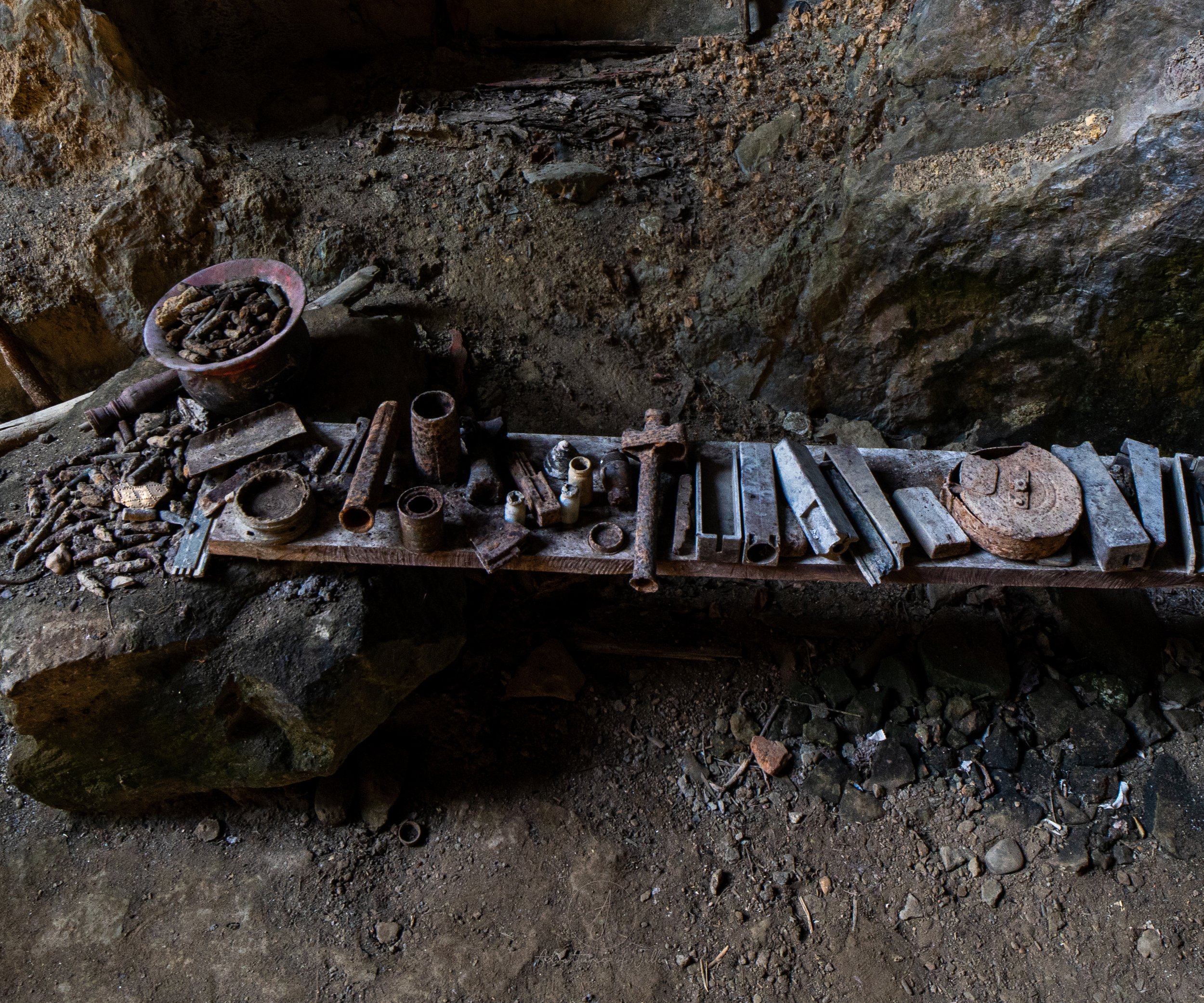



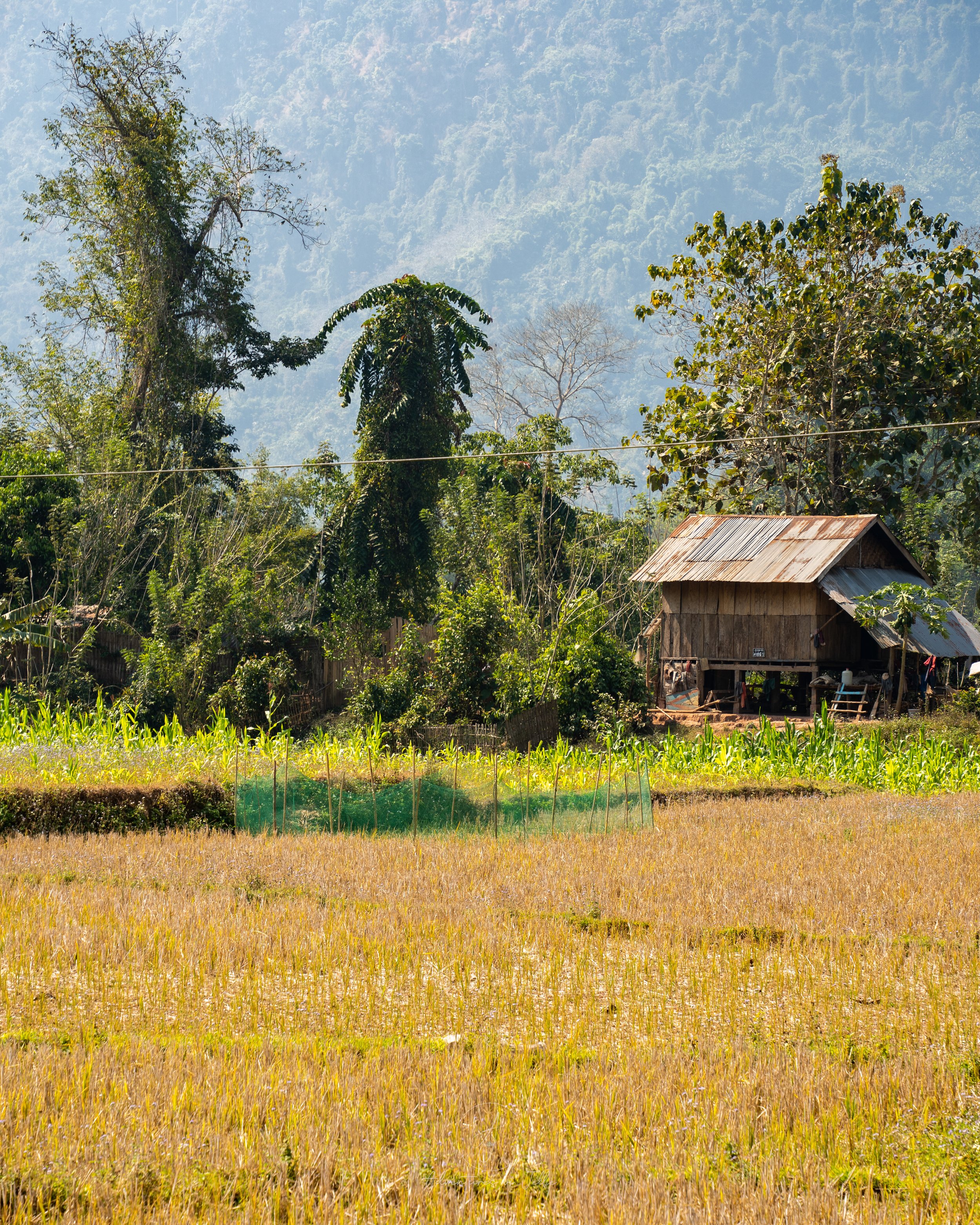


















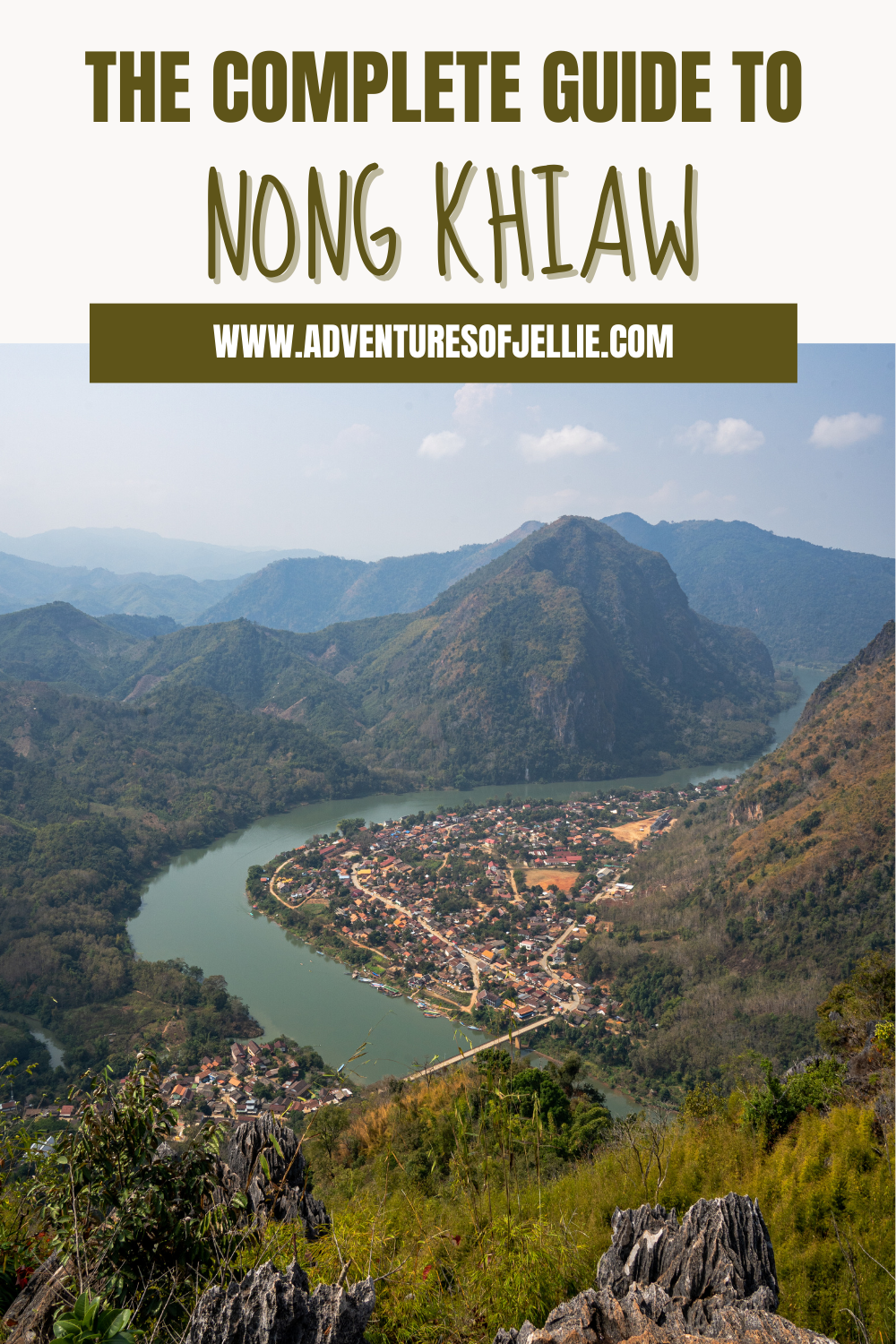














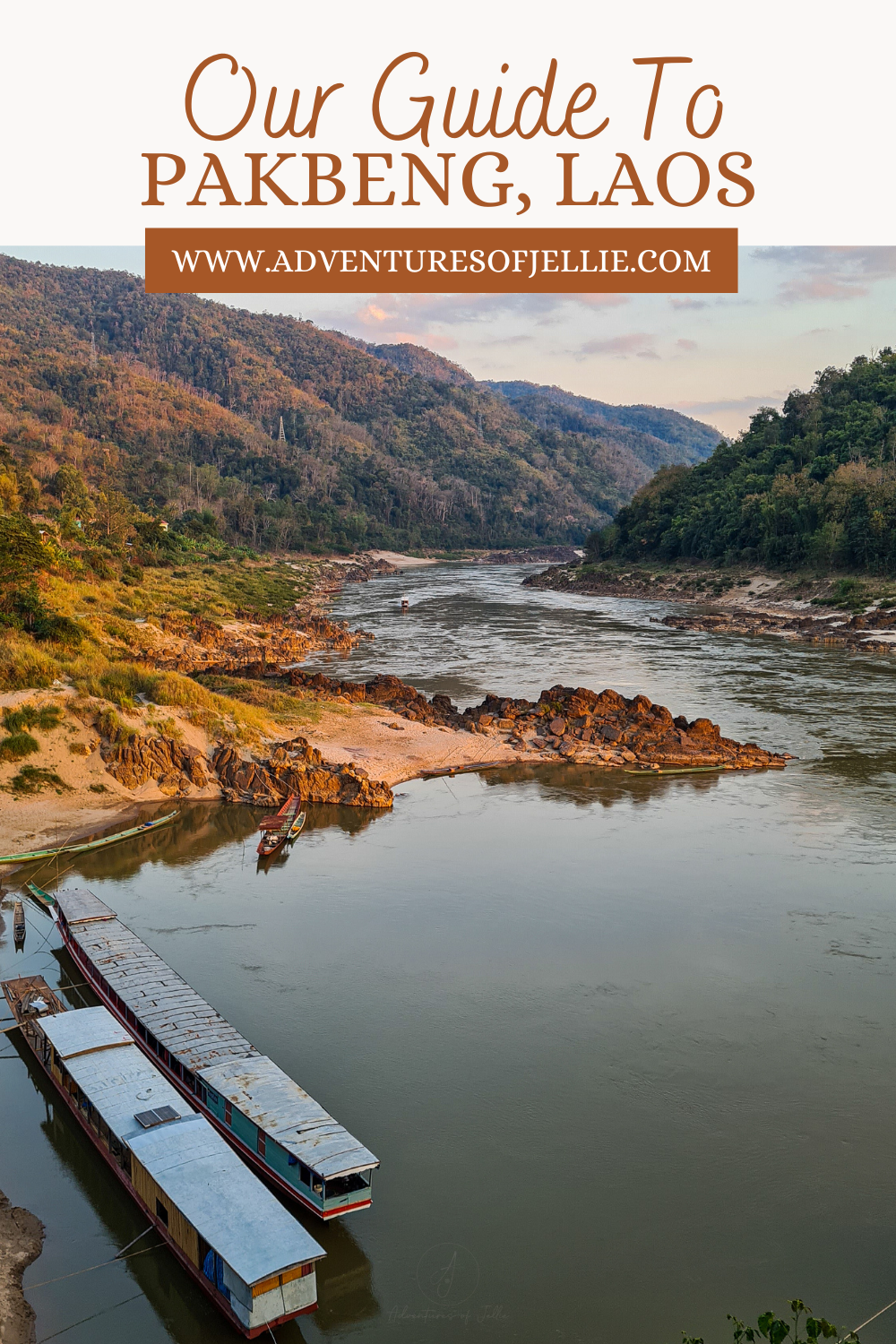





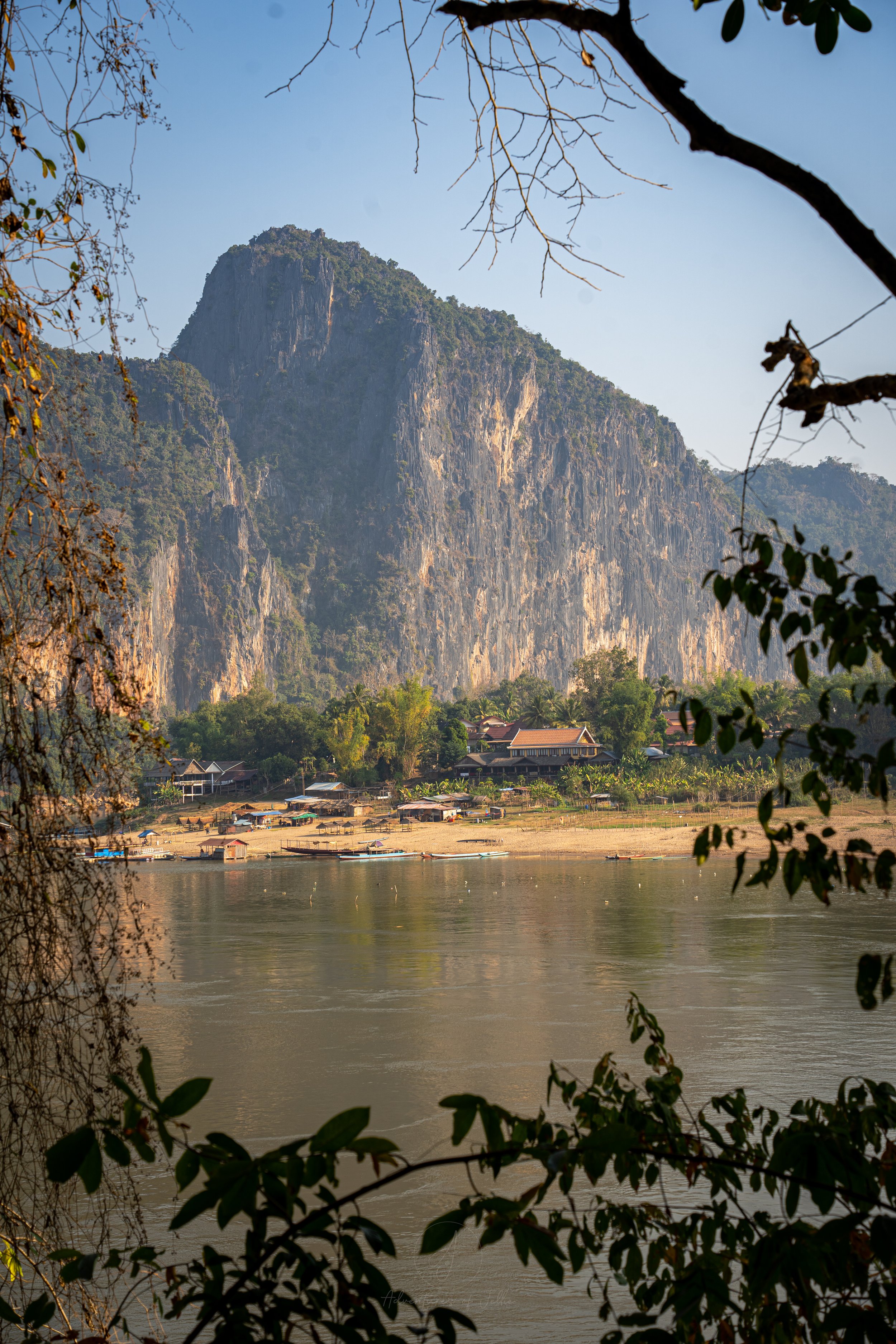










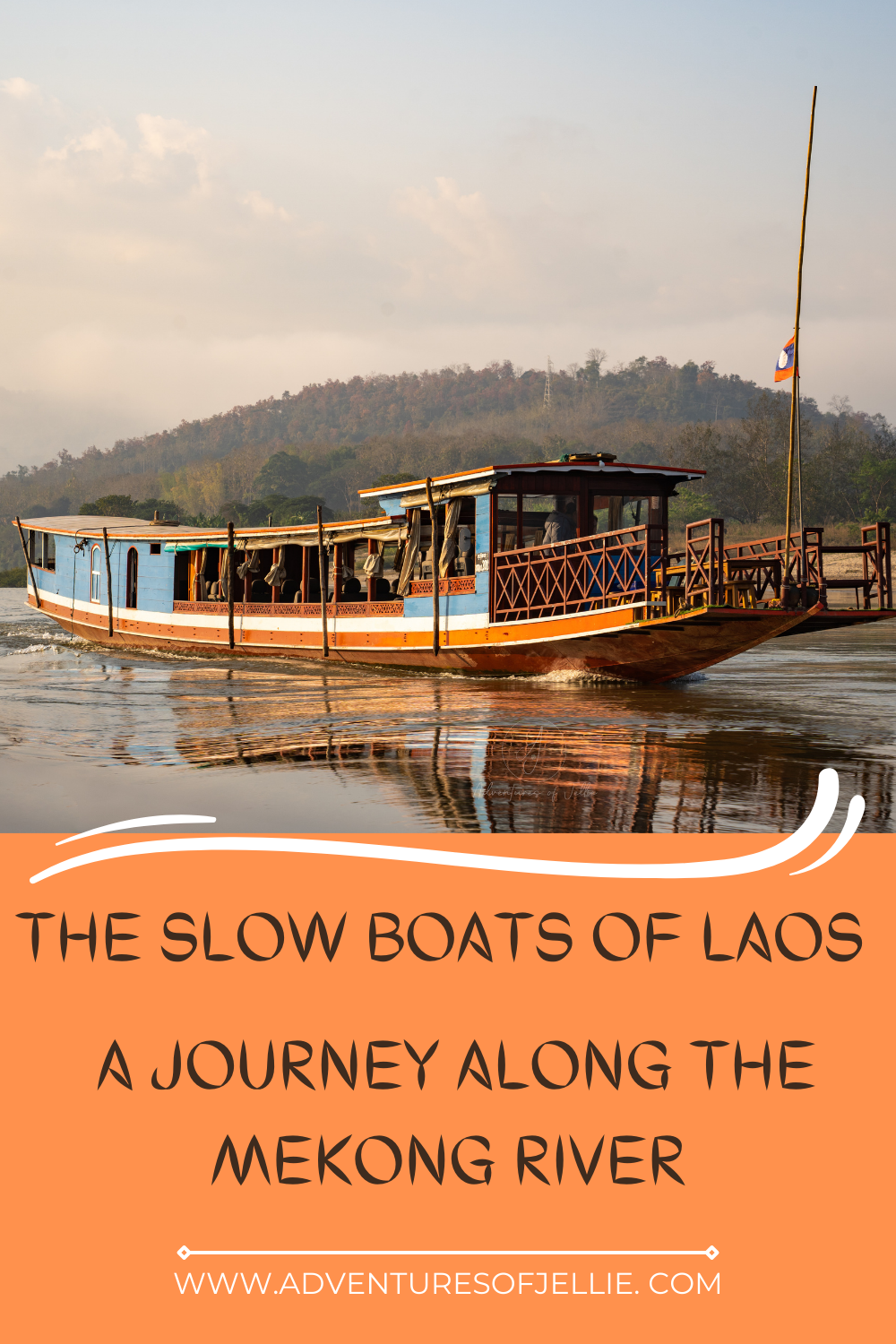
Sometime you need a bit of luxury in your life. Luckily the UNESCO World Heritage city of Luang Prabang has plenty to offer for those seeking something sumptuous. Follow us as we depart from our regular budget backpacking and indulge in the high end staying at a fantastic hotel and eating at the bougiest of bistros.